DUTCH DESIGN WEEK
envisions #DDW2017
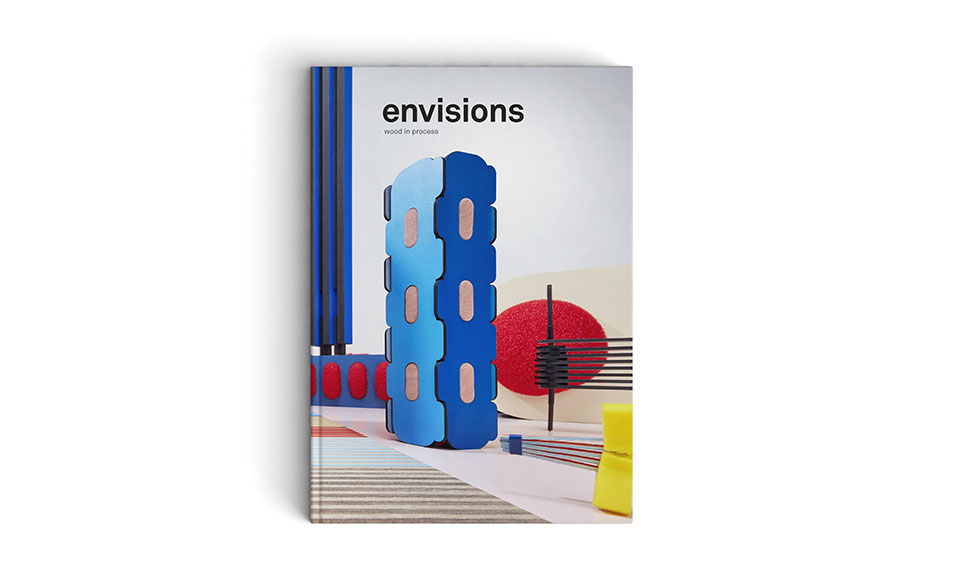
Photo: Ronald Smits / Bookdesign: Studio Aandacht
Big news:
After successfully kicking-off their first long-term collaboration with an industrial partner, the Spanish wood manufacturer Finsa, it’s time for a new book from Envisions.
The book ‘Wood in process’ will offer a unique insight into the collective research and will reveal how the experiments of the enthousiatic Envisionaires pushed the limits of Finsa’s materials to new innovative opportunities.
For this book, Envisions teamed up with Studio Aandacht, drukkerij Zwaan, text editors Floor Kuitert & Lauren Grieco and photographer Ronald Smits in order to create the best possible addition to your book collection, starting with a preface by Hella Jongerius.
You will find all the samples and interviews of the participating Envisionaires Aukje Fleur Janssen, Iwan Pol, Thomas Trum, Robin Pleun Maas, Jeroen Van De Gruiter, Sanne Schuurman, Roos Gomperts, Roel Deden, Simone Post, Vantot and Elvis Wesley
If you can't wait until 21-29 October, you can pre-order the book online
About the Upcoming exhibition during Dutch Design Week:
Its a game of give and take
Designers, architects and artists love to dream up prospects about the future and the solutions design can deliver to make things better. Utopian or necessity? As a collective of bright young designers envisions has been working for the last 2 years stretching the imaginary gap between disciplines while developing new materials, open source concepts and new found collaborations with the industry.
At VDMA during Dutch Design Week the time has come to make sensible relations between the aspects of envisions and other disciplines and initiatives of the creative industry. It’s time to play the game of give and take; share know-how and crafts is essential to make sensible products. Following two very successful exhibitions in Milan and New York, envisions turns VDMA into the home of a whole new perspective of visionary/daring/models & aspirations in fruitful collaborations with the likes of colleagues, artists and brands such as Dirk Vanderkooij, WOTH magazine and Dave Hakkens.
So start of your Dutch Design Week and visit the VDMA hotspot bursting with energy, experiment and envisions optimism in the heart of Eindhoven. Find VDMA , Vestdijk 25 Eindhoven, next to Pullman Hotel, 7 min walking distance from Central Station.
Tatjana Quax
VDMA
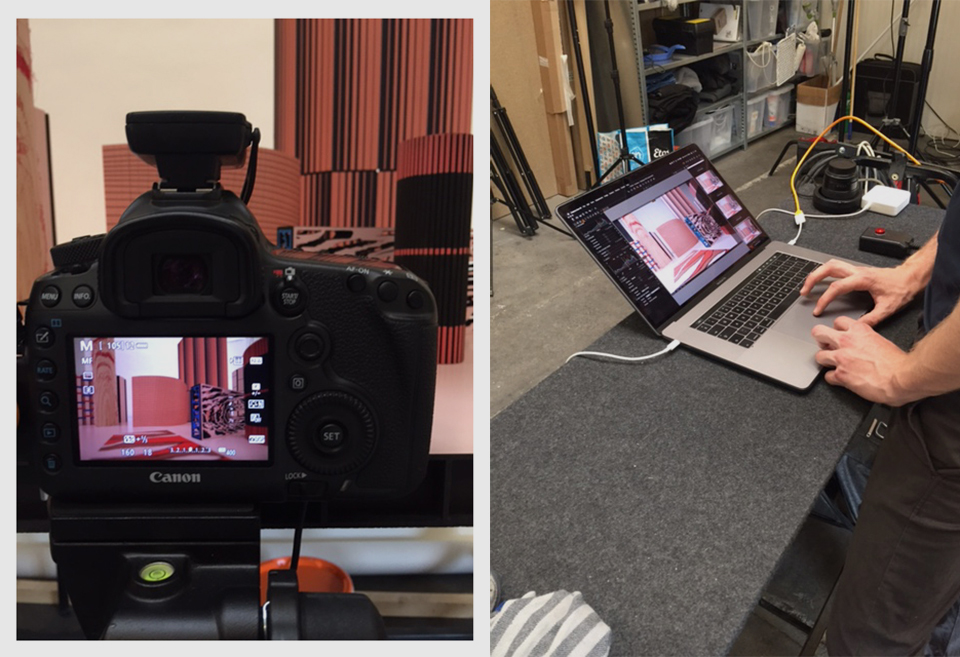
Photo: Ronald Smits / Bookdesign: Studio Aandacht
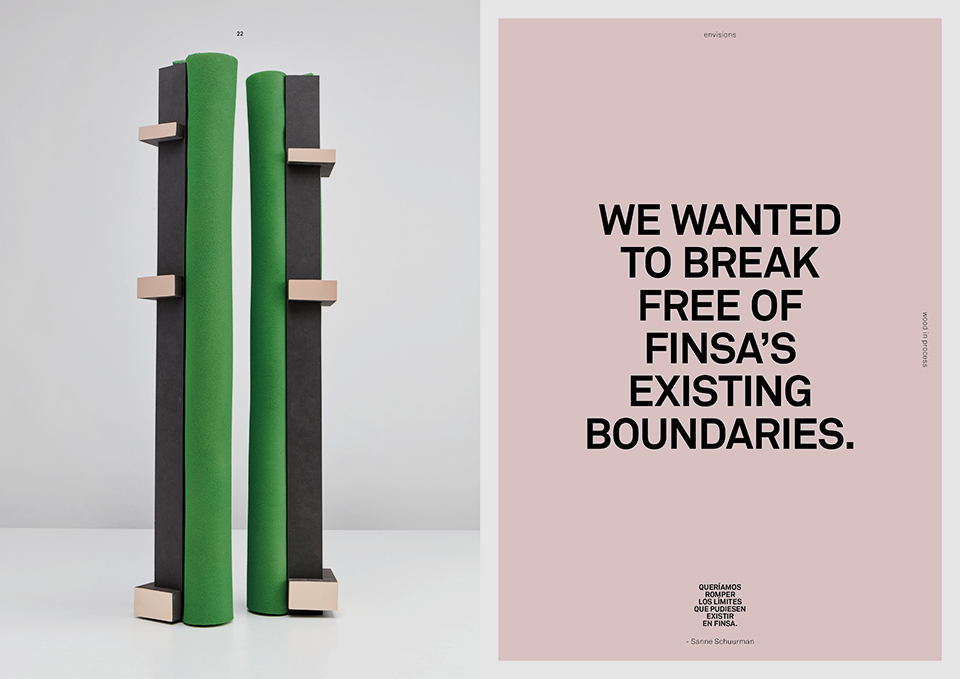
Photo: Ronald Smits / Bookdesign: Studio Aandacht
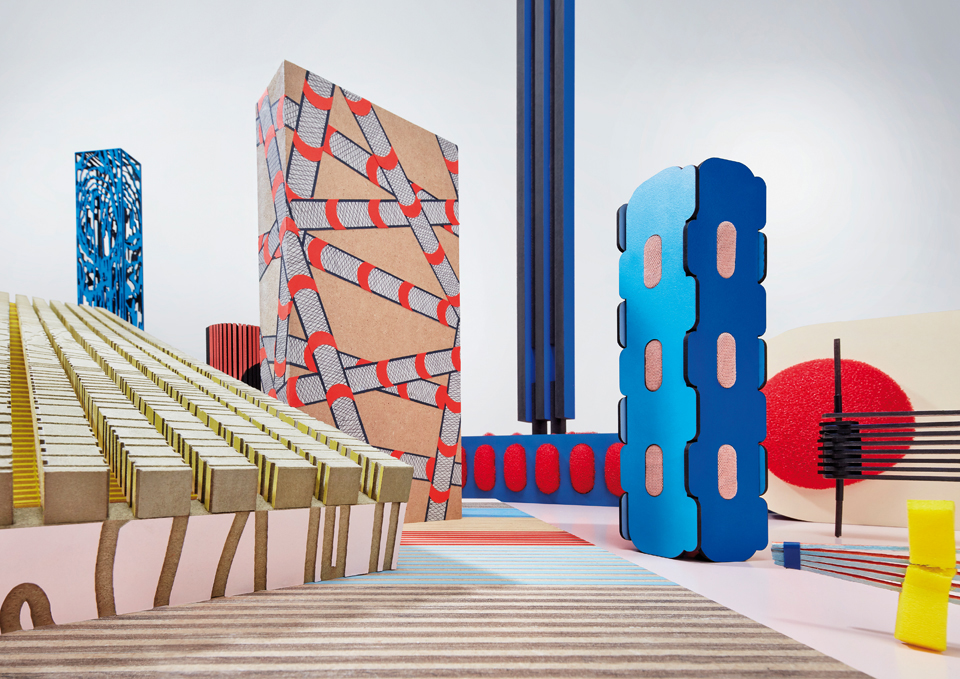
Photo: Ronald Smits / Bookdesign: Studio Aandacht
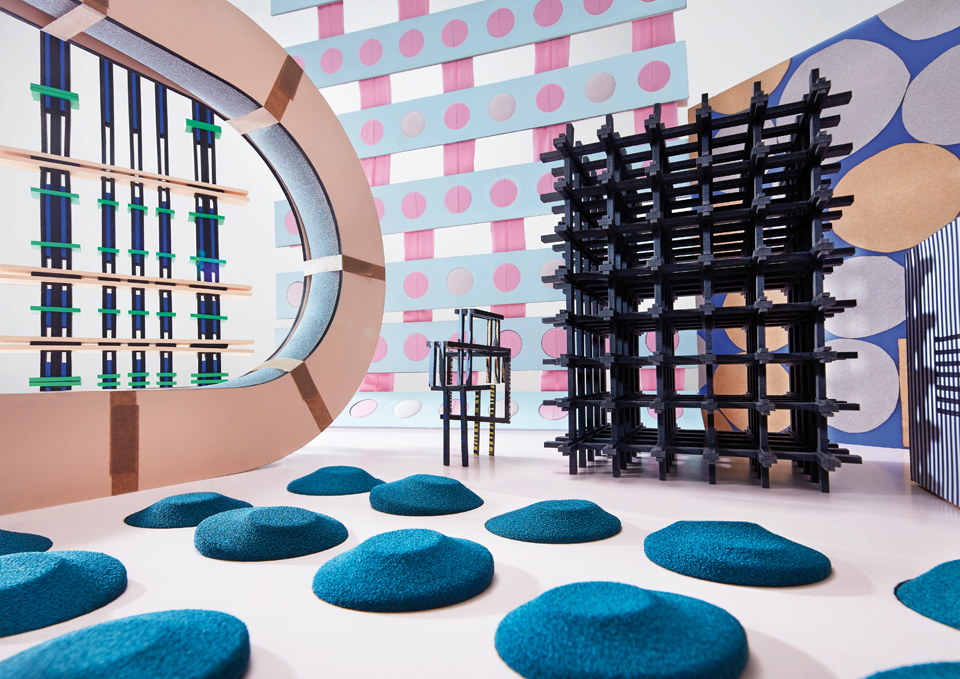
Photo: Ronald Smits / Bookdesign: Studio Aandacht
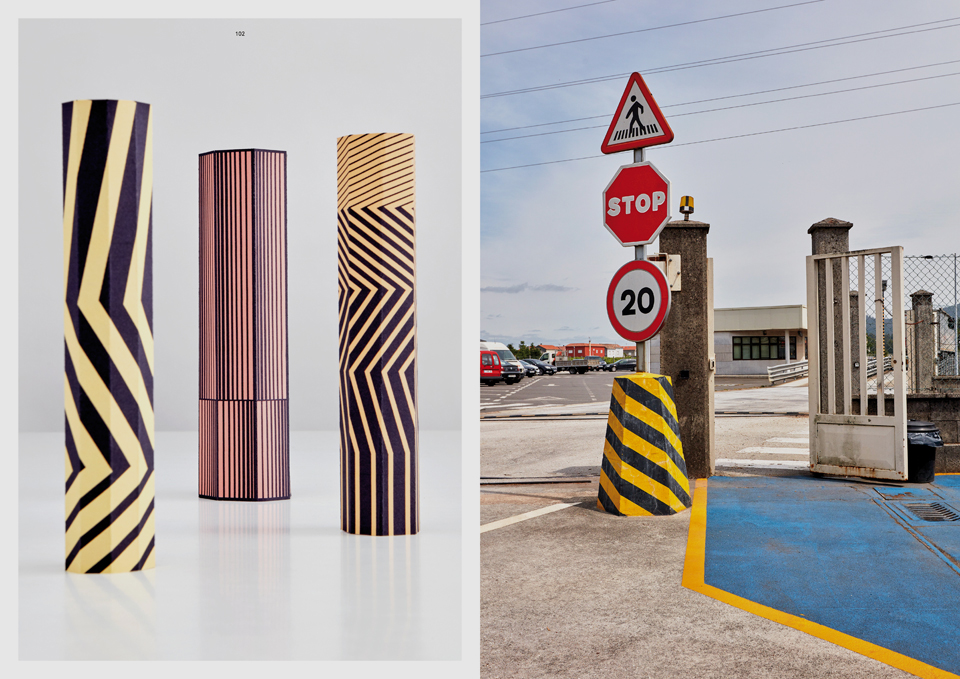
Photo: Ronald Smits / Bookdesign: Studio Aandacht
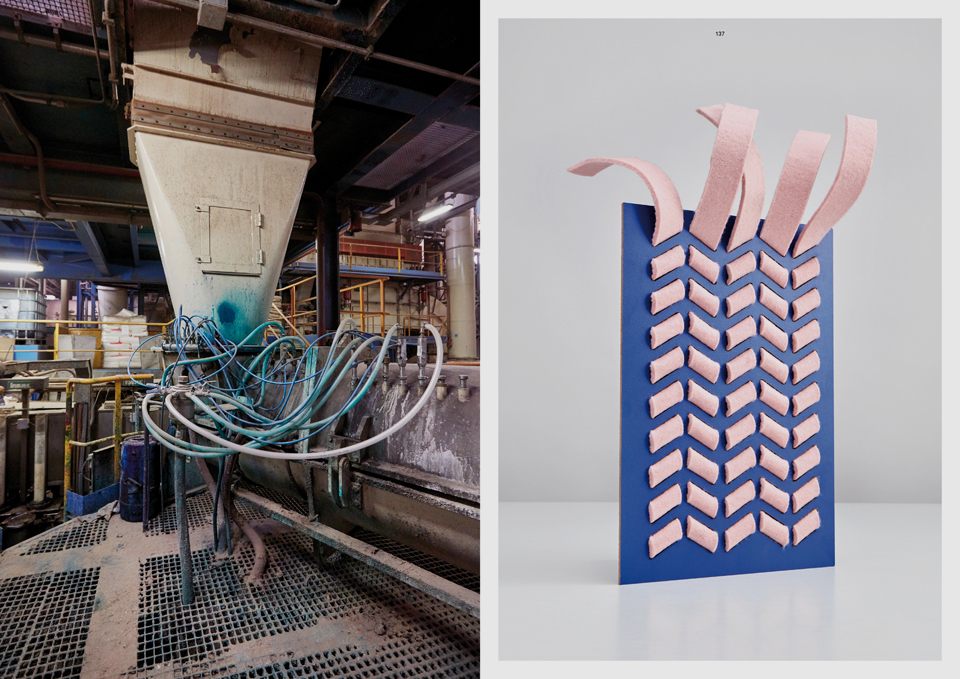
Photo: Ronald Smits / Bookdesign: Studio Aandacht
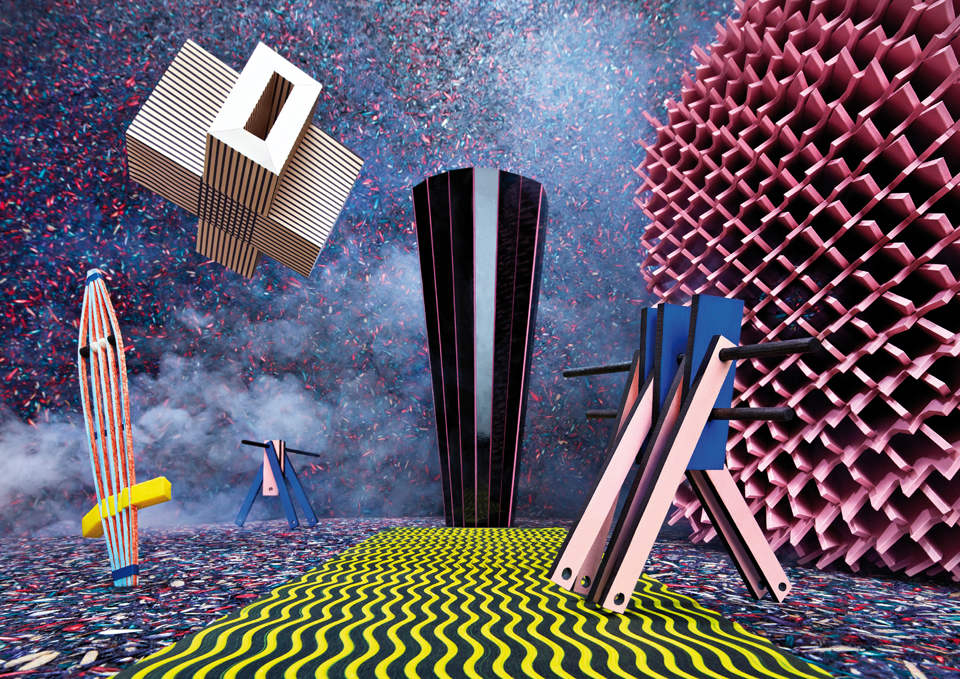
Photo: Ronald Smits / Bookdesign: Studio Aandacht
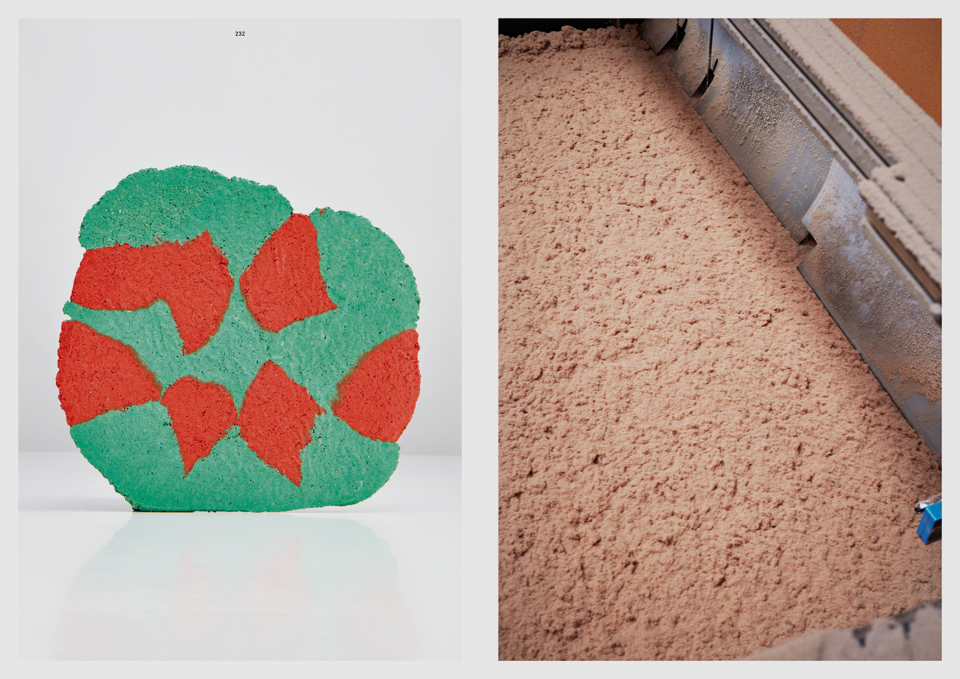
Photo: Ronald Smits / Bookdesign: Studio Aandacht
shaping sexuality #DDW2016
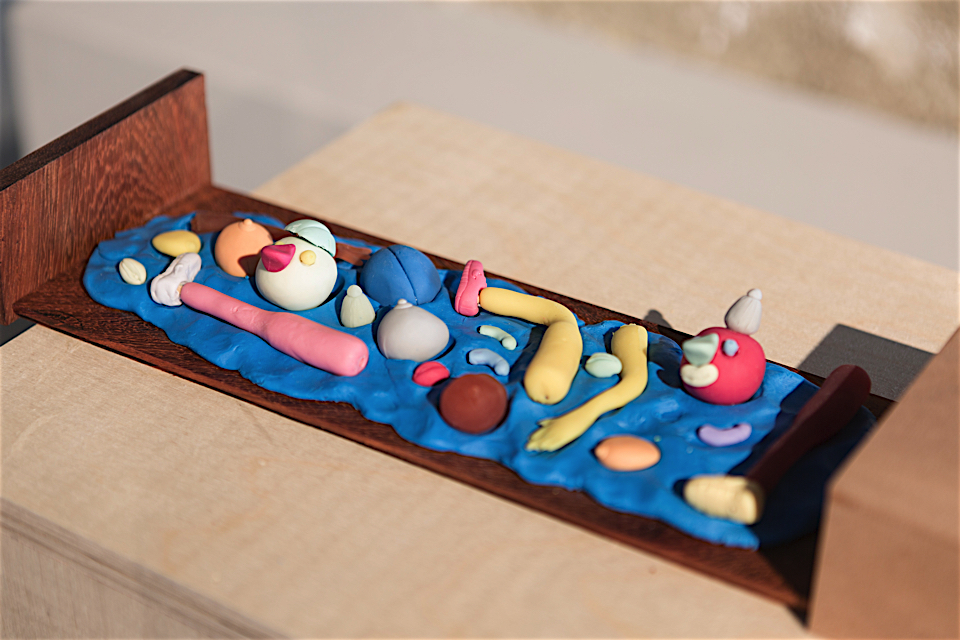
Photo by Teun van Beers - Design by Janne Schimmel
What is sexuality? What can it be? Can it be more than the sexuality that is presented in pornography? The curators of MU want to try and feed, trigger, punch or tickle people in their “For Play, Shaping Sexuality” exhibition, so the visitor’s imagination starts sparkling. Physicality and imagination are the two themes For Play is centred around. Co-curators Sanne Muiser and Tom Loois often miss the kind of spontaneity and inventiveness that can make sex such good fun. So they asked 30 artists and designers for alternative visions: more playful, vulnerable, and more original.
As Muiser says: “ There is such a taboo to talk about sexuality and to shape about it. Because usually very fast we go back to pornographic images while the field is so much wider than that and we should be aware of that. Sexuality is fun and playful and we are missing that right now. There is a very big gap between pornography and our story”.
The exhibition For Play is playing with sexual thoughts and with the body, and stretches the boundaries of “how to behave” to “how you can”. The visitor will be exposed to a wide variety of products, installations and performances.
Philosopher Martha Nussbaul argues that shame originates from a sense of incompleteness, of a lack of control in her work Hiding from Humanity. To stigmatise people and groups who are not normal shame of our imperfections are being reinforced by a tendency in society. Dorota Radzimirska shows in her work I Converse Silently that the consequences for the relationship with your body and sexuality can be devastating. Then again other artists move past shame with very literal works about sexuality. These 30 artists give us alternatives on how we can deal with the most intimate feelings and how to express them.
MU is an adventurous guide in the suburbs of art of today and tomorrow, for a wide and mainly young audience. It is a dynamic space located on Strijp S in Eindhoven, where the exhibition took place.
Claire Gralund
For Play, Shaping Sexuality -
MU artspace, Eindhoven NL - Images by Teun van Beers
www.mu.nl
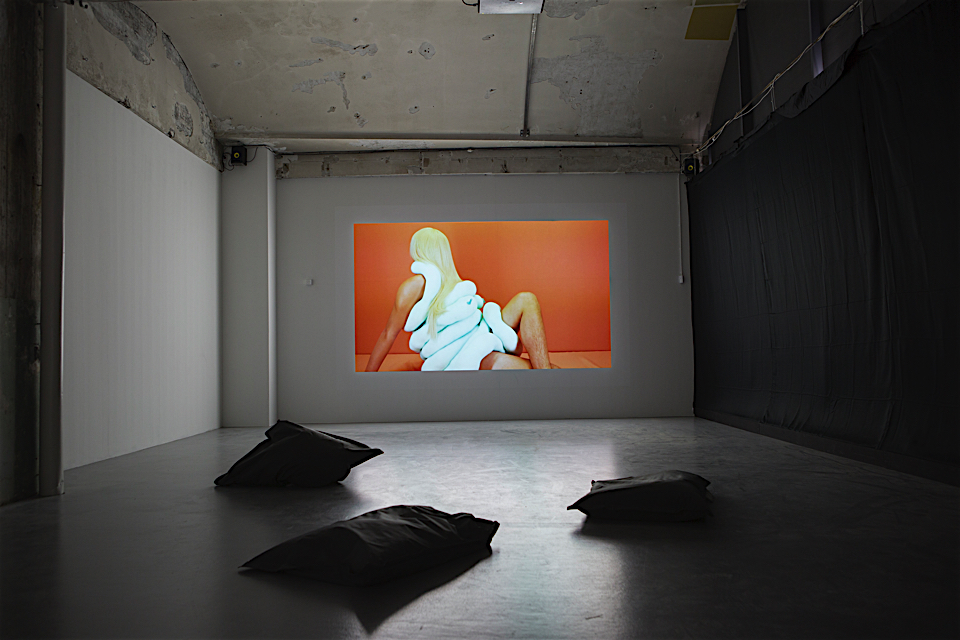
Teun van Beers Design by Babeth Rammelt.jpg
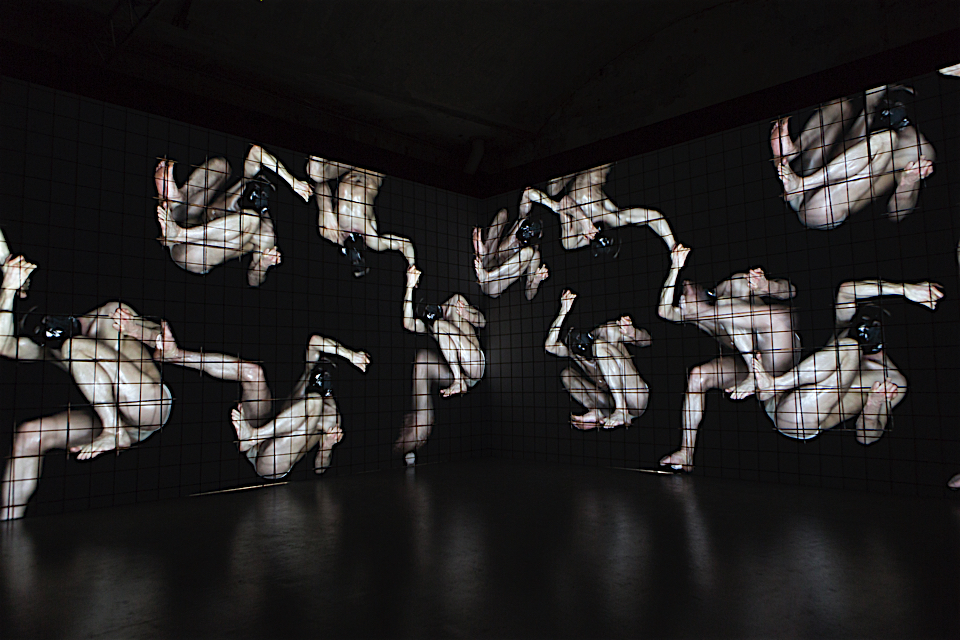
Teun van Beers Design by Babeth Rammelt.
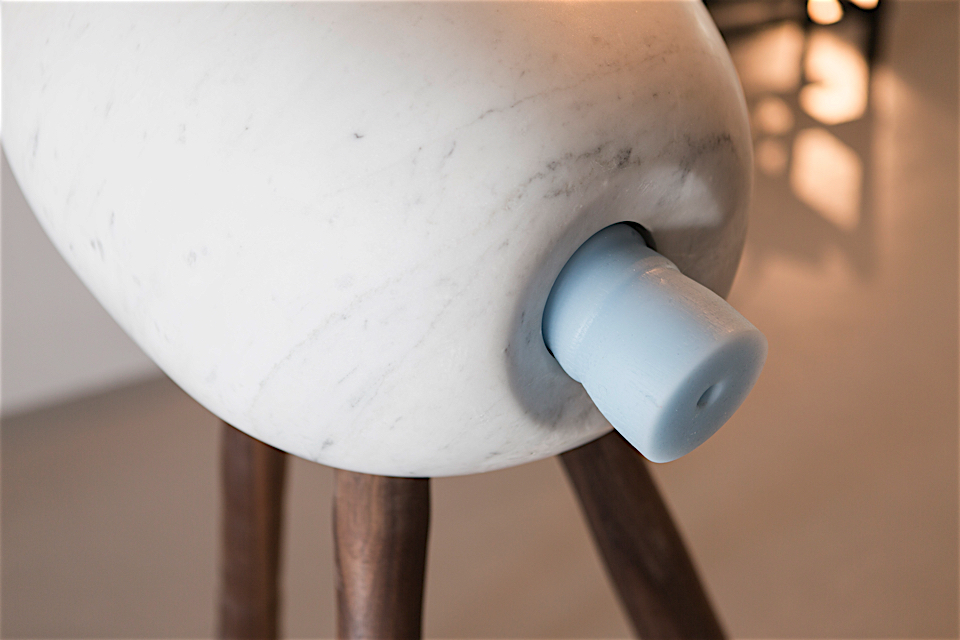
Teun van Beers Design by Babeth Rammelt
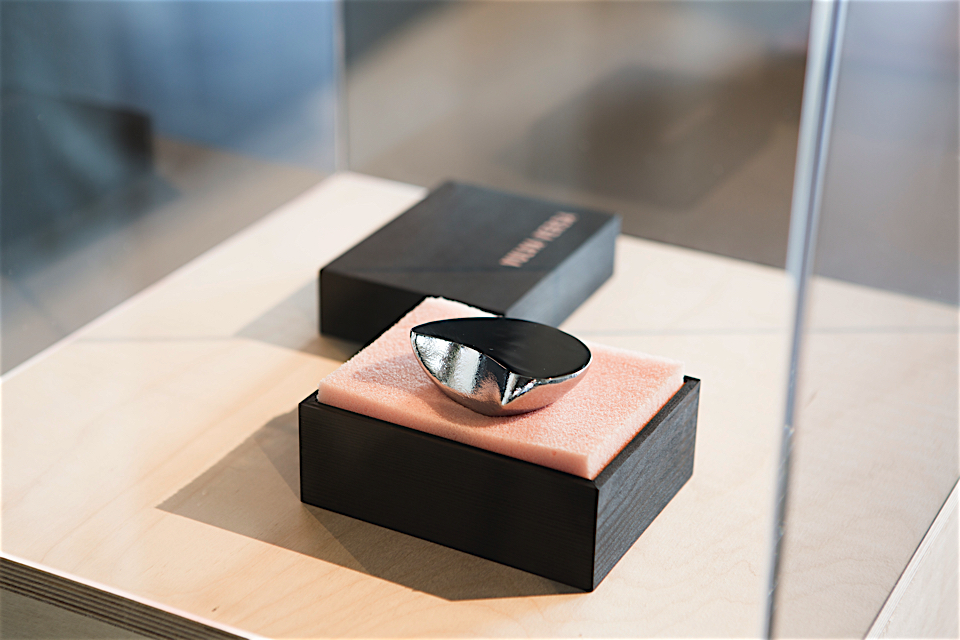
Teun van Beers Design by Michèle Degen
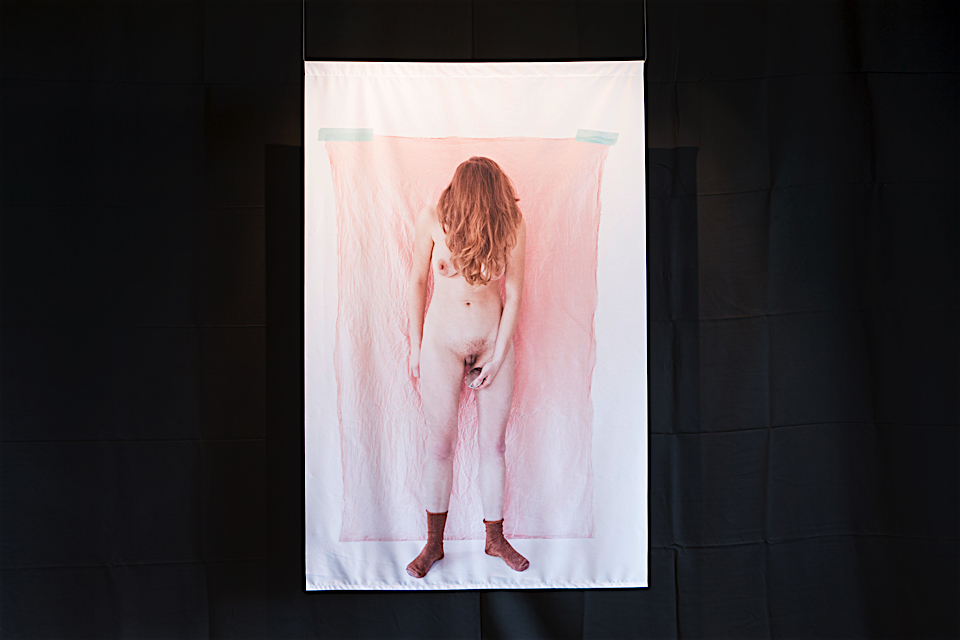
Teun van Beers Design by Michèle Degen
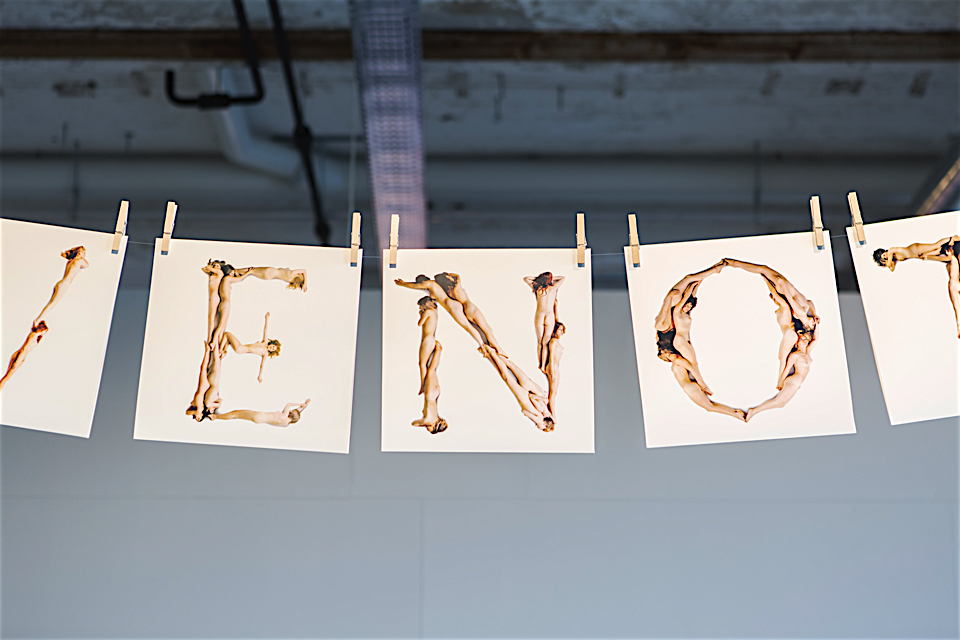
Teun van Beers Design by Anthon Beeke
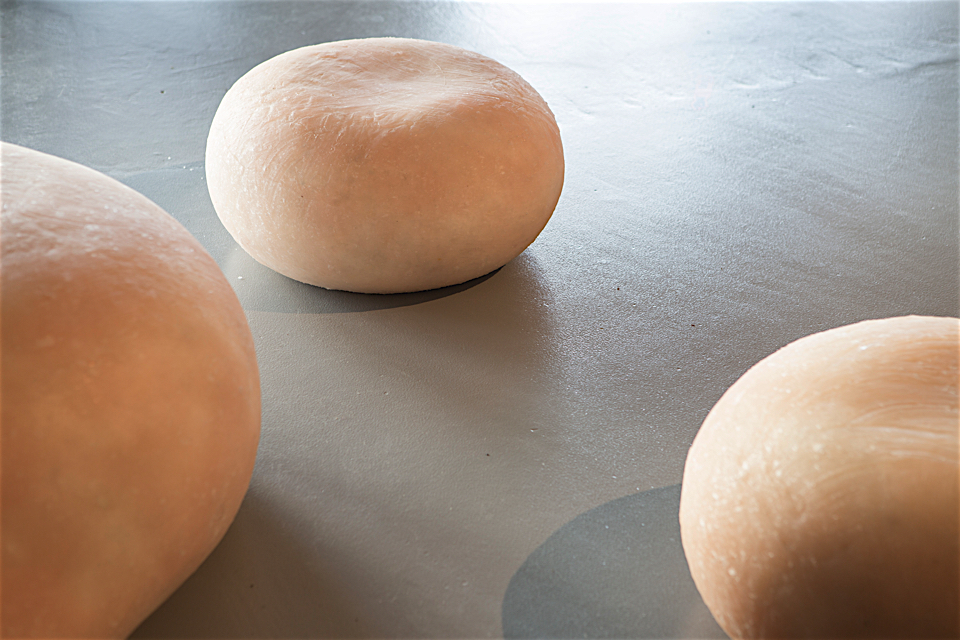
Teun van Beers Design by Gigi Barker
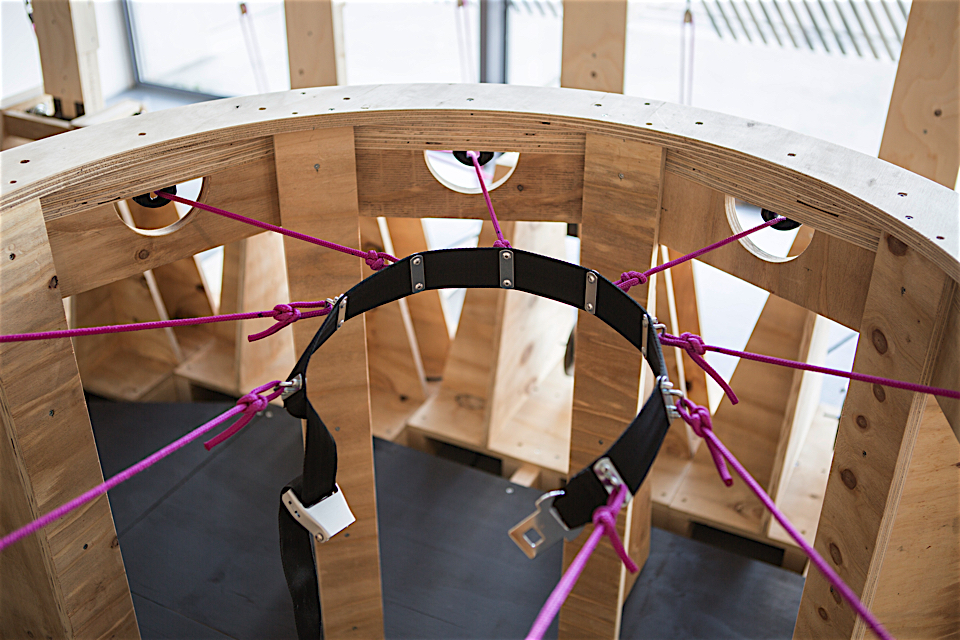
Teun van Beers Design by Joost Gegem & Tiddo Bakker
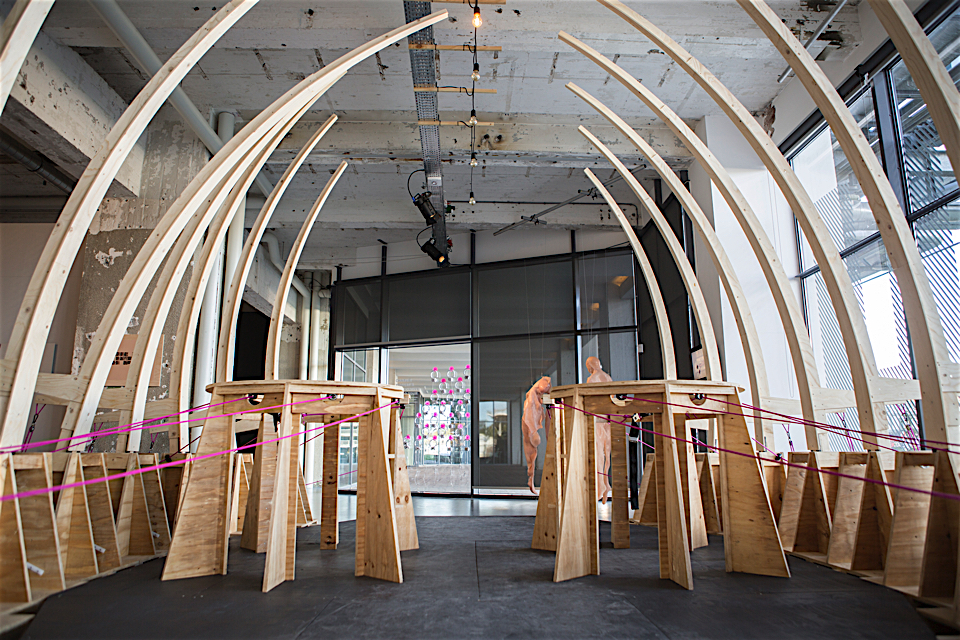
Teun van Beers Design by Joost Gegem & Tiddo Bakker
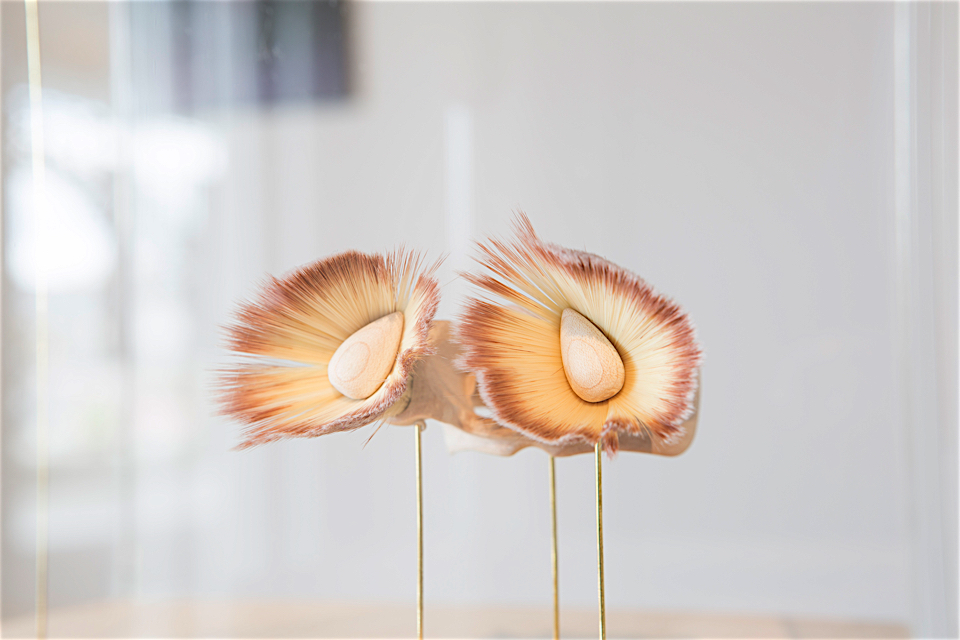
Teun van Beers Design by Frank Verkade
a promise for purity #DDW2015

On of the necessities of life is air, preferably clean air. Although we might not realize it those sixteen times a minute we gasp for oxygen, we can’t live without it. Air feeds our bodies and our thoughts to function in a healthy state of mind.
Fabian Zeijler, an aspiring young Dutch Designer who recently graduated from the Design Academy Eindhoven, took the starting point of purification of air, for his final thesis in product design. Fabian has a predilection for practical, comfort and aesthetics and during his study he specialized in finding the perfect balance between these three components.
“These factors determine to a large extent the shape and outcome and results in a simple, minimalistic, but refined product. One of his graduation projects is called Momentum, which in Latin means “a visible moment of movement”.
Momentum is a series of aerometers that give off refined warnings whenever the indoor air quality needs to be improved. Instead of the obvious flashing light signal or beeping noises most warning system spread in case of danger, Momentum starts rotating in silence so its user is warned in a subtle way whenever the air quality is below acceptable levels.
The appearance of the different aerometers gives away their function in an abstract, poetic and tranquil way. A blue pale drop stands for water and indicates low humidity, while a matte black disc represents particulate matter and therewith high levels of particulates in the air. Lastly, a white half sphere with a transparent top for ventilation exemplifies oxygen levels. As soon as the aerometers start the rotate the user knows he either has to open a window, evaporate water or filter the air.
This stunning looking series of tools for people to gain insight in their indoor air quality, shows that design can be functional as well. Moreover, it embraces consumer’s need of useful products as a result of or current dematerialization trend. Possession must have added value and with our present desire for healthification Momentum fits this contemporary attitude perfectly.
Fabian show his work to the big audience at the 17th edition of the Dutch Design week in the city of Eindhoven, where over 2400 different designers presented their work to the world. His enormous passion and exquisite clean design made him stand out. For the future Fabian wants to focus on starting his own design studio, where he would like to make sophisticated designs containing his personal signature of balancing comfort with luxury and practical with desirable.
Cecile Cremer
Extremely curious and always searching for little weak signals that tell us things are changing. Cecile is a trend researcher and creative concept developer with the wanderlust of a cosmopolitan.Her aim in life is to develop things that matter to others and to help others change their strategy to be ahead of the future. Because she believes “The future is ours”.



algaemy #DDW2015

Presented during the Dutch Design Week by the Berlin-based studio Blond & Bieber, Algaemy is a scientific project investigating the aesthetic potential of micro algae in a creative context – mostly regarded as weeds in Europe and undiscovered. The textile designer Essi Johanna Glomb and product designer Rasa Weber explore its wide diversity of functions, including nutrition, energy and oil production, filtering qualities and CO2 absorption. This great interest led them into generating a design laboratory where they investigate ways of using micro algae as a pigment in the textile printing industry.
The process is straightforward yet very complex. The algae is grown in glass vessels, for the cells to photosynthesis, it is necessary for someone to blow into the vessels to provide carbon dioxide – enhancing the growth. Next, the pigment is extracted for printing, filtered through textile to generate a fast growing eco-friendly and healthy pigment paste.
The designers are seeking 100% non-toxic textiles dyes to use as an alternate solution to our current nature harming dyes. Future plans involve carrying on the research of algae-based dyes and potentially bringing products made using the dyes into the market. Working on a small capsule collection may also be a doable idea.
Marie Bourgat
www.blondandbieber.com
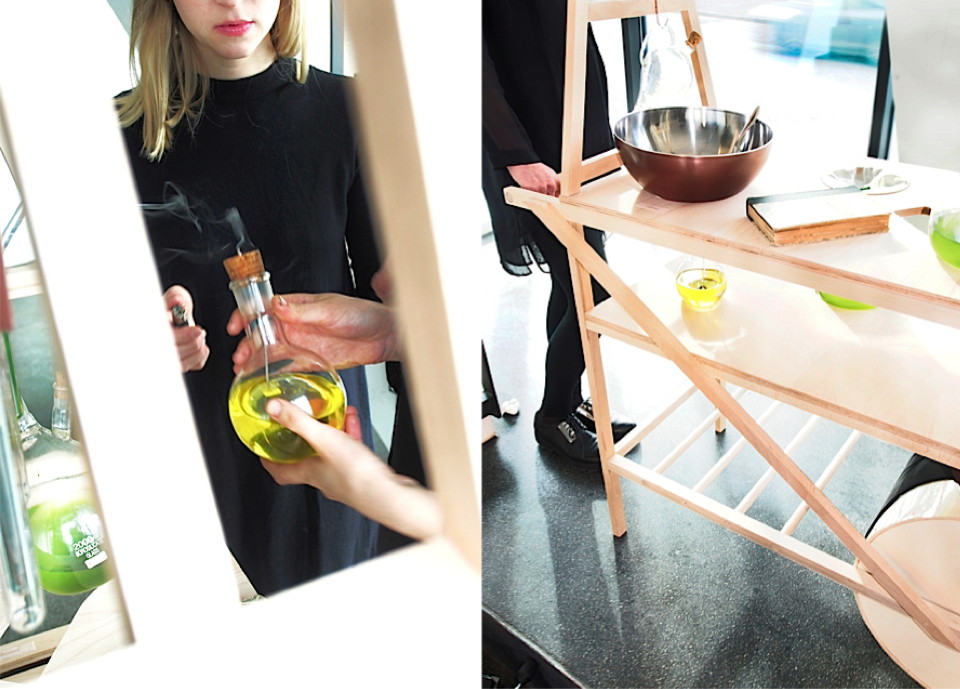
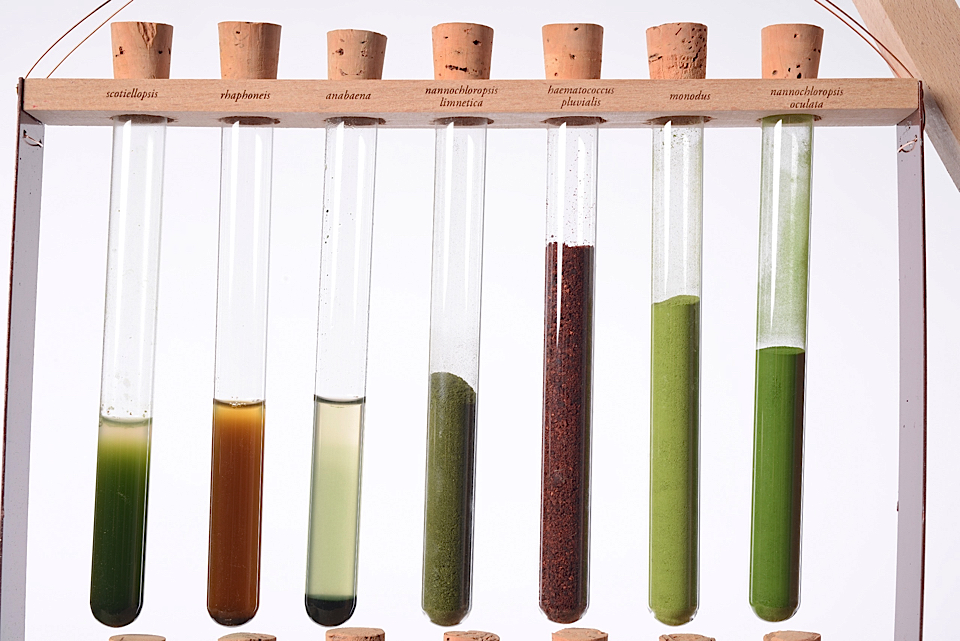
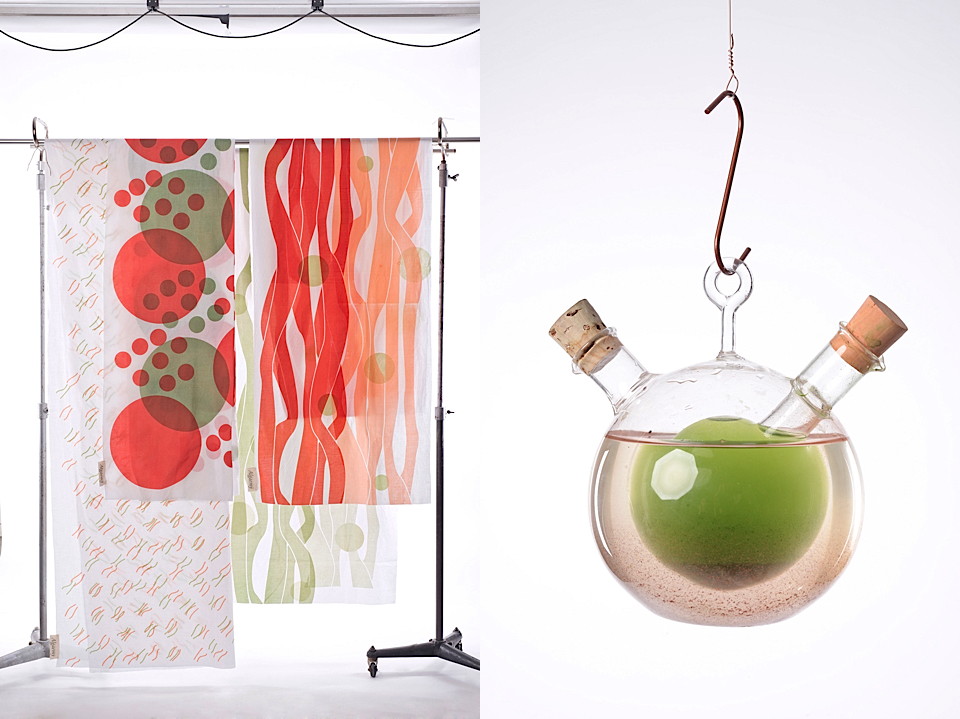
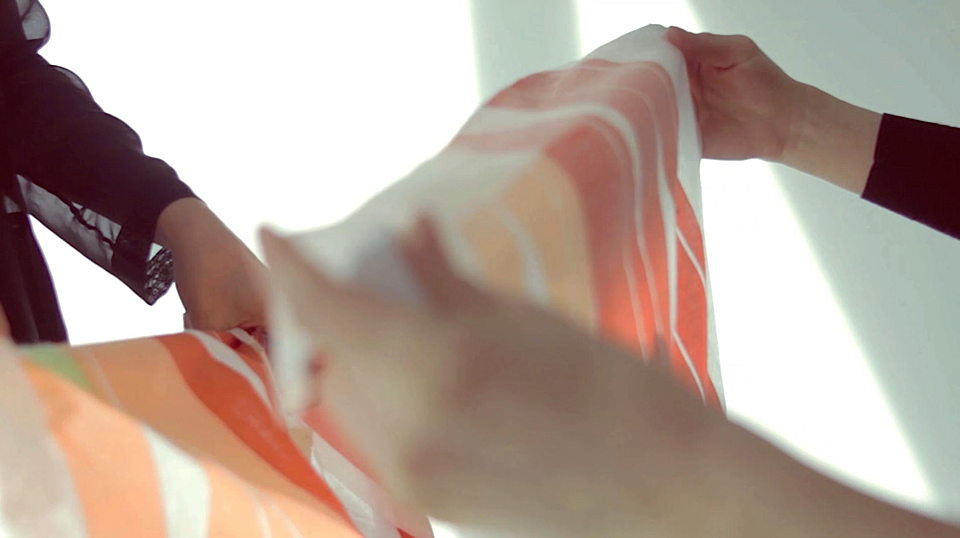
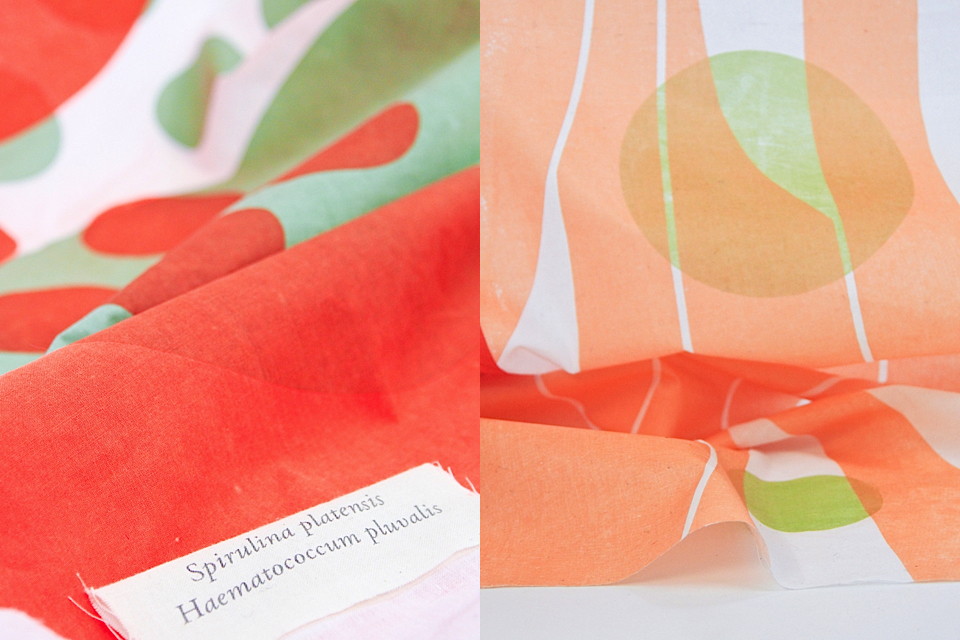
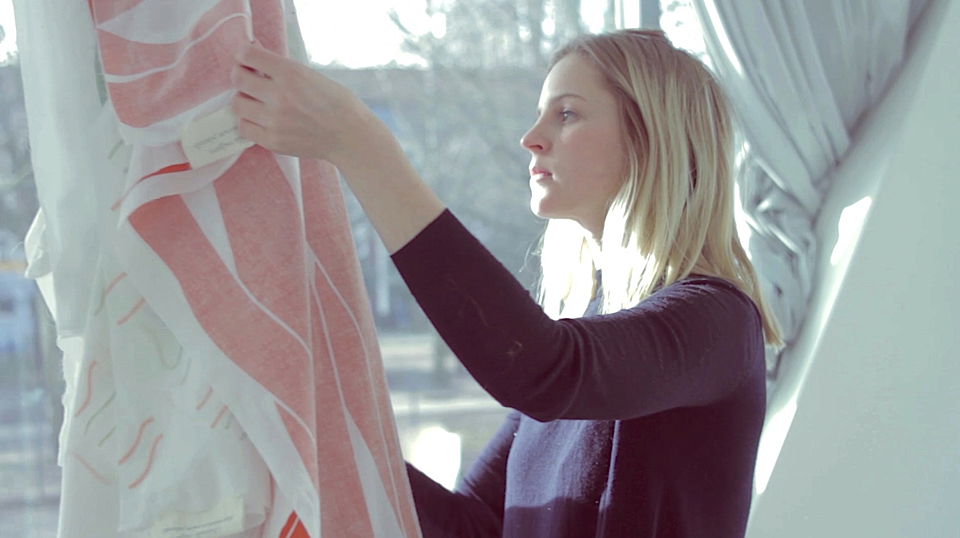
the art of creative plating #DDW2015
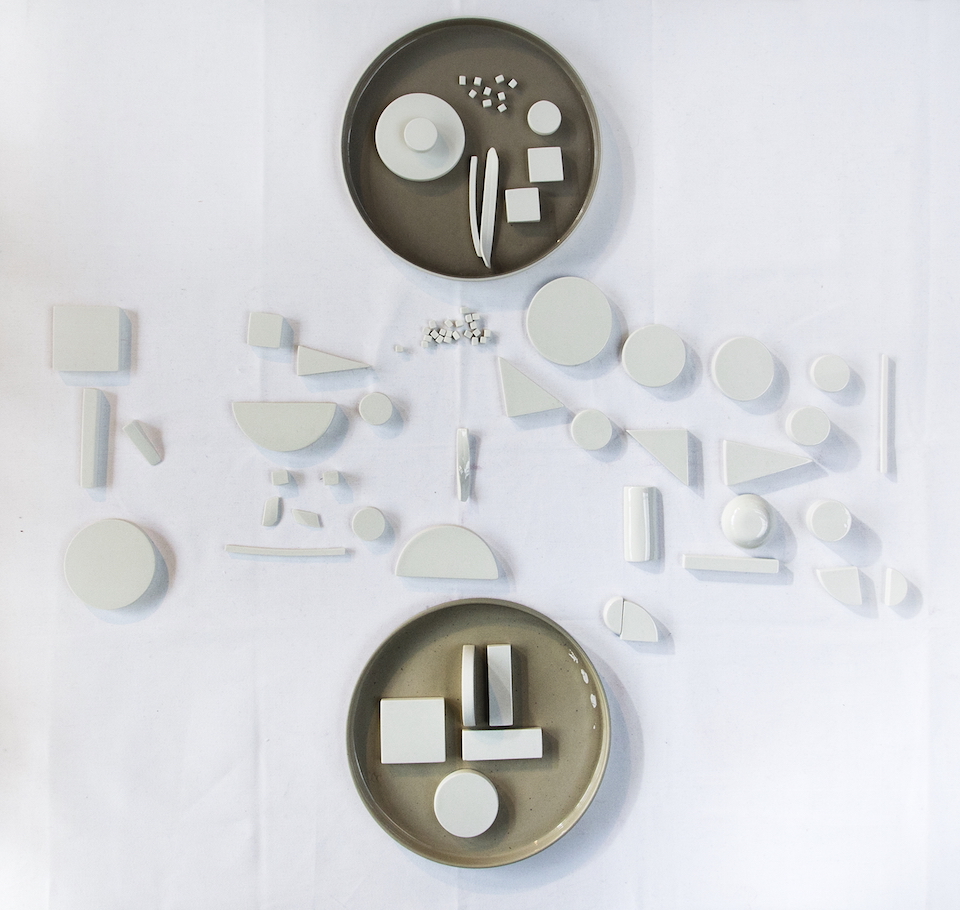
Nothing brings people together like good food, but good is not only the way food tastes, it is the total experience. The entire surroundings of smell, colour, company but also plating. Because in the end it is they eye that first perceives the beauty on ones plate.
Jasper Udink ten Cate, master chef and initiator of Creative Chef has an extraordinary passion for food, design, art en people. His ultimate goal regarding his food concepts is to touch people deeply by implementing stories in the food they consume. Jasper is a people person, he believes his work can only be lifted to a higher level by creating with others, therefor Creative Chef stands for co-creation and collaboration.
It is this vision that stimulated Jasper to develop The Art of Creative Plating, a forty-piece set of china whereby every piece represents a form of food. “If I want others to teach how to do it, I need to have the tools to show them and give them an opportunity to experiment themselves”. With the several forms Jasper can experiment with plating and different formulas to lay out a plate and get the story straight.
The idea arise while the master chef was playing with his son’s clay, “I was just trying something, making up a plate”. When he showed it to his colleagues’ responses were exuberantly. Everybody started to experiment with them finding the perfect plate setting as they now had the opportunity to try out and practice without the stress of having to achieve the right plate at once.
To execute the set, Jasper collaborated with industrial designer Suzan Becking, who transformed the clay forms in to stunning looking white porcelain pieces. The choice to use porcelain is mainly made from the point of view that the Master Chef likes to position himself as a designer of things and therefor wanted this project to be design worthy. In consultation with Suzan they selected this sleek and simplistic material to not draw too much attention of the forms.
For the first edition the forms are held quite basic, “the basic ingredients of a French kitchen” as Udink ten Cate likes to designate them himself. In the future he is thinking of a sequel series whereby the main focus will by on thin forms. When asked why the collection is in white he answers “food and colour is endless, therefor I think it will limit my creativity regarding to plating, colours will follow after”.
Last Dutch Design Week in Eindhoven the Netherlands, Jasper presented his collaboration with Suzan Becking to the audience and reactions were laudatory. Notable that mainly consumers are very interested in this, as they called it, “mindful” design. Whereby they are generally attracted by the simplicity and the beauty of the objects.
The Art of Creative Plating is giving people the opportunity to create their own stories in a beautiful looking way and therewith embraces the need of functional design.
Cecile Cremer
creativechef.nl
Extremely curious and always searching for little weak signals that tell us things are changing. Cecile is a trend researcher and creative concept developer with the wanderlust of a cosmopolitan.Her aim in life is to develop things that matter to others and to help others change their strategy to be ahead of the future. Because she believes “The future is ours”.
www.wanderingthefuture.com
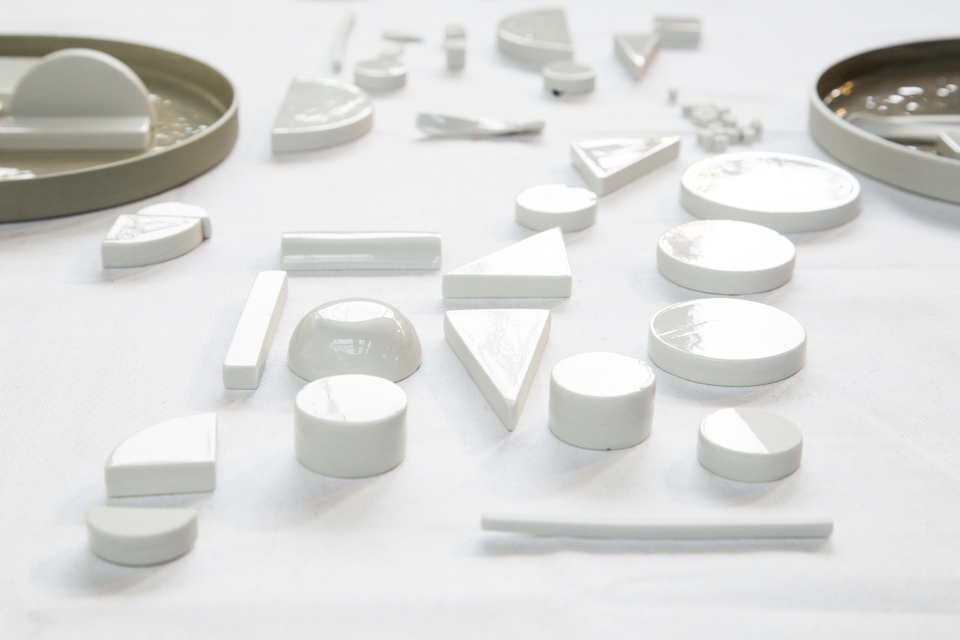
seductive precursors #DDW2014
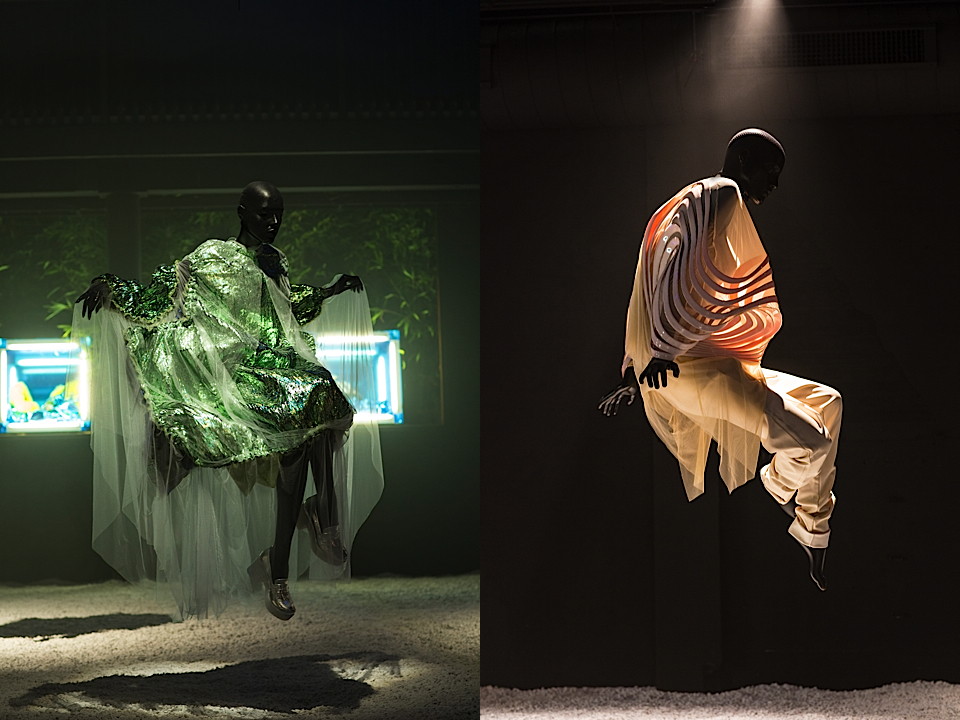
photos by Barbara Medo
Featuring some of the most notable fashion graduates of Dutch and international design- and art academy courses, the exhibition Seductive Precursors gave a fresh perspective on the cult of clothing in the mainly object- and product cluttered events at Dutch Design Week.
Concept store You Are Here collaborated with visual designer Niek Pulles and experience designer Harm Rensink on an eclectic landscape of fashion forward design in an empty club space in the centre of Eindhoven.
“The title of this year’s edition of Modebelofte - ‘Seductive Precursors’ – underscores the importance of the pioneering creativity displayed by these talented designers. By experimenting, intuitively and conceptually, with techniques, materials, shapes and references they seduce us to immerse in their visions of possible fashions for a moment. Seductive Precursors play an important role in fashion’s characteristic dynamic of perpetual renewal by convincingly connecting the familiar with the unfamiliar.
The selected designers challenge us to consider our contemporary sense of self and our ideas about the wearability of objects in a progressive, fictitious or futuristic perspective. The exhibition is an ode to the ‘physical’, in the broadest sense of the word. Seduction through form, dimensions and material.” state the three partners in crime.
Participating designers and artists included; Charlotte Tydeman, Angel Chen, Richard Quinn, Fiona O’Neill, Olya Kuryschuk, Jessica Mort, Anita Hirlekar, Ida Gro Christiansen, Emma Hardstaff, Adam Marc James, Inna Stein & Caroline Rohner, Tijme Veldt, Fien Ploeger, Klara Válková, Marije Seijn, Jurjen van Houte, Hyein Seo, Flora Seierl, Bastian Visch, Gino Anthonisse, Karin Vlug, Vera Roggli, Chiara Siahaan, Sonia Aissaoui, Yiyu Chen.
Jules van den Langenberg
www.youarehere.nl
www.heyniek.com
www.harmrensnk.nl

Jules van den Langenberg graduated at Design Academy Eindhoven and developed himself as design curator and exhibition maker through self initiated projects and freelance works. Through associative thinking the young, Willy Wonka like, visionair develops narratives and concepts which form fundaments for a variety of curatorial projects. After Dutch Design Week 2014, Jules shares with us some of his discoveries and « coup de coeur ».
www.julesvandenlangenberg.nl
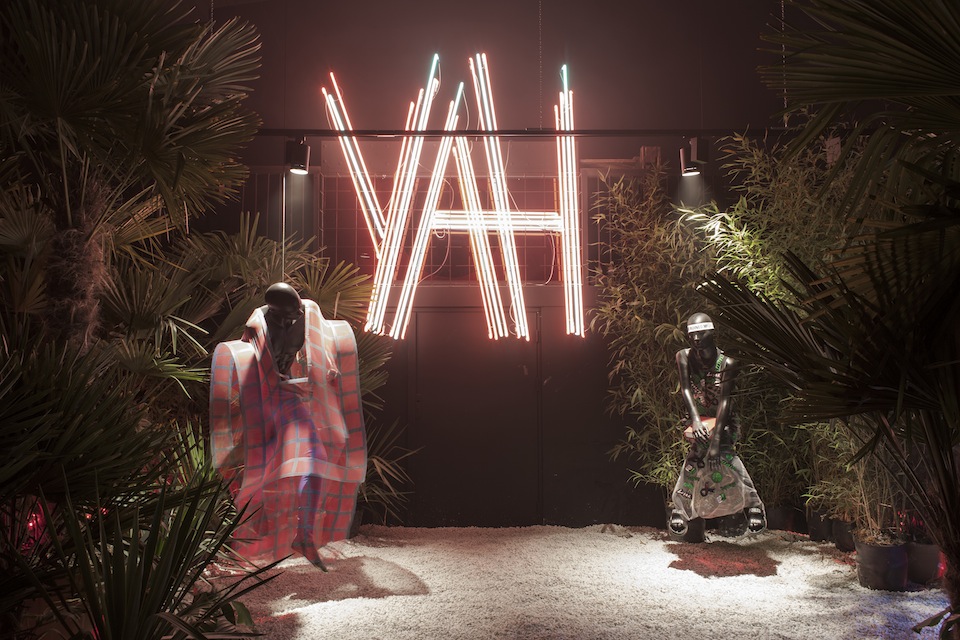
photo by Brit Roelse
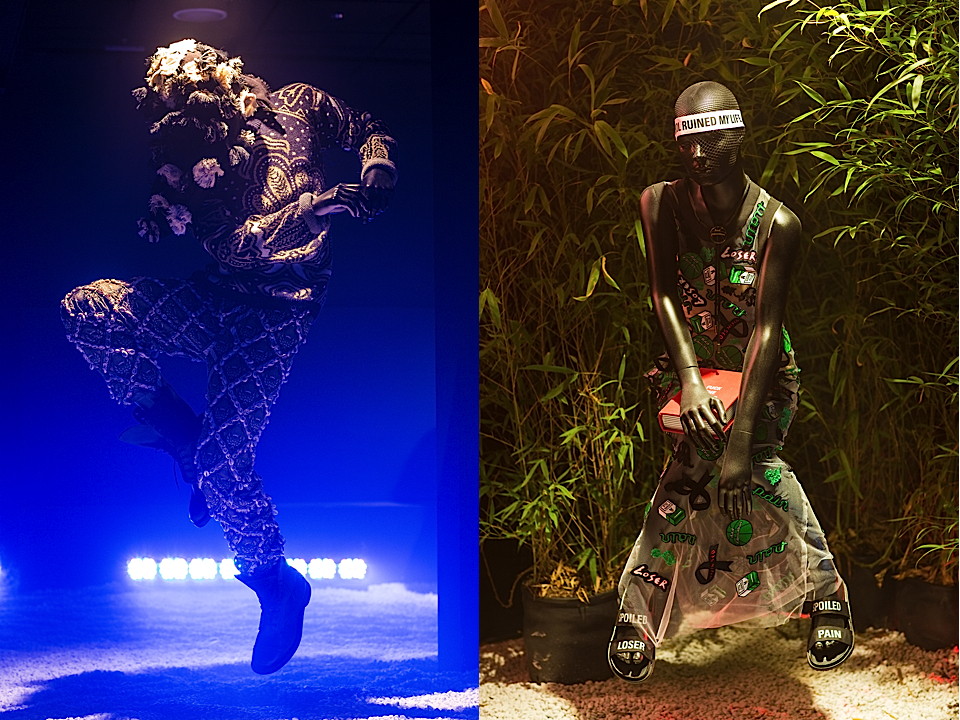
photos by Barbara Medo
Doom Pa Di Dee Exhibition #DDW2014
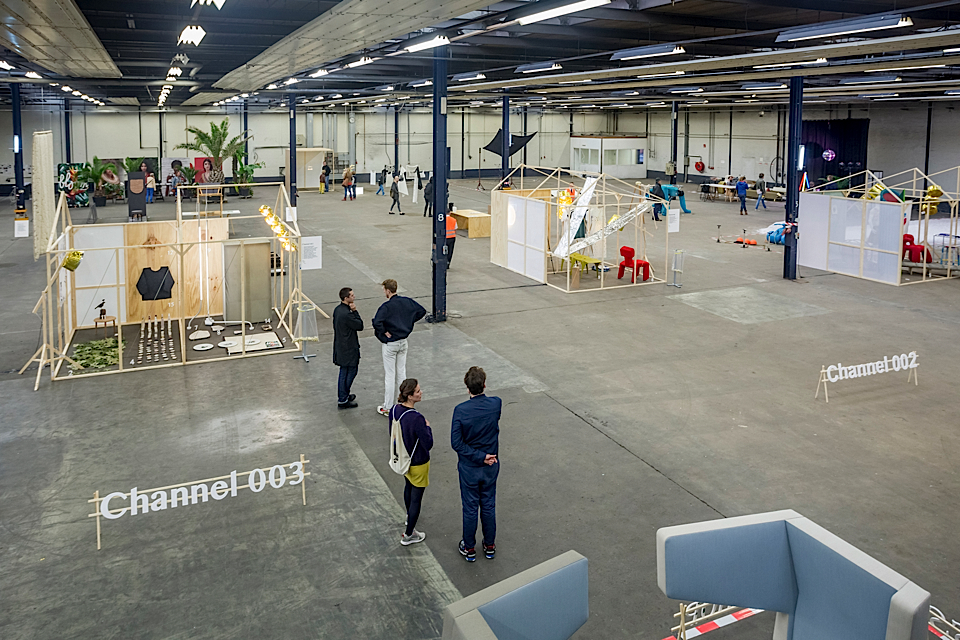
Photo by Peter de Koning
Breeding play back into design but all the while, respecting a critical vision, the Doom Pa Di Dee exhibition took this year’s Dutch Design Week by storm with a pleasantly surprising selection of intervention-based projects. Employing a T.V. channel typology – entirely conducive with our ever saturated image cum information culture – curator Jules van den Langenberg sought out to create a dynamic landscape within the burgeoning Sectie C creative complex, where visitors and exhibitors could interact – coupled with scenography by Thijmen van der Steen, graphic design by Sha Yee Jin and a Cash Desk installation by Jelle Mastenbroek.
Showcasing a comprehensive list – most up-and-coming and established Dutch or Netherlands-based talents including Arnout Meijer, Martijn van Strien, Rachel Griffin, Maaike Fransen, Lio de Bruin for Common Methods, Roosmarijn Pallandt, Studio Makkink&Bey, Aldo Bakker, Lex Pott, Maarten Kolk and Guus Kusters, – Doom Pa Di Dee proved Dutch design’s undying relevance and ability for reinvention.
Next to re-tooled inflatable men – Oxihixo by Guss Voermans – live music performances and a confetti cannon, hula-hoops were spun across the reappropriated warehouse. A pop-up Bloom store was also selling the new Edelkoort's Bloom "Luscious" .
Passing new ceramic experimentations by Kirstie Van Noort and Mineale Maeda’s award winning Keystone, viewers came across a staged bus station announcing 50 minutes – the time Amsterdam-based architects Jacques & Andre travel to reach their Rotterdam-based office – offering a new platform for open-source briefs. For those in the business, four Prooff EarChairs ironically formed a ubiquitous press lounge.
Adrian Madlener
www.ddw-doom-pa-di-dee.com
www.julesvandenlangenberg.nl
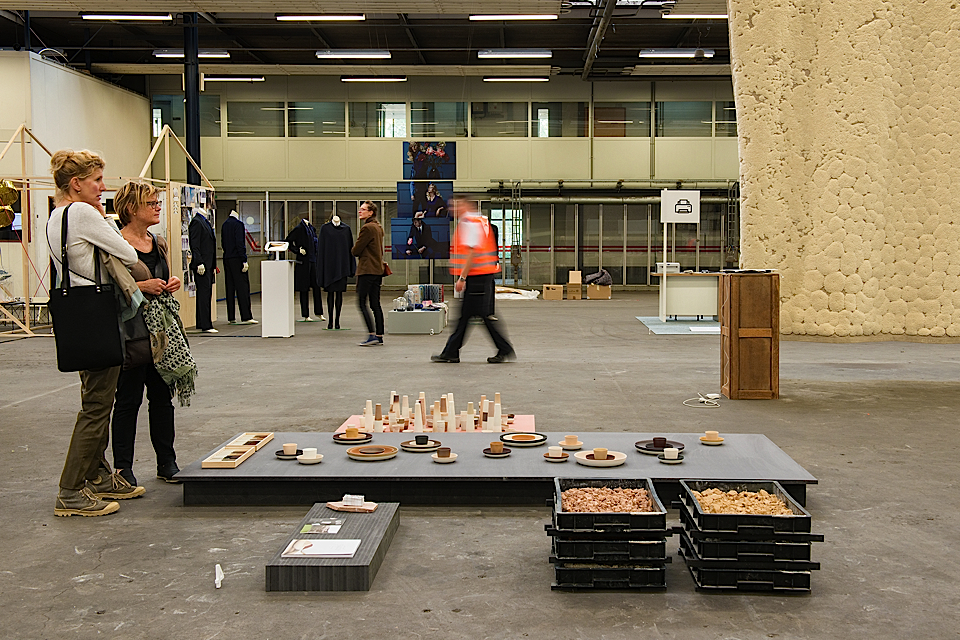
Cornwall collection by Kirstie van Noort - Photo by Maarten Coolen
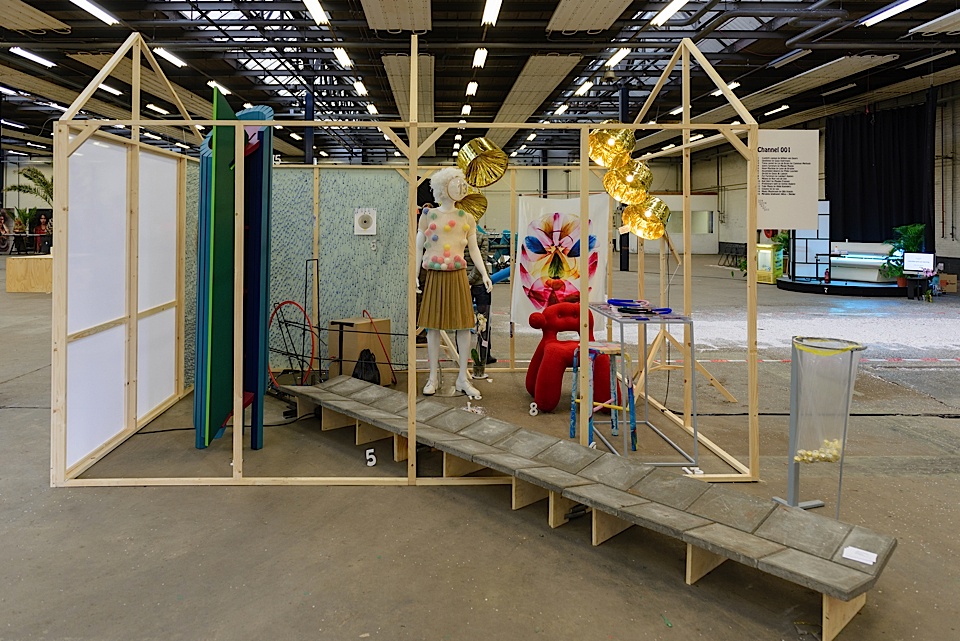
Photo by Jostijn Ligtvoet
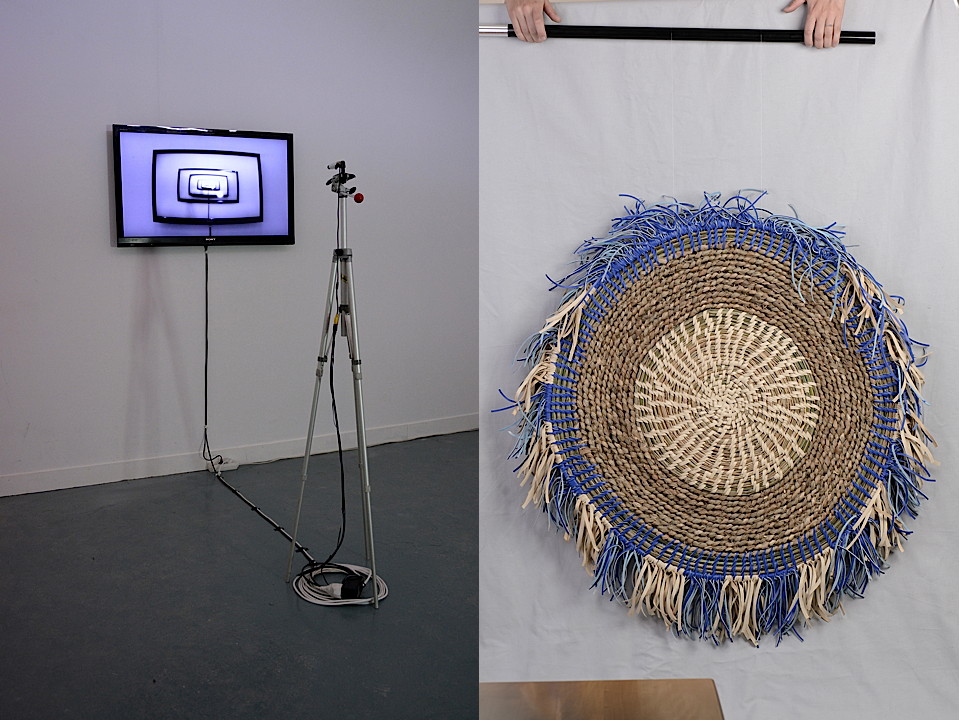
Left- Mediator by Goof Kloosterman-Right Typhia Carpet by Lio de Bruin for Common Methods
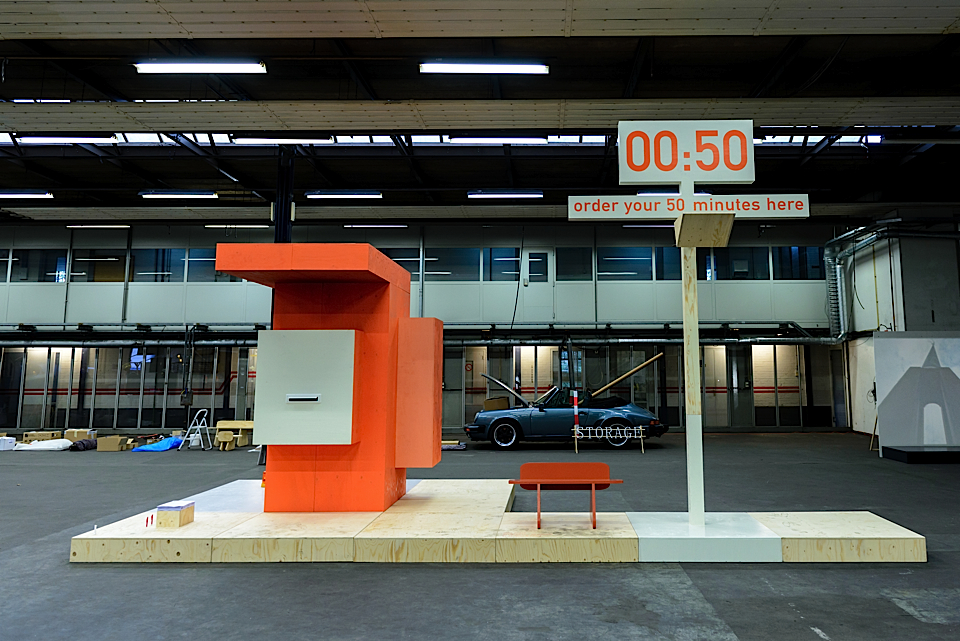
50 Minutes by Jacques & Andre - Photo by Jostijn Ligtvoet
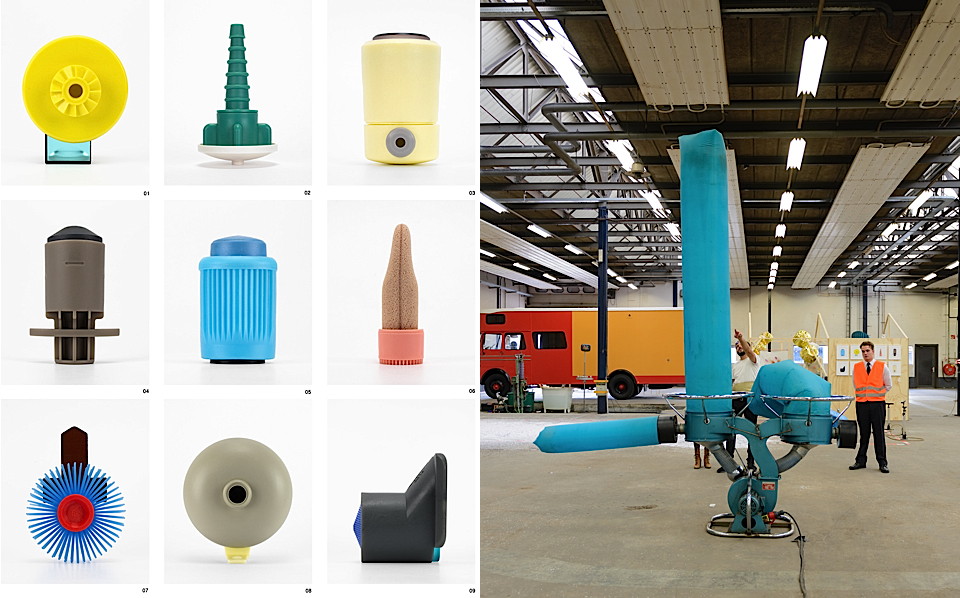
Left- Assembled Objects by Philip Luschen - Right- Oxihixo by Guus Voermans Photo by Jostijn Ligtvoet
The Institute for Applied Motions #DDW2014
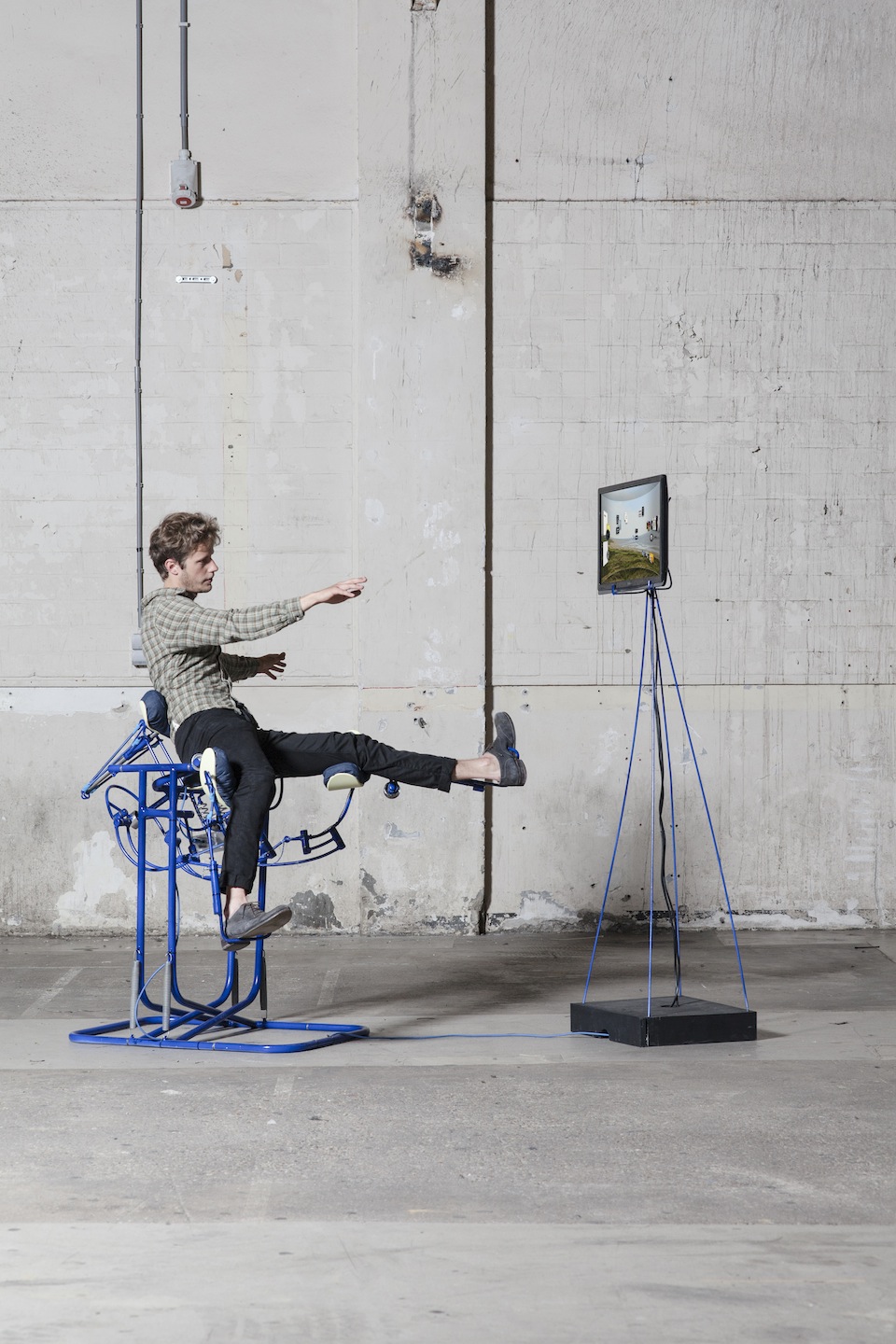
Dynamic Chair photo by Lisa Klappe_
Although our bodies are evolved to move, we tend to design our objects based on monofunctional use and posture. Technology is taking over more functions our bodies were used to execute, developing a useless body for tomorrow. Instead of using our body for productive life, we compensate the lack thereof with leisure activities. Moving our body becomes a choice, a lifestyle and therewith segregated.
Govert Flint’s voice stands out in the crowd of graduates at the Social Design department of Design Academy Eindhoven. As founder of The Institute for Applied Motions he aims to generate alternatives for the future scenario of having a useless body. In the coming years the designer will gather neurologists, anthropologists and dancers to tango and tackle the relations between happiness and movement.
In his graduation project ‘Segregation of Joy’ Govert Flint shares his first discovery in the search for a useful body in contemporary society. By observing dancers of the Scapino Ballet Rotterdam, he found movements that can be applied daily. Full body movement correlates with feelings of happiness.
And yet, we spend days sitting behind a computer. To make this more dynamic, Govert made an exo- skeleton chair that allows the body to move freely. Programmer Sami Sabik worked on the digital translation. Changing the body’s gravity point moves the mouse and just kick a chair leg to click. With this chair, our bodies are once again functional, stimulating regular movement. After all, that’s what we were designed to do, according to Flint.
Jules van den Langenberg
www.govertflint.com
Jules van den Langenberg graduated at Design Academy Eindhoven and developed himself as design curator and exhibition maker through self initiated projects and freelance works. Through associative thinking the young, Willy Wonka like, visionair develops narratives and concepts which form fundaments for a variety of curatorial projects. After Dutch Design Week 2014, Jules shares with us some of his discoveries and « coup de coeur ».
www.julesvandenlangenberg.nl
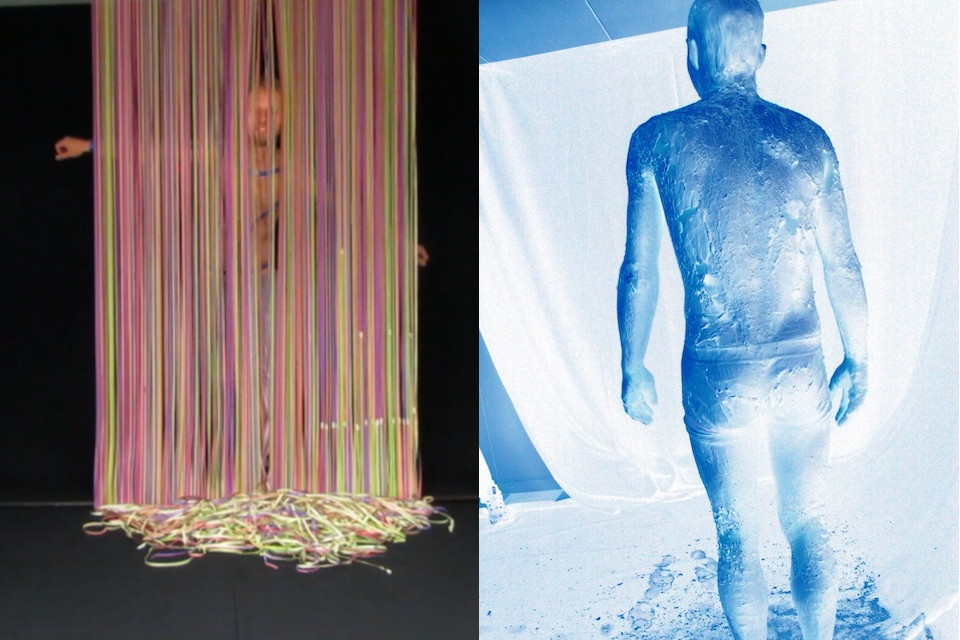
research by govert flint

how we work #DDW2014
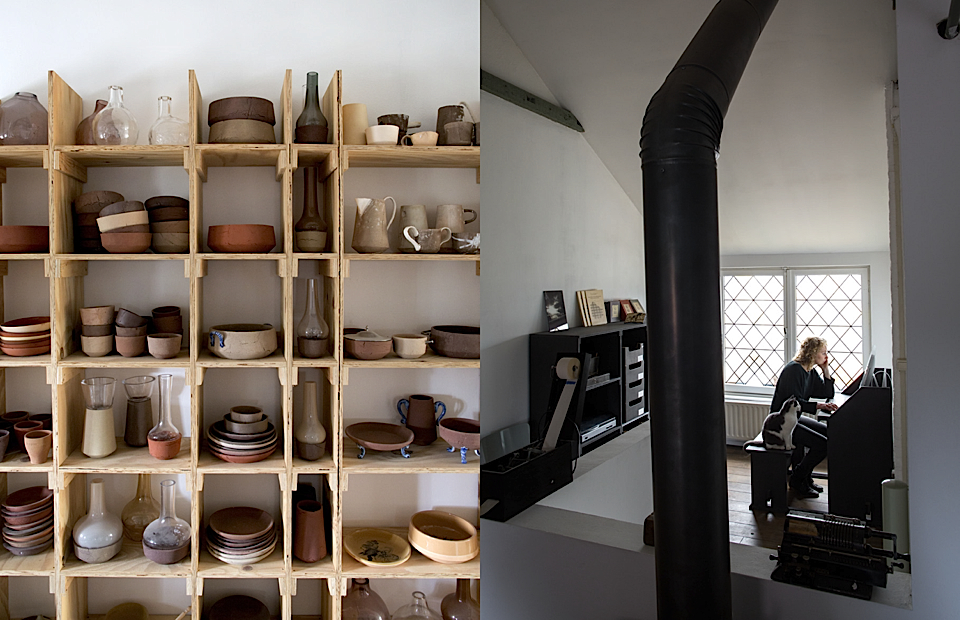
In the book How We Work, photographer Inga Powilleit and styling director Tatjana Quax show the daily practice of the new generation of designers; how they work and what are their sources of inspiration and work processes? The book is presented during the Dutch Design Week (18 till 26 October) in Eindhoven.
Since Dutch Design became a worldwide concept, these Dutch designers go new ways. Research about the role and function of design is the starting point for this committed generation. The same question keeps popping up: what to do with the surplus? Material, techniques and the design process are changing. Innovation arises through experiment. These fifteen designers look around and ask themselves: how can I act differently?
The explorative work methods of these young designers lead to new insights, processes and solutions. Arts and crafts are reviewed on their merits, material and color research go hand in hand with the latest production techniques and innovations. High quality and durability in response to mass and overproduction.
This generation is a new sort of world citizen: international and locally orientated, curious, pragmatic and idealistic.
In addition to the book, the exhibition How We Work opens in January 2015 until May 2015 at the Stedelijk Museum 's-Hertogenbosch. The exhibition displays the faces of designing, from the research and work process to the finished product in the end. One object of each designer can be seen with the aim of giving visitors an insight how designers work and think.
Order the book on line

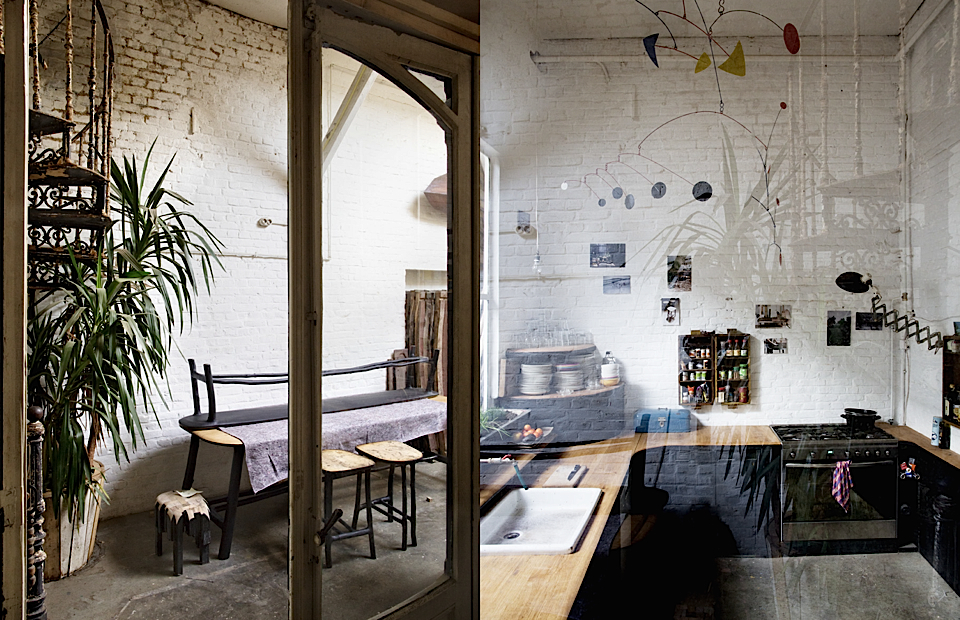
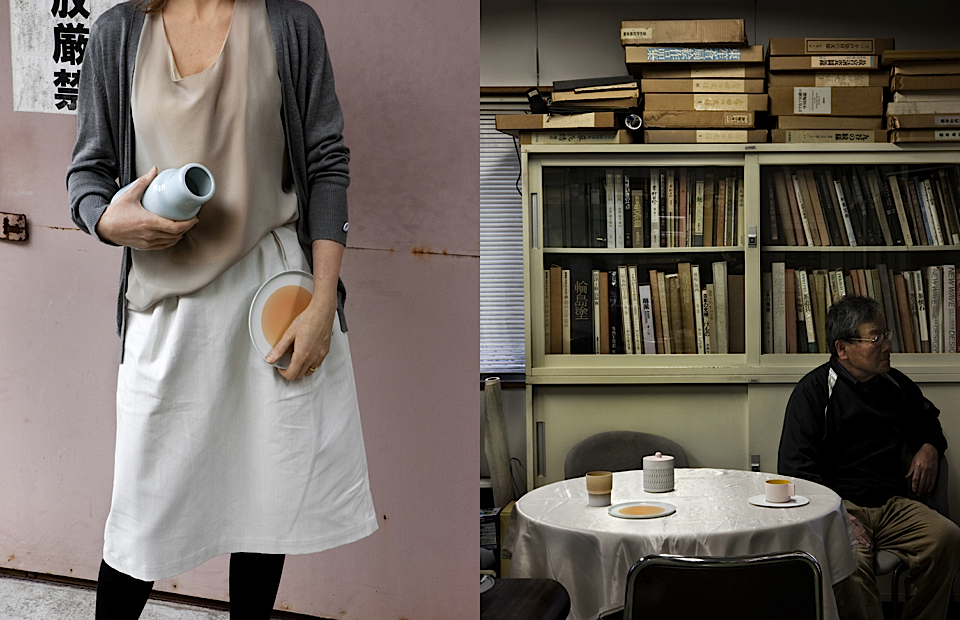
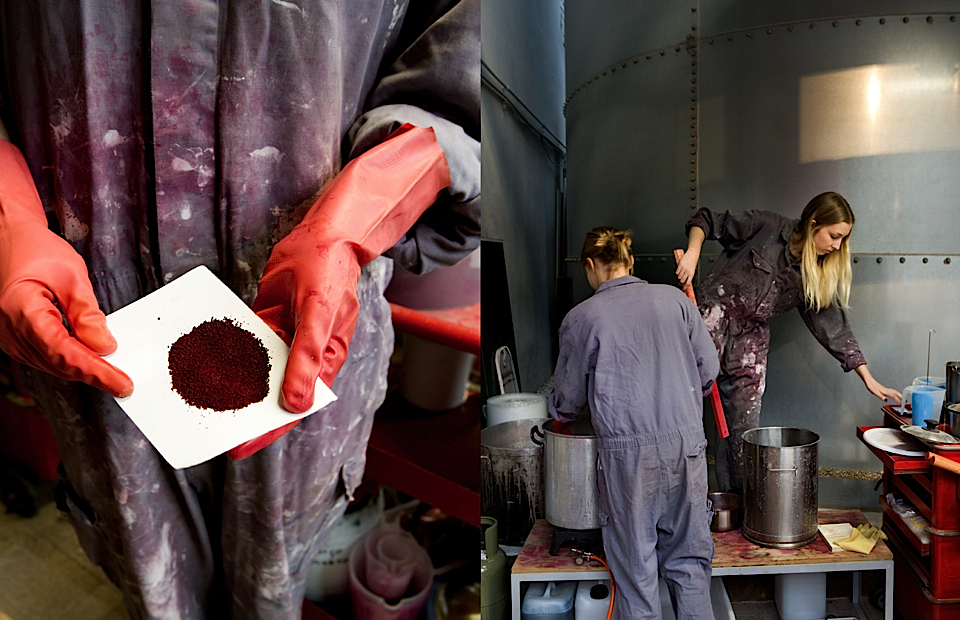
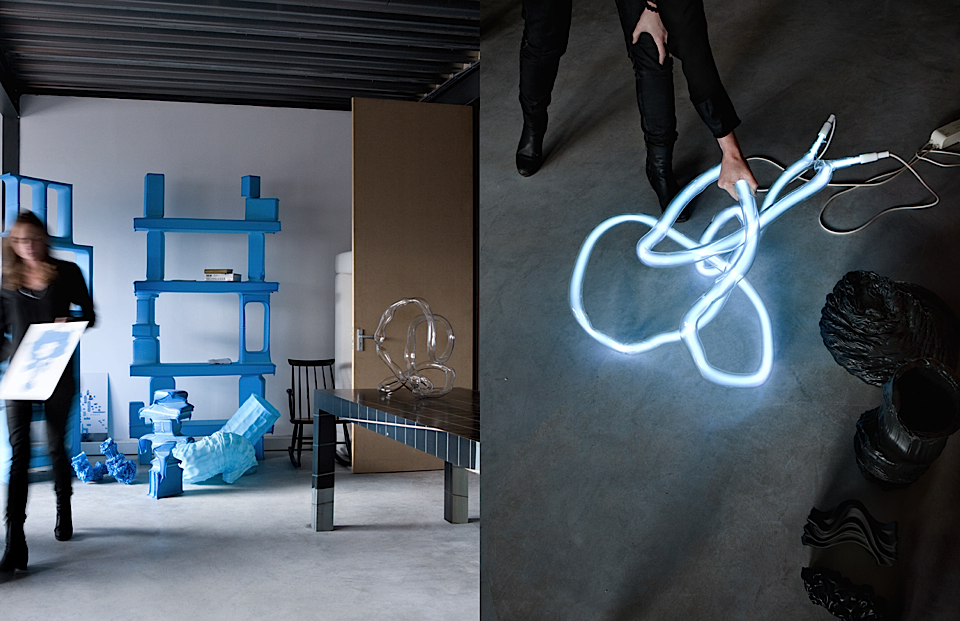
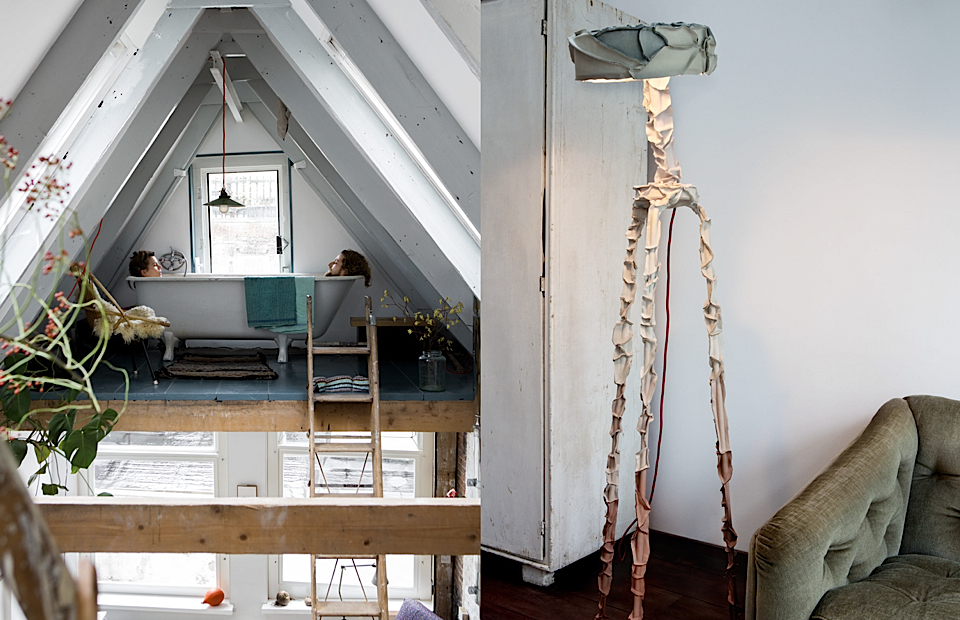
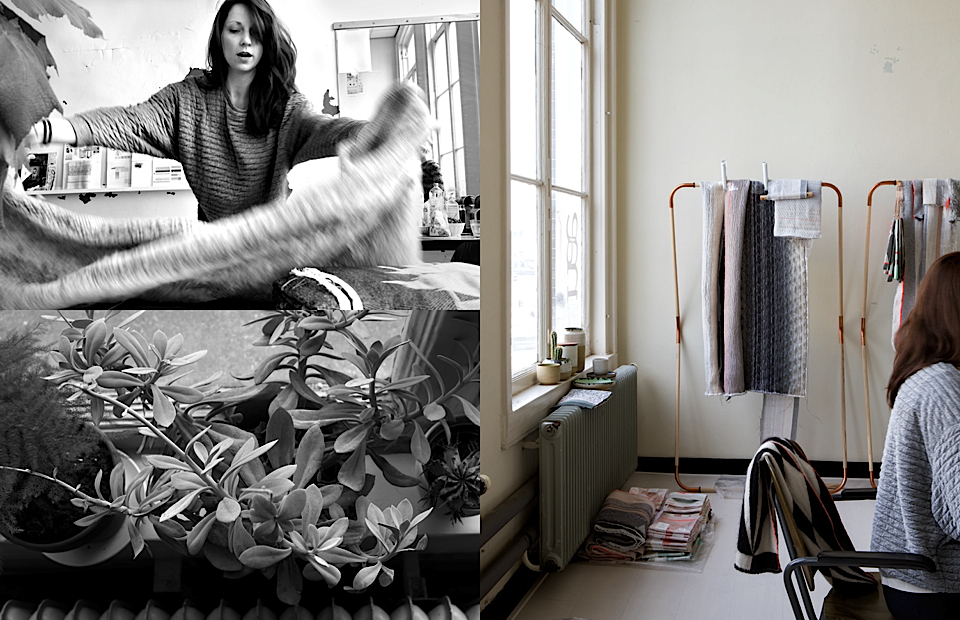
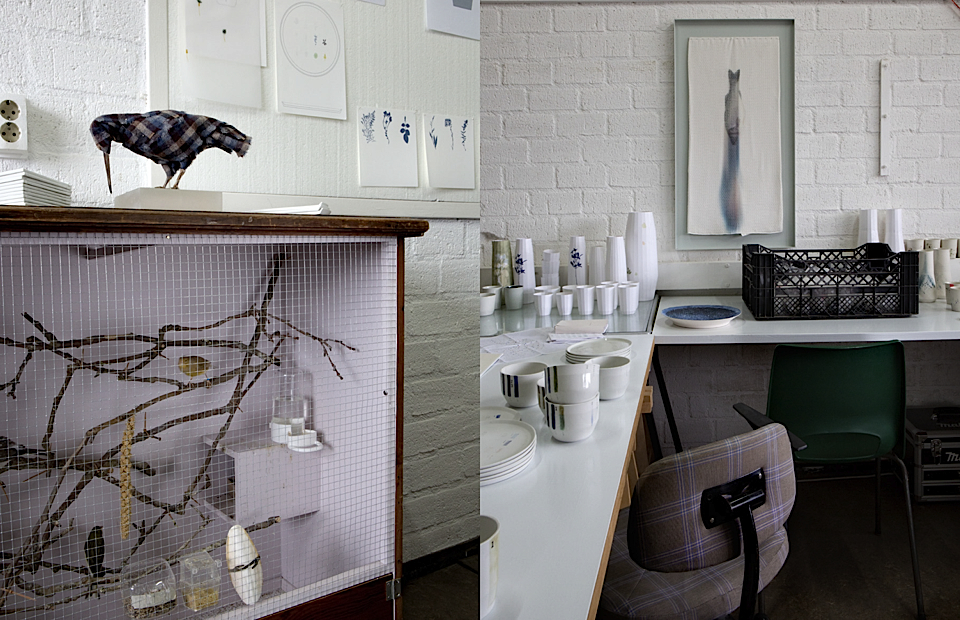
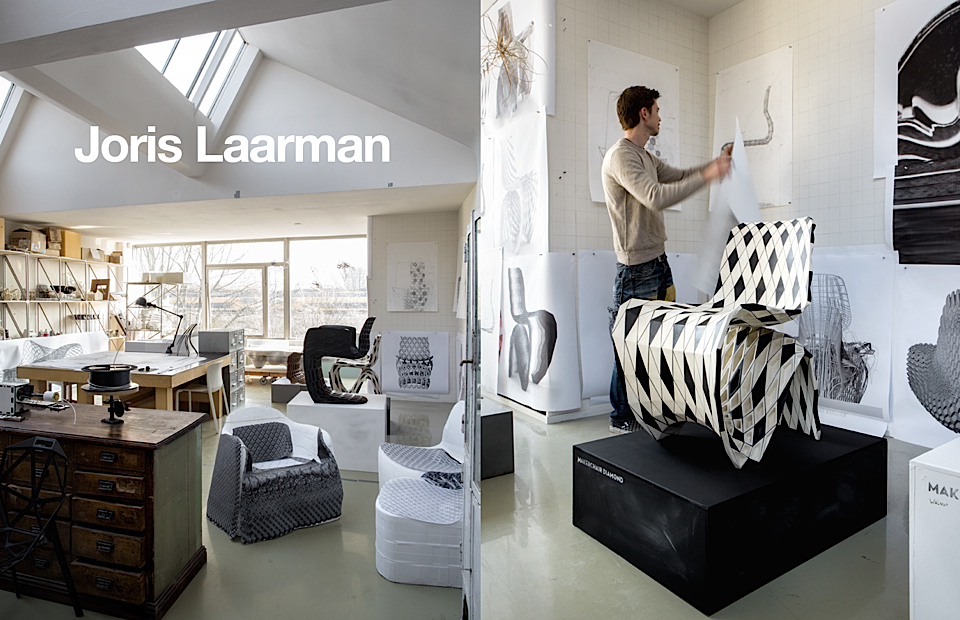
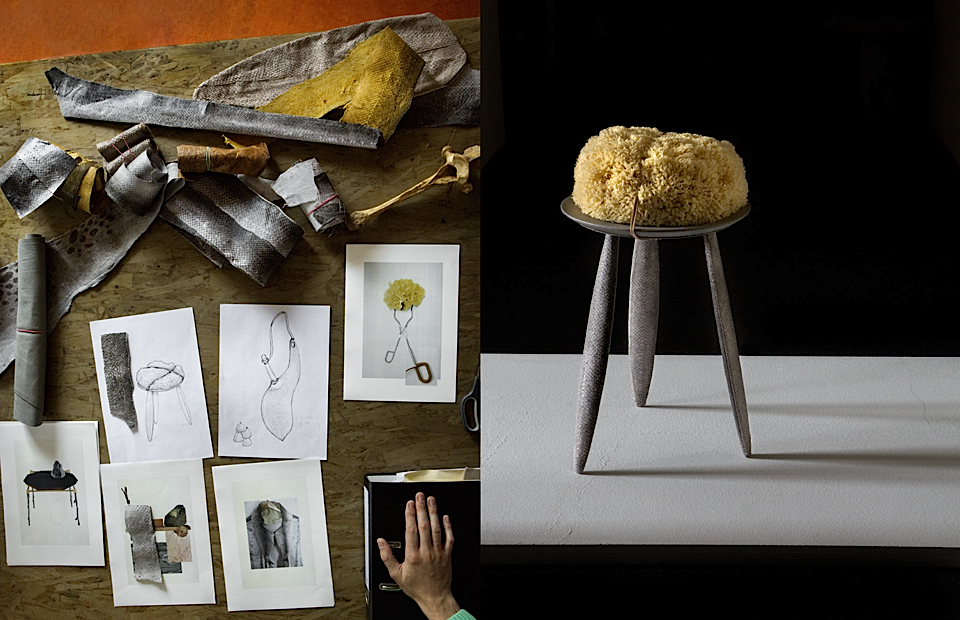
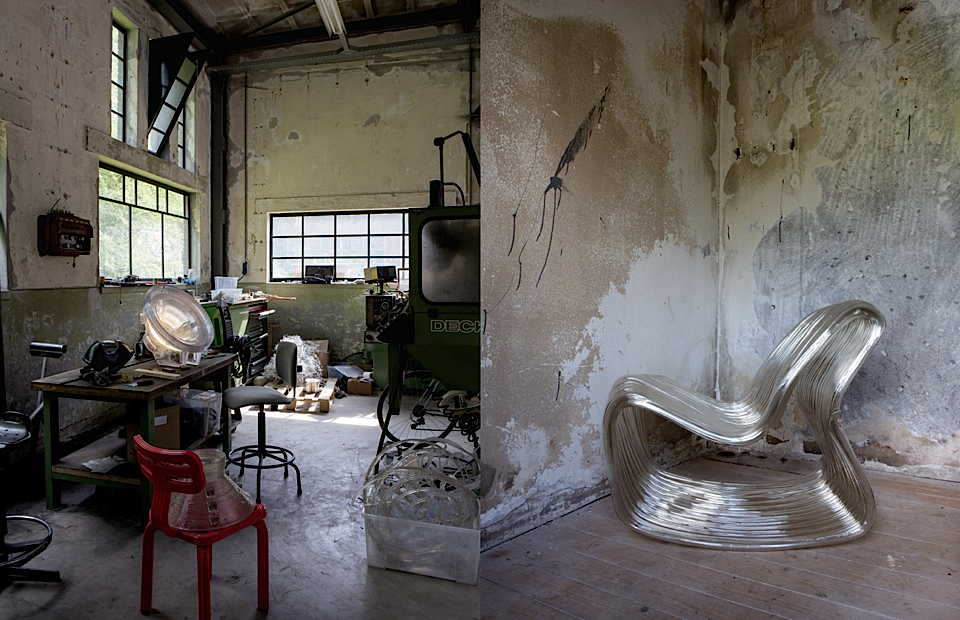
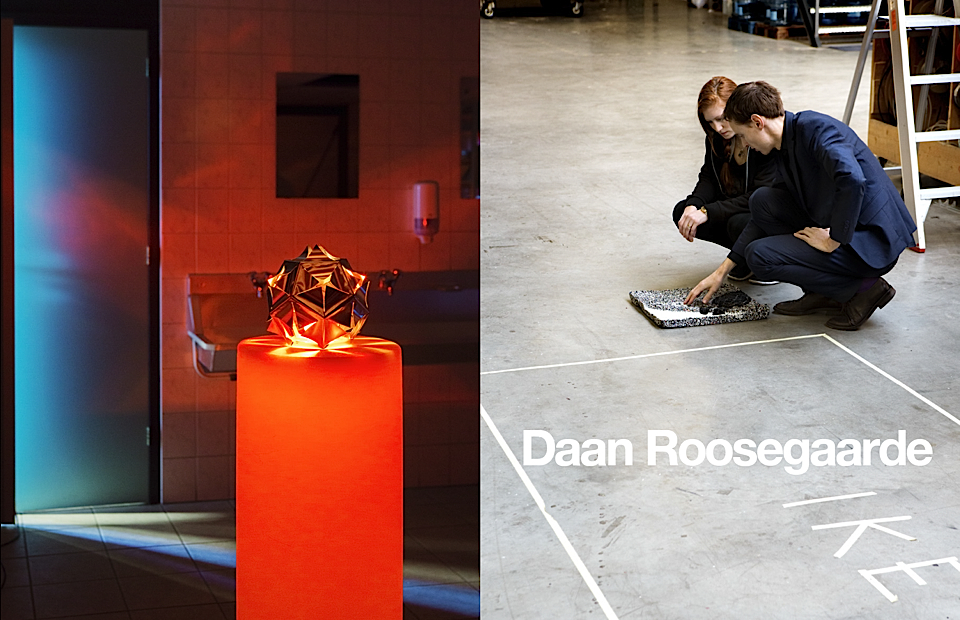
the medicine called fun #DDW2013
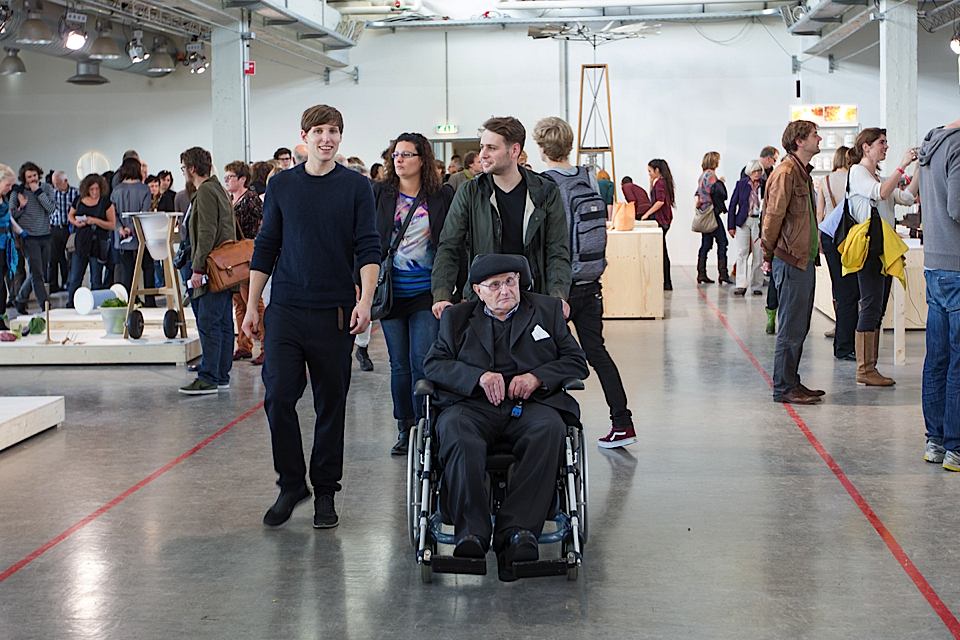
Dutch Design Week 2013, graduate exhibition design academy, Thursday the 24th of October somewhere around noon.
The jolly voice of a bingo caller echoes number after number through the spatial academy hall. A significant group of elderly people is lined up in their wheel chairs facing a cheerful installation that resembles an Olympic podium. Iconic Dutch Design objects are displayed as prizes for the bronze-, silver-, and gold medallists and the atmosphere reminds me of a Sunday afternoon bingo in one of the many care houses in the Netherlands. Only this time something differs from the stigmatizing ideas around the game of Bingo; the new rules of the game are socially uniting and a new design of the in coherent game components is upgrading the value and the appearance of the good old Bingo.
“Within the landscape of graduation projects, of which many address social topics but still put the designed objects autonomously in the spotlight, I insisted on a live demonstration in which a group of elderly bingo players from a local care house played with our new designed game. As if it were a performance, the elderly paraded into the academy, through the show, to establish themselves within the exhibition” says Jules van den Langenberg.
As a curatorial designer Jules initiates-, curates- and exhibits projects in which applied art and design are used as a medium to cultivate culture. His transparent inexhaustible inspiration source is clear; humans and their skills.
For his debut exhibition Jules demonstrates his first curated project called The Medicine Called Fun. Through an in debt investigation into the contemporary lifes of elderly people in elderly homes and care houses Jules got inspired to change the social architecture of communal living of elderly, that is under influence of hospitalization and commercialization.
The Medicine Called Fun is a refreshed version of the Bingo game that thousands of Dutch elderly house residents love to play and that can actually be used as a tool to fulfill the desire for social cohesion.
Based on oeuvre, design studio La Bolleur got invited by initiative taker Jules to design a concrete solution for his findings and observations. Based on their observations while actually playing bingo throughout The Netherlands, La Bolleur redesigned a bingo kit. The new game rules are reshaped with the aim to evoke interaction between people and unite them, the rules also provide conversation material for after the game. A bingo game was created that features a multi-functional piece of bingo furniture and additional game elements like a table flag that marks the amount of winners on a certain table; evoking collectivity.
Awarded with the Connectring from Design Academy Eindhoven and nominated for the Social Design Award of the Eindhoven municipality, Jules and La Bolleur hope to continue their adventure with a bingo performance with Italian elderly at the Salone Del Mobile 2014 and are currently searching for potential sponsors to spread the Medicine Called Fun.
Willem Schenk
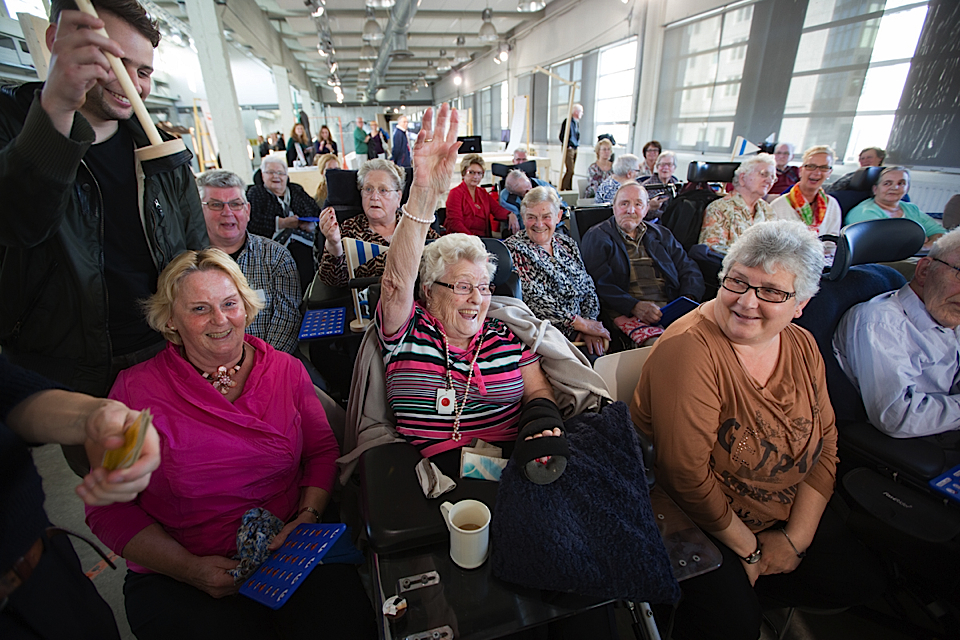
out of time #DDW2013

Atelier NL - Sand Project
During Dutch Design Week, Lonny van Ryswyck and Nadine Sterk of Atelier NL organized the exhibition Monnikenwerk, which revolves around the research process of designing. In their opinion the ‘making of’ and the creative process itself can be as interesting as final results. The exhibition portrays how seven designers and studios work which all share an awareness of how enriching a time-consuming task can be.
Atelier NL themselves started a few years ago with the project Glass Lab which they started in 2010 by making a 'sand journey' throughout Europe. They shoveled sand on more than forty locations in sand quarries and sand dunes and analyzed their findings in their Dutch studio, the designers then fused the sand samples into clogs of glass, the size of a fist and all different in color. With the glass, Atelier NL proved that sand is potentially worth as much as gold, due to the natural minerals that attach to the grains. However, perfection is not the aim. The goal is to expose the wealth of the charming elements that are part of the sand. Like true alchemists, they heat up the elements again until they foam, burst or crystalize. Brought together in a sand cabinet/glass lab, an intruiging color palette, raw materials and semi-finished products offer a palette of possibilities. With this palette, Atelier NL wants to trigger the interest of scientists and industry to further applications.
Also participating in the exhibition is Studio Eric Klarenbeek who presents the current status of his Print and Grow project in which he invested time in researching the possibilities of 3d printing of living organisms. Where normally plastics are used to print digital drawings Klarenbeek replaced these synthetics with a natural material, mycelium, of which the networks of wires of a fungus are made.
"Mycelium is interesting because it grows fast, is sustainable and once dried it is light, fire-resistant and strong. We 3d print structures from where mycelium can grow further. When the structure comes from the printer, the final product is not finished yet. This is only when it is fully grown in the lab." states the designer. Together with scientists of the research group Mushrooms of Wageningen University, the first chair has been printed. It consists mainly of straw with a thin shell of bio plastic. As it is matured, it will hopefully be strong enough to carry a human being.
Jules van den Langenberg
Jules van den Langenberg recently graduated at Design Academy Eindhoven. He initiates-, curates- and exhibits projects in which applied art and design are used as a medium to cultivate culture. Jules approaches the world as a library full of potential, with an inexhaustible resource: humans and their skills. Within this wonderland of opportunities the young -Willy Wonka like- artistic industrialist travels to meet people and research the social- and cultural impact of all that is man made.
Through associative thinking Jules develops narratives and concepts which form fundaments for publications, exhibitions and self initiated projects as well as commissioned works. During Dutch Design Week 2013, Jules shares with us some of his discoveries and « coup de coeur ».
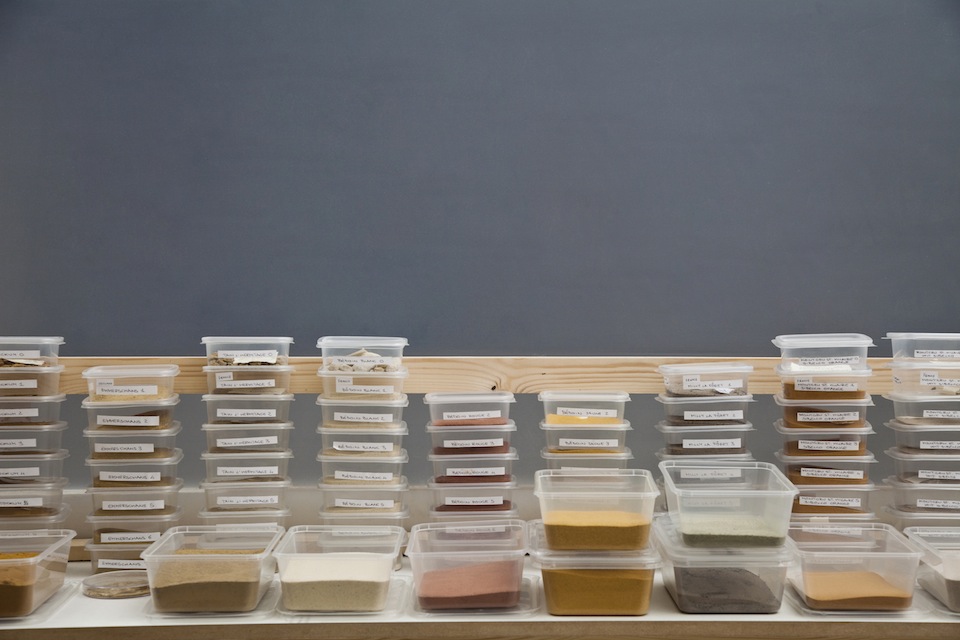
Atelier NL - Sand Project
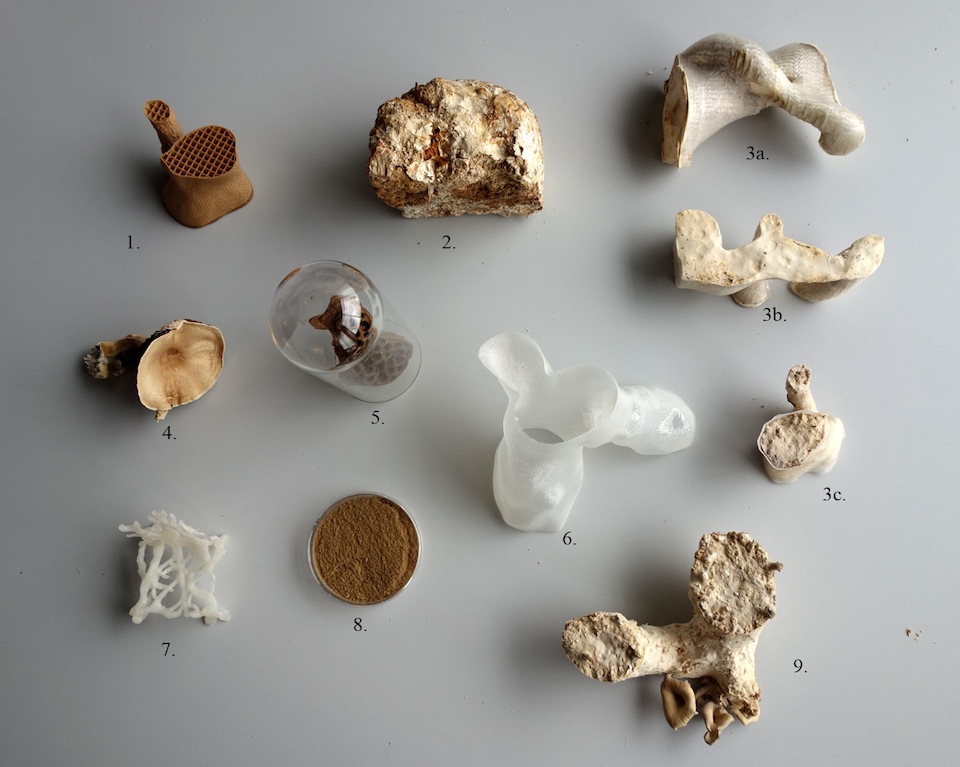
samples mycelium chair by Studio Eric Klarenbeek
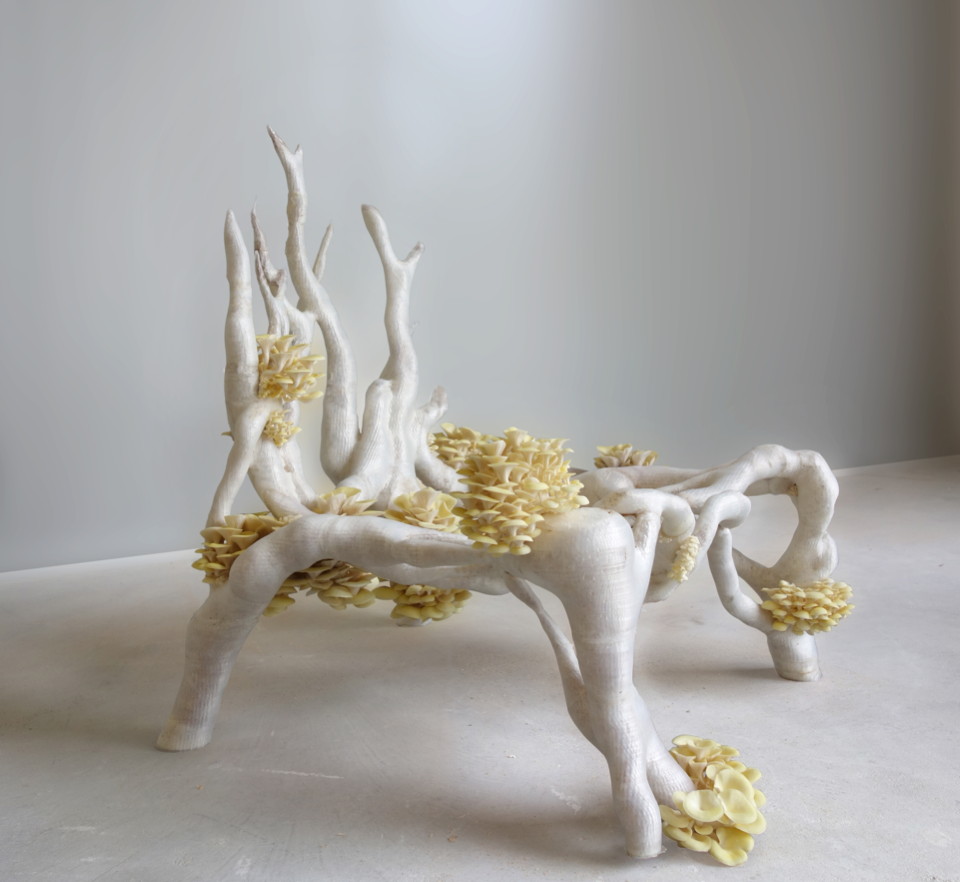
Mycelium chair by Studio Eric Klarenbeek
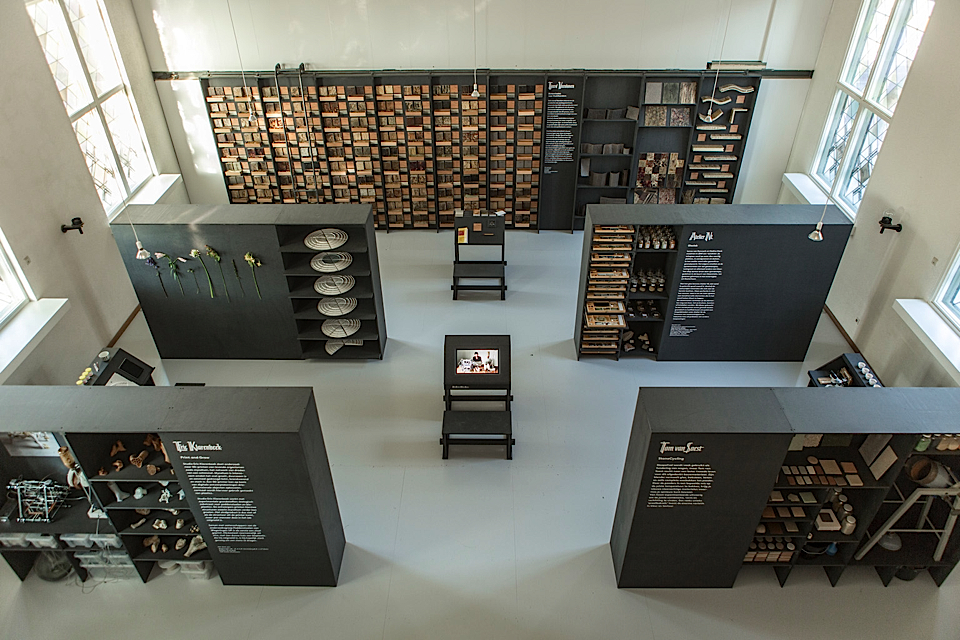
Monnikenwerk photo by © Mike Roelofs & Wouter Kooken
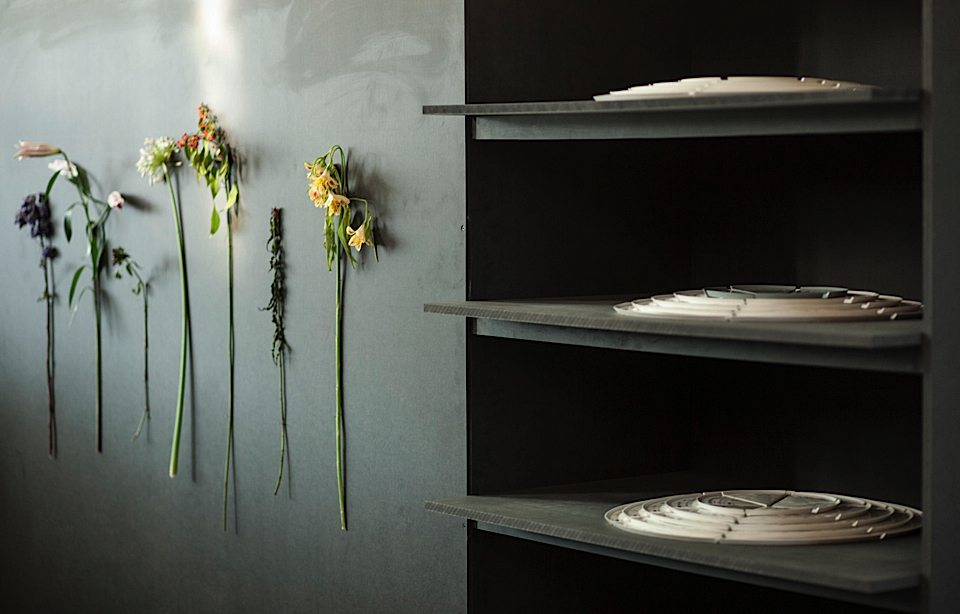
Monnikenwerk photo by © Mike Roelofs & Wouter Kooken
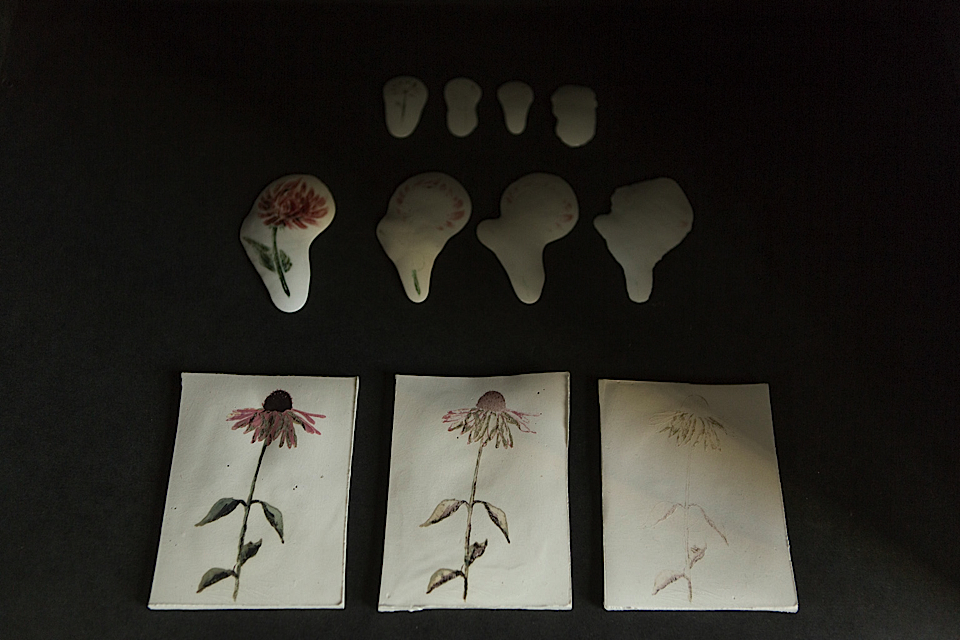
Monnikenwerk photo by © Mike Roelofs & Wouter Kooken
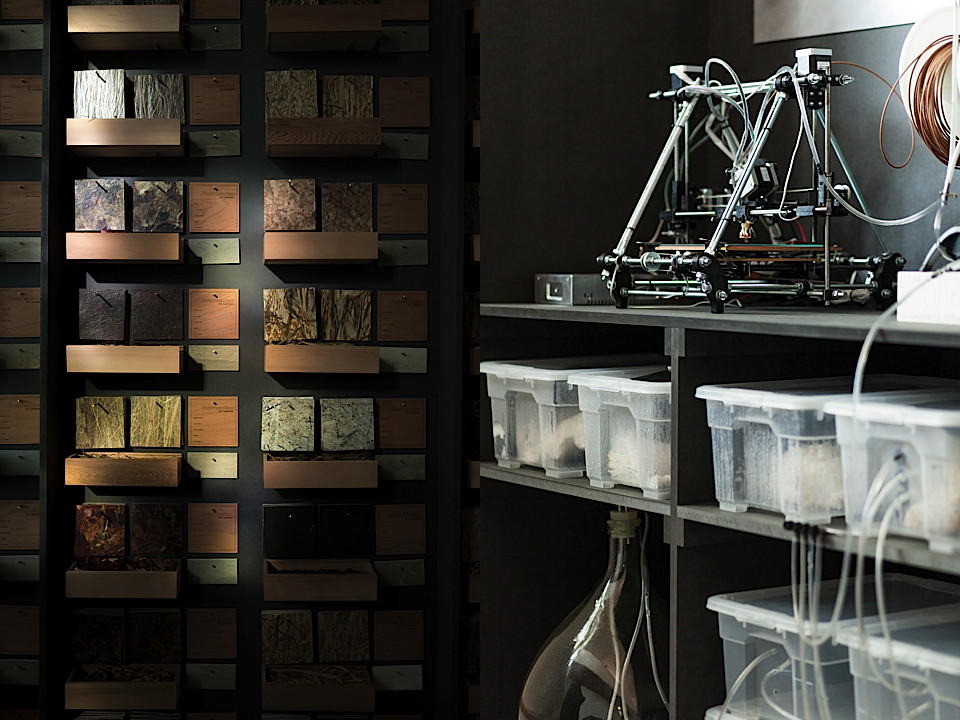
Monnikenwerk photos by © Mike Roelofs & Wouter Kooken
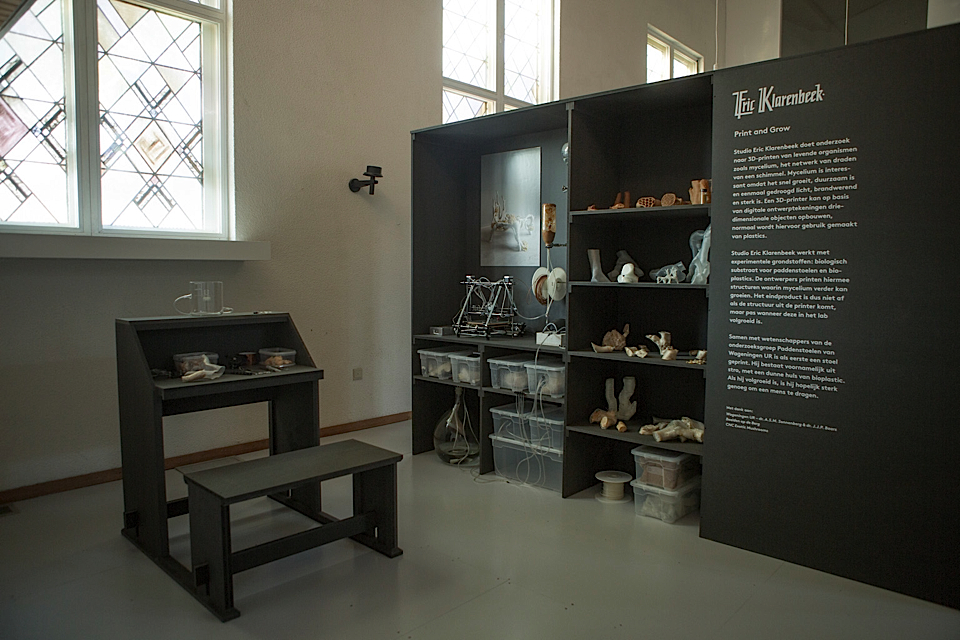
Monnikenwerk photo by © Mike Roelofs & Wouter Kooken
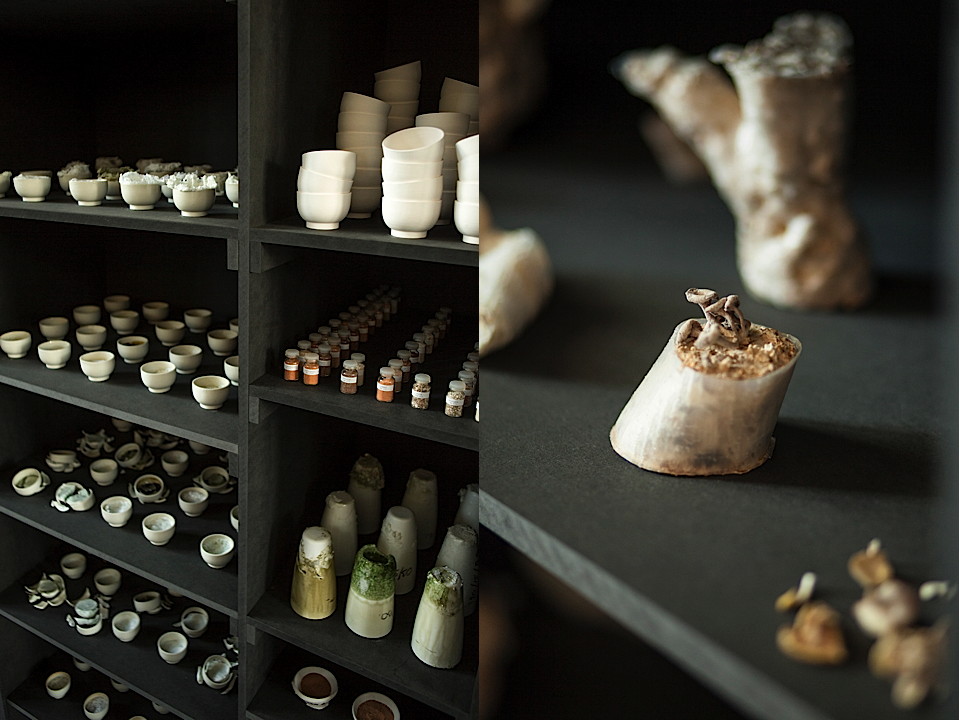
Monnikenwerk photos by © Mike Roelofs & Wouter Kooken
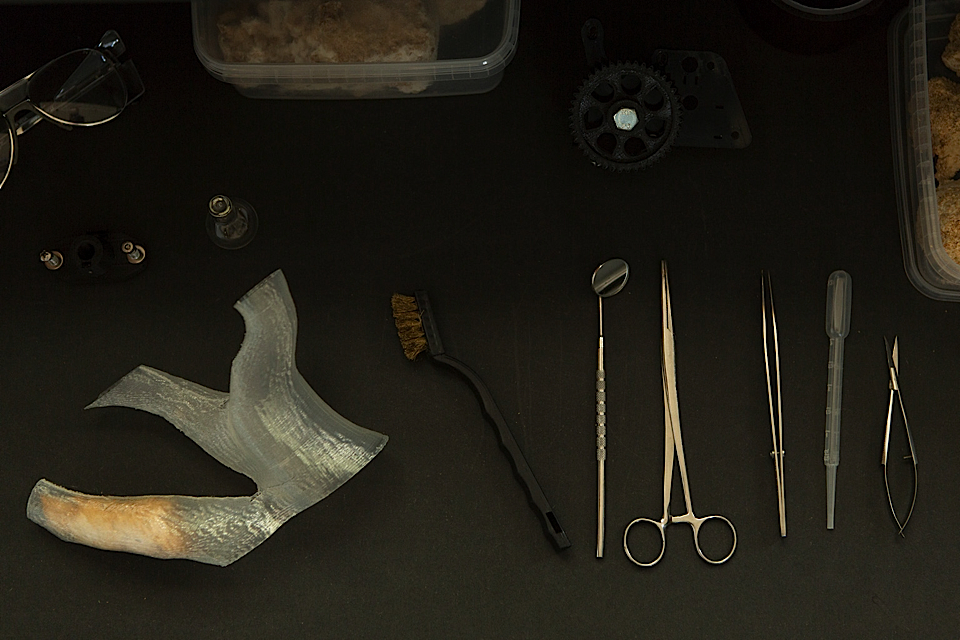
Monnikenwerk photo by © Mike Roelofs & Wouter Kooken
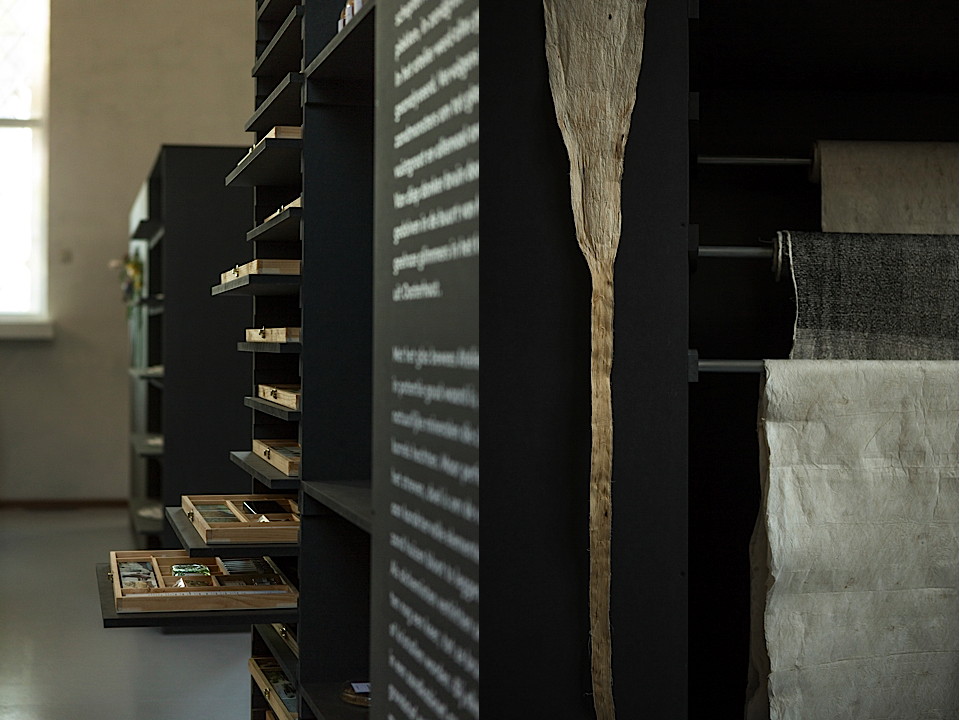
Monnikenwerk photos by © Mike Roelofs & Wouter Kooken
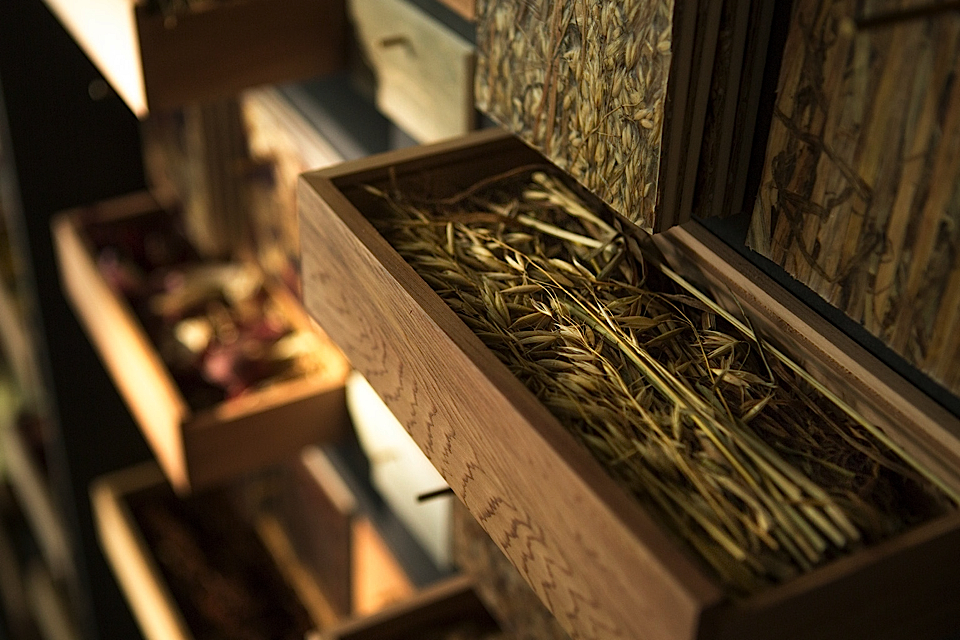
Monnikenwerk photo by © Mike Roelofs & Wouter Kooken
me Job, you Vlisco #DDW2013
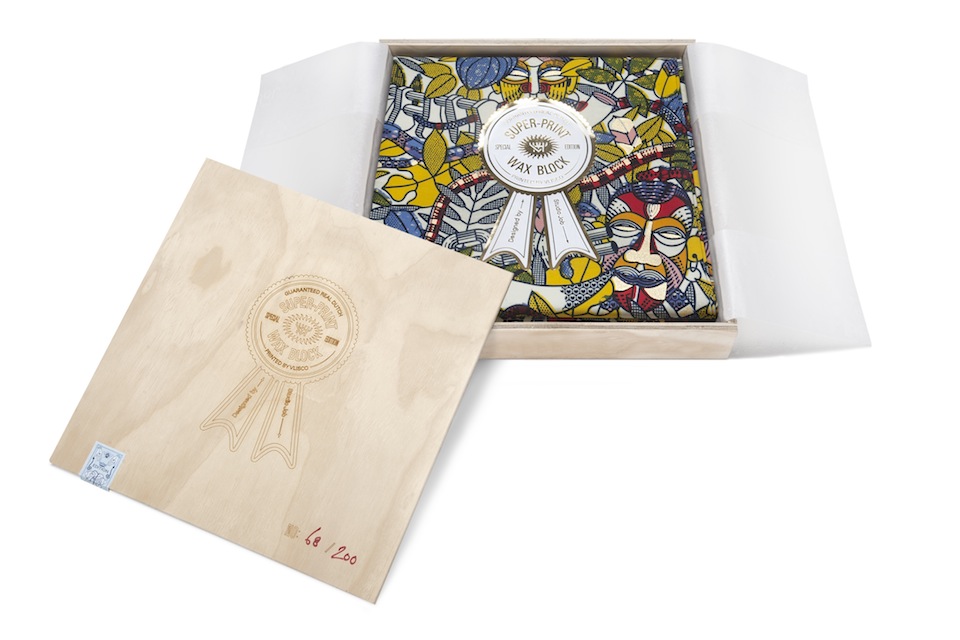
L'Afrique fabric 2013 design Studio Job material Wax Block print on 100% cotton, printed by Vlisco dimension W 120 x L 550 cm (6-yards) edition 200 pieces (numbered) packaging wood, wrapping paper, seal. Photo by L. Blonk
Vlisco, a textile brand that creates distinctive printed fabrics, showcased their work during Dutch Design Week in an exhibition that unveils the company history, current state of affairs and some steps into the future of their colorful oeuvre. Although well known in African cultures and global textile industry for their organic wax production process and bold aesthetics Vlisco has yet to enchant the European crowds.
"We decided to present our brand at Dutch Design Week because of the Dutch and Design context: to show that it is Dutch design. Even when the initial inspiration was Indonesian textile design, and over the years we have developed African context into the images, all visuals and products are designed in the Netherlands, already for more than a hundred years." creative director Roger Gerards states.
Walking through the exhibition my eye was drawn to a Congo chair, designed by Theo Ruth in 1952, and more specifically to its upholstery that stood out amongst the other printed textiles. The funky pattern manifested itself brilliantly on an chair named after an African country. As one of the latest works of Vlisco this piece turned out to be a collaboration with Studio Job, notorious for their redefinitions of decorative arts for the contemporary age. The limited edition fabric titled L'afrique is an intriguing jungle of African symbols and icons, a meeting of both Job's and Vlisco's qualities. "Job Smeets contacted me to suggest a collaboration on a textile design for their Land Rover project, which will be launched at the Pan art fair in Amsterdam. Besides the fact that the visual language between both our brands has similar semantics, Job was also interested in the arts & craft technique of the Vlisco Wax production. And Vlisco being a design product adored by West- and Central Africans, the design for Studio Job doesn’t copy the Vlisco design DNA but is a visualization of the ‘wooden shoes and windmills’ decoration of Africa itself. It reflects the cliché perception of Africa." explains Gerards.
With this collaboration Vlisco signals its aim to develop a new assortment in the coming years, which will be arts and crafts based, expanding their knowledge of textiles to areas such as accessories- and fashion design. Interior design and other uses of their textiles, like in the field of art, are under development as well and it is seems to be a matter of time before the vibrant iconography could become embedded into our daily lives.
Jules van den Langenberg
Jules van den Langenberg recently graduated at Design Academy Eindhoven. He initiates-, curates- and exhibits projects in which applied art and design are used as a medium to cultivate culture. Jules approaches the world as a library full of potential, with an inexhaustible resource: humans and their skills. Within this wonderland of opportunities the young -Willy Wonka like- artistic industrialist travels to meet people and research the social- and cultural impact of all that is man made.
Through associative thinking Jules develops narratives and concepts which form fundaments for publications, exhibitions and self initiated projects as well as commissioned works. During Dutch Design Week 2013, Jules shares with us some of his discoveries and « coup de coeur ».
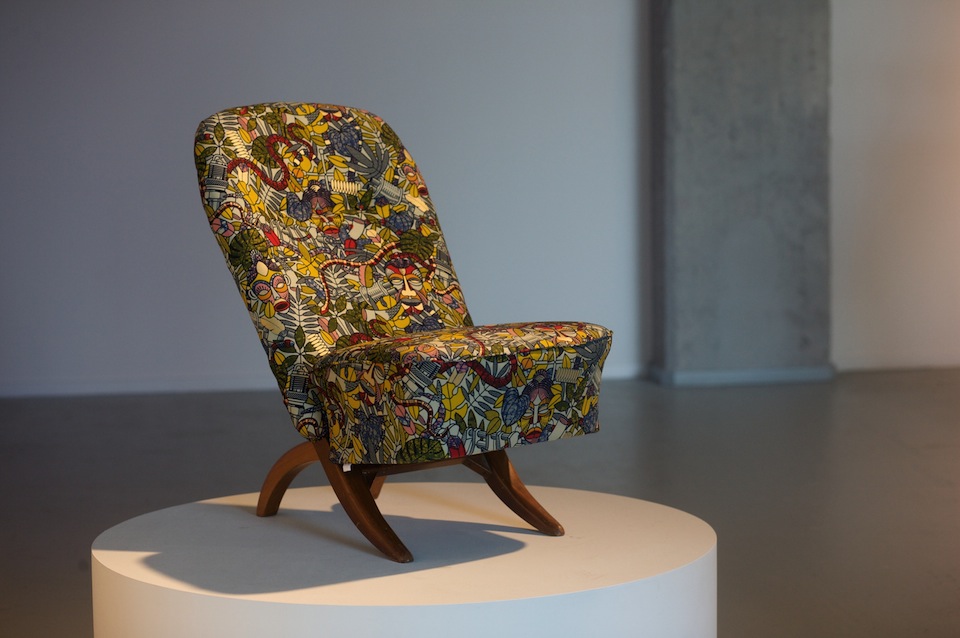
Congo Chair design Theo Ruth 1952 dimension h 85 cm x w 52 cm x d 90 cm production chair by Artifort (jaren 50) upholstery L'Afrique design Studio Job 2013 fabric: Super Wax block print on 100% cotton, printed by Vlisco
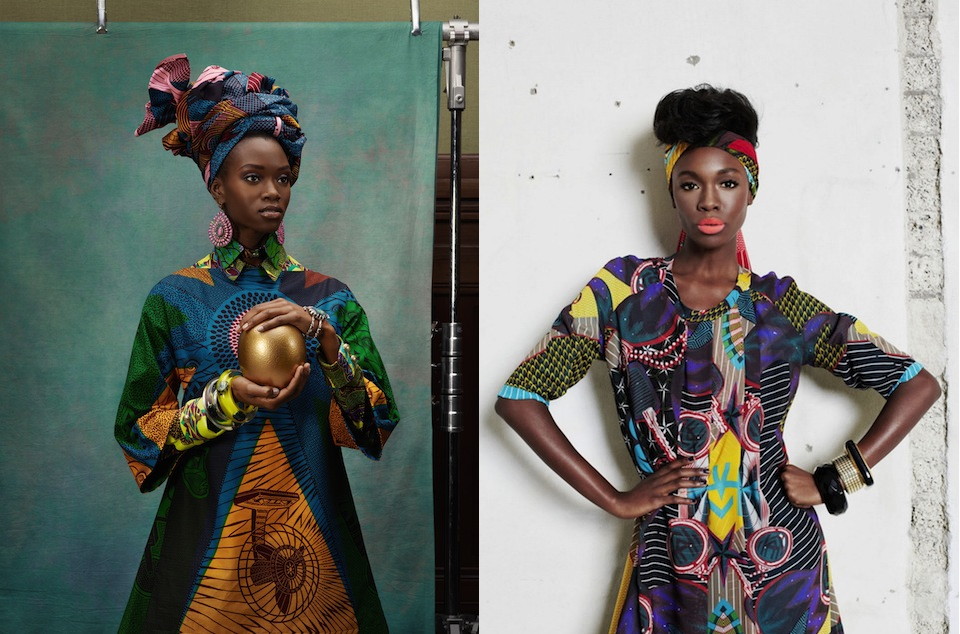
Left: Collection Hommage L' Art Spring 2013 photo Koen Hauser. Righ: VLISCO Press Online Fashion Look
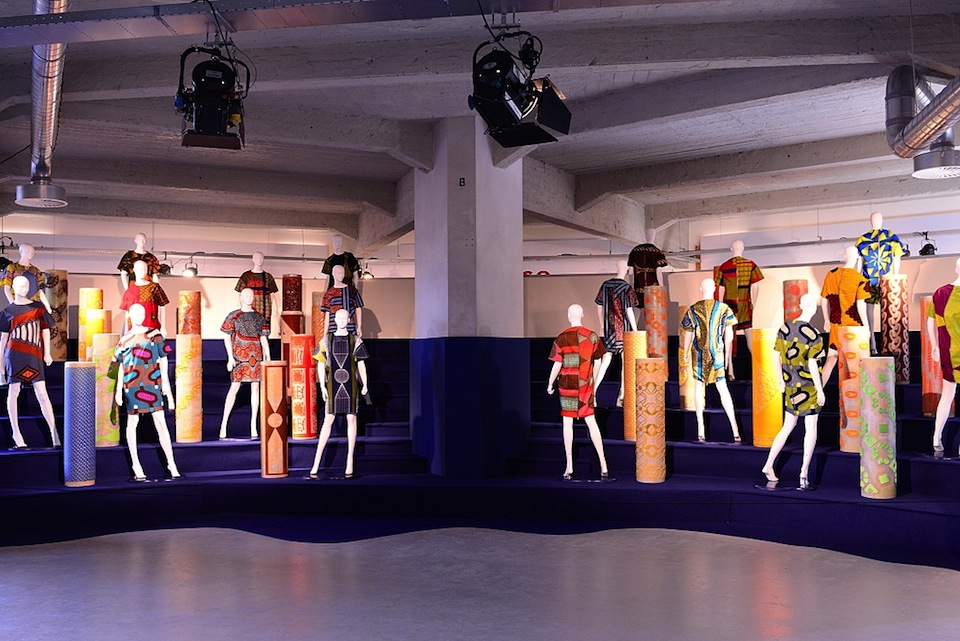
Visco Unfoldex exhibition - photo Kirsyvan Prooijen
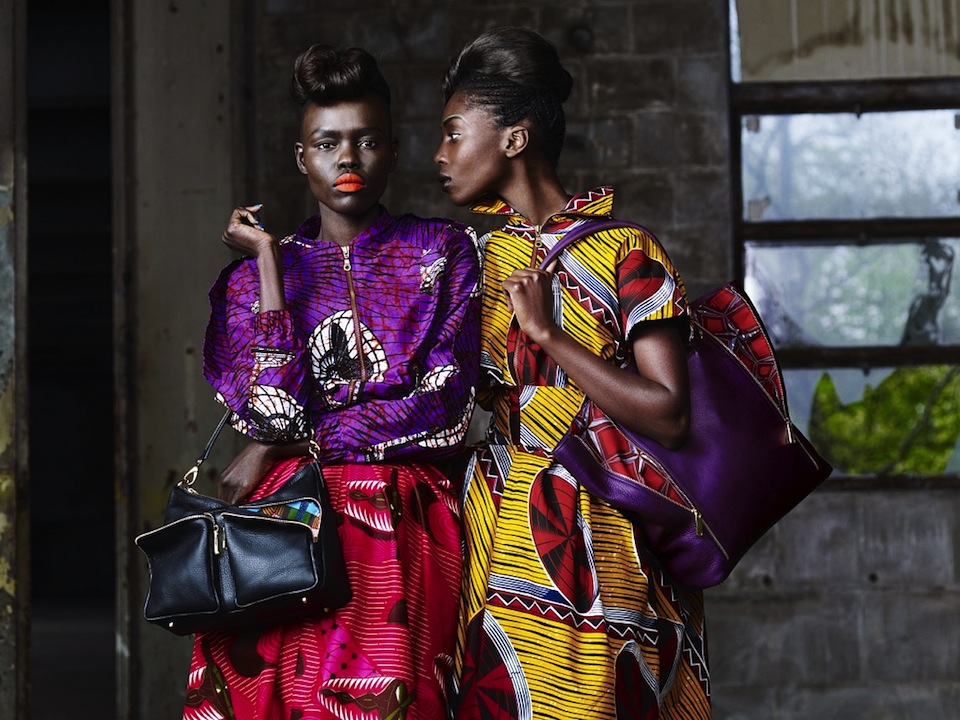
VLISCO Press Online Campaign Funky Grooves
a collective of individuals #DDW2013
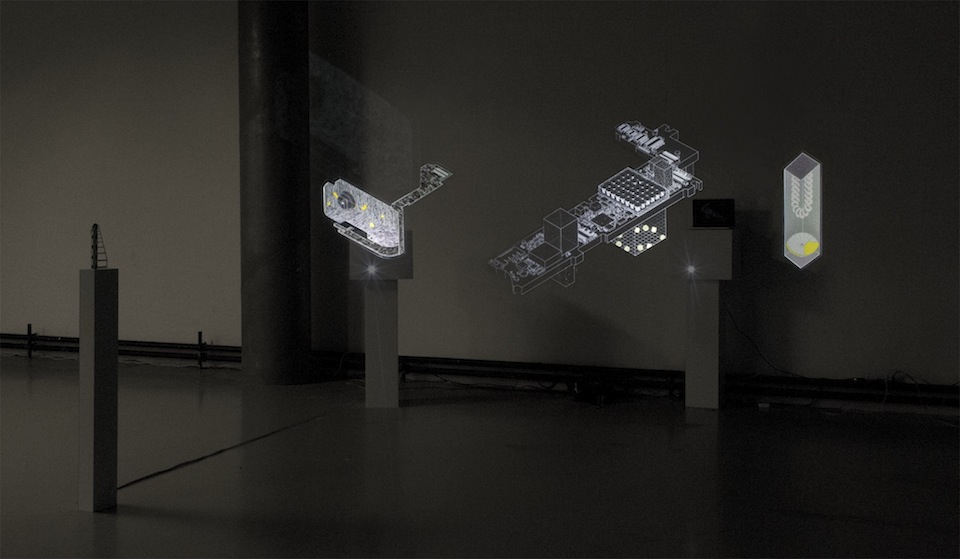
Invisible Manifestations of a Wireless Worlds by lissa zengerink
The graduation show at Design Academy Eindhoven remains a vital organ of Dutch Design Week and is strengthened this year by a parallel exhibition in the local Van Abbe Museum. At both locations the works of designers and artists are showcased under the title Self Unself, narrated and curated by one of the school's tutors Jan Konings in collaboration with its creative director Thomas Widdershoven.
Amongst the recent graduates a tendency towards researching- and opening up the relationship between humans and technology can be felt. A sense of hands on- and low tech innovation is omnipresent, projects such as Phoneblocks by Dave Hakkens and Shared Reflections by Jon Stam illustrate a future in which the objects we surround ourselves with are engaging and have a self explanatory nature.
Lissa Zengerinks graduation project Invisible Manifestations of a Wireless Worlds stands out as she aims to materialize personal digital data and visualizes an unseen world.
"Mobile phones, laptops and tablets have become personally and intimately entangled with our daily lives. They contain our emails, messages, photographs and other data, but beneath the shiny surface a magical world is hidden. Hidden not only because these devices are not made to be opened, but because our senses can only detect a small part of their electronic behavior." The Design Academy graduate explains.
In an interactive installation three projected animations capture the amount of data that is transmitted at that moment in space. The projections tell the story of one data particle, The Yellow One, a little creature that represents data such as a Facebook update, phone call or text message.The Yellow One encounters a variety of situations during his ride on the virtual highway. It arises, travels, delivers and dies.
Zengerinks' poetic yet quirky interpretation of the electromagnetic landscape within our world is mesmerizing and a reminder of the fact that we are never alone in the collective of individuals.
Jules van den Langenberg
commonplace.nl/sharedreflections
Jules van den Langenberg recently graduated at Design Academy Eindhoven. He initiates-, curates- and exhibits projects in which applied art and design are used as a medium to cultivate culture. Jules approaches the world as a library full of potential, with an inexhaustible resource: humans and their skills. Within this wonderland of opportunities the young -Willy Wonka like- artistic industrialist travels to meet people and research the social- and cultural impact of all that is man made.
Through associative thinking Jules develops narratives and concepts which form fundaments for publications, exhibitions and self initiated projects as well as commissioned works. During Dutch Design Week 2013, Jules shares with us some of his discoveries and « coup de coeur ».
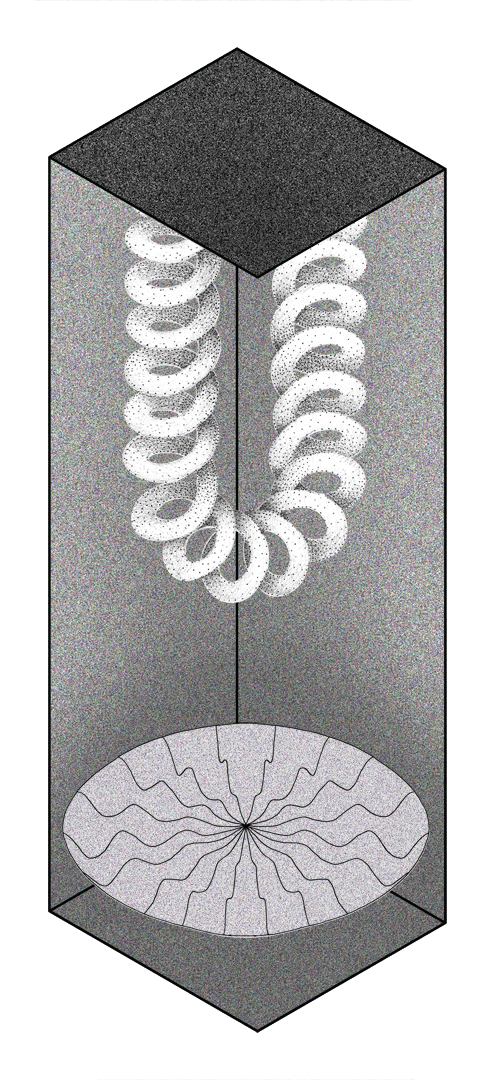
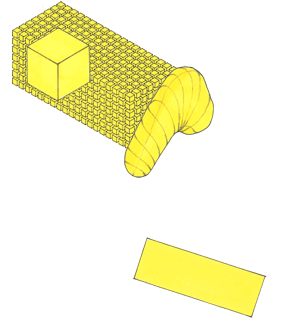
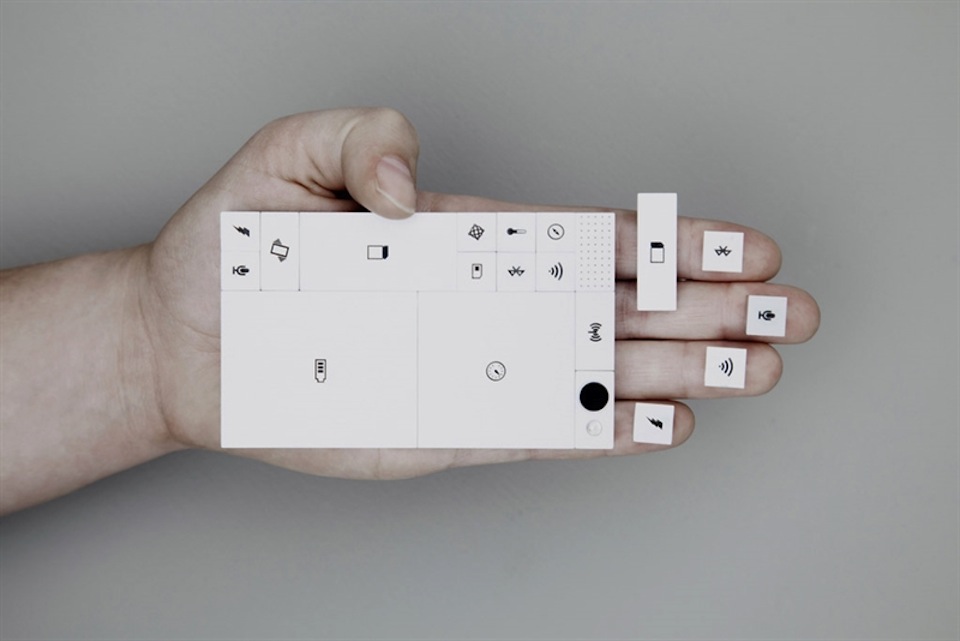
Dave Hakkens - Phone Bloks
convoi exceptionnel #DDW2013
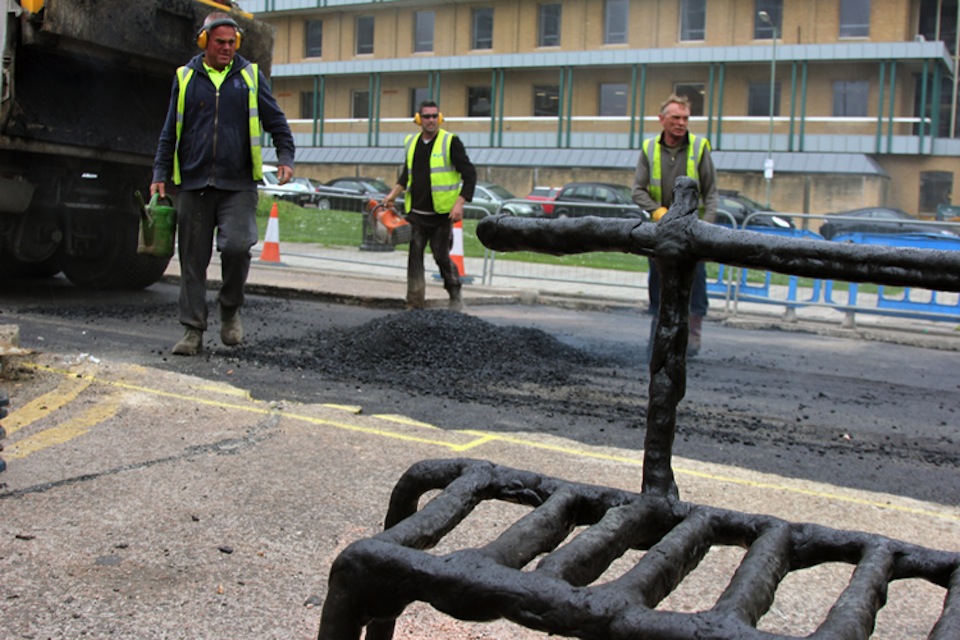
josh bitelli - Roadworkers & white- liners
Several designers collectively present their work during Dutch Design Week, the Convoi Exceptionnel exhibition in one of the many industrial buildings in the Strijp area of Eindhoven is the temporary platform for designers and artists like Carolina Wilcke, Marjan van Aubel, buro BELEN and Reinier Bosch. Recent graduate from Design Academy Eindhoven, Willem van Doorn, and British designer Josh Bitelli also present themselves there, two individuals that share a playful yet responsible attitude leading to experimental projects in which elements of our existing world are transformed.
In the past year Willem returned to the farm where he grew up. Being back on his native soil made him reconsider his environment and the materials and opportunities it yields. The disused gas well beneath the land inspired him to build a bio-digester which runs on local waste. He uses the gas to light his workshop and intends to spread this self-sufficiency principle, the project is a first step towards using the farm as a testing ground for new ideas and designs. During Dutch Design Week he exhibits 'Illumination by digestion', an industrial container reconstructed to function as a bio-digester, which fuels a gas light. The young designer aims to create more site-specific gas applications in the coming year.
Josh Bitelli's project 'Palmeira Bench, Cabinet, Chair and Repaired Vessels in Asphalt and Line paint' is of a like minded spirit yet his project is more of an urban intervention. Fascinated by the complex web of roads in Britain he aims to revalue the making of these and along the way Josh points out that however the construction activities are integral to the smooth running of everyday life, they are seen as little more than an inconvenience. The designer borrowed tools and knowledge from road workers Dean, Joe and Ben to manipulate asphalt and apply it to a range of furniture and vessels, emphasizing the craft of road construction works and its beauty.
Jules van den Langenberg
Jules van den Langenberg recently graduated at Design Academy Eindhoven. He initiates-, curates- and exhibits projects in which applied art and design are used as a medium to cultivate culture. Jules approaches the world as a library full of potential, with an inexhaustible resource: humans and their skills. Within this wonderland of opportunities the young -Willy Wonka like- artistic industrialist travels to meet people and research the social- and cultural impact of all that is man made.
Through associative thinking Jules develops narratives and concepts which form fundaments for publications, exhibitions and self initiated projects as well as commissioned works. During Dutch Design Week 2013, Jules shares with us some of his discoveries and « coup de coeur ».
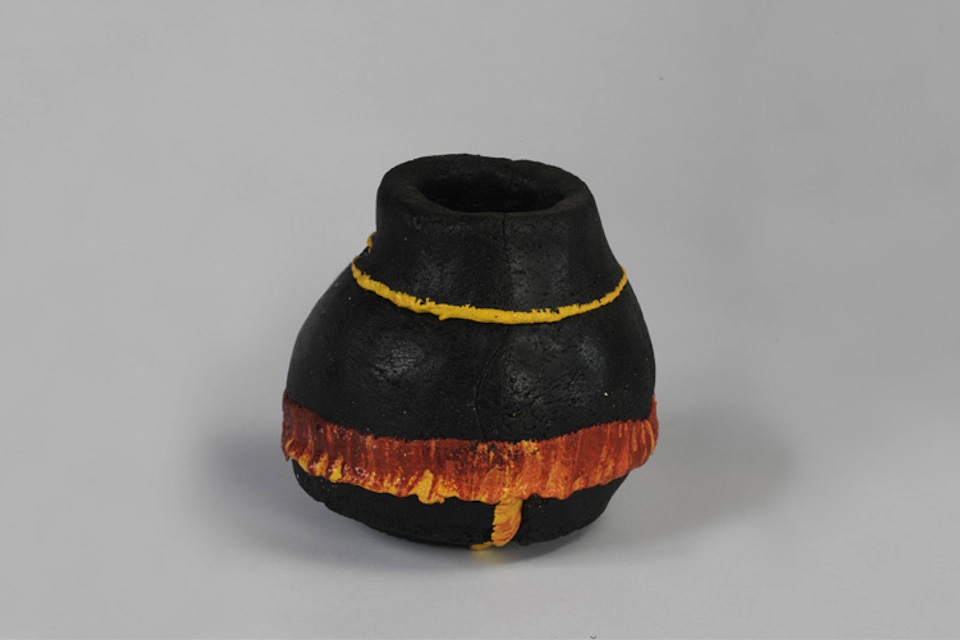
vase 1 Josh Bitelli
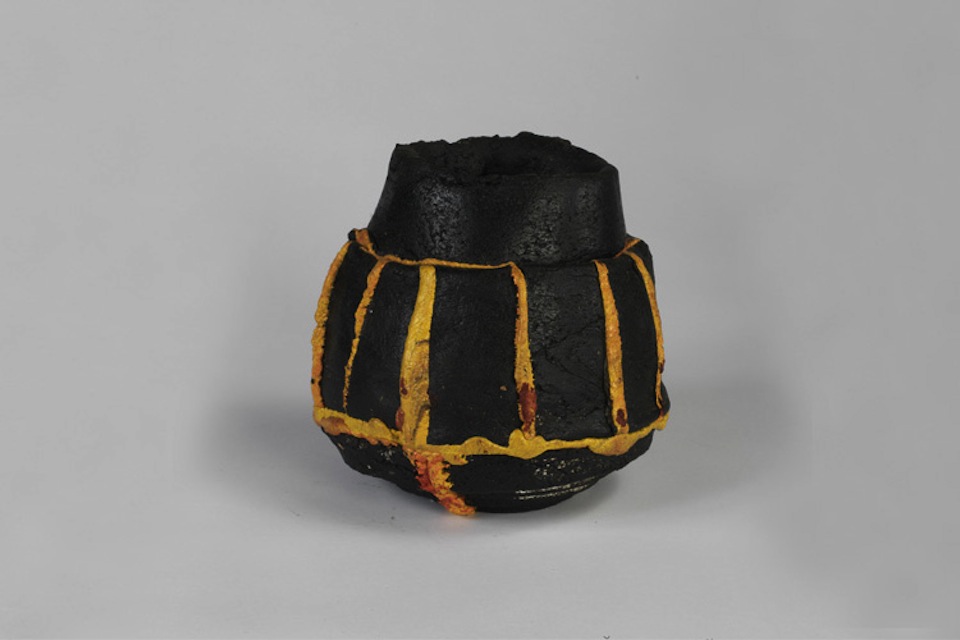
vase 2 Josh Bitelli
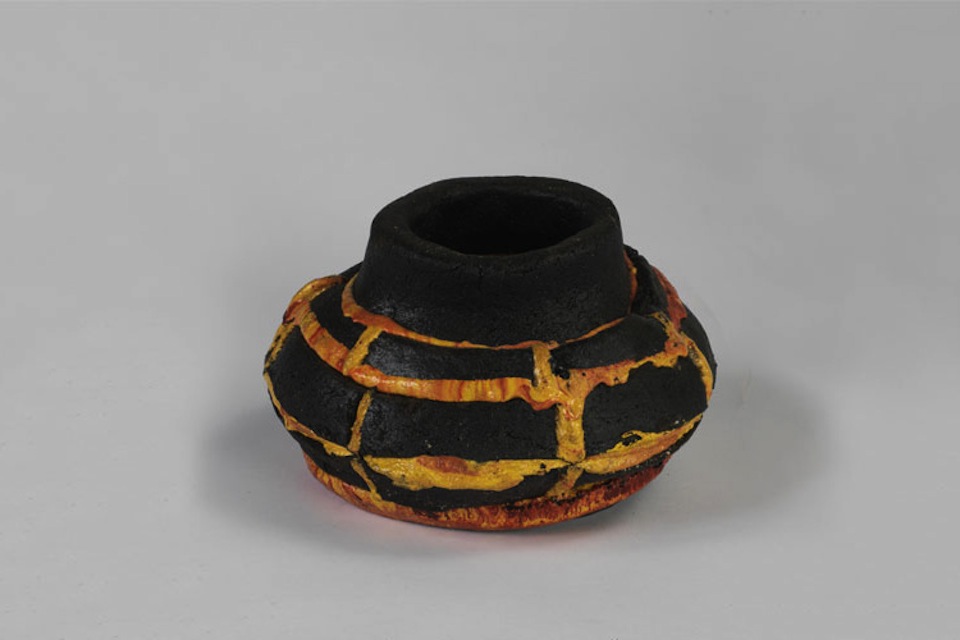
vase 3 Josh Bitelli
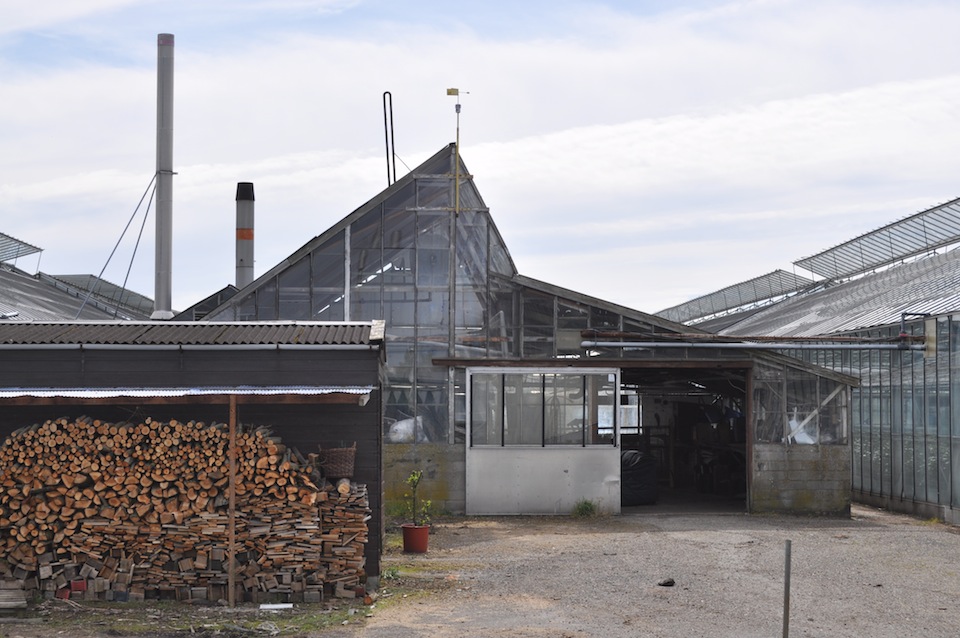
heat house inspiration by Willem van Doorn
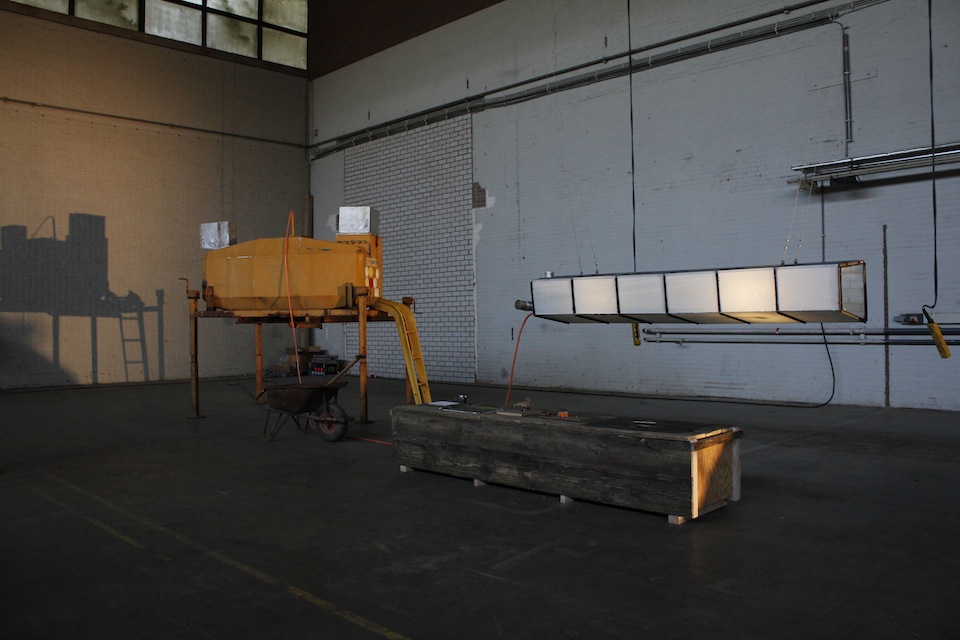
' Illumination by digestion' Willem van Doorn
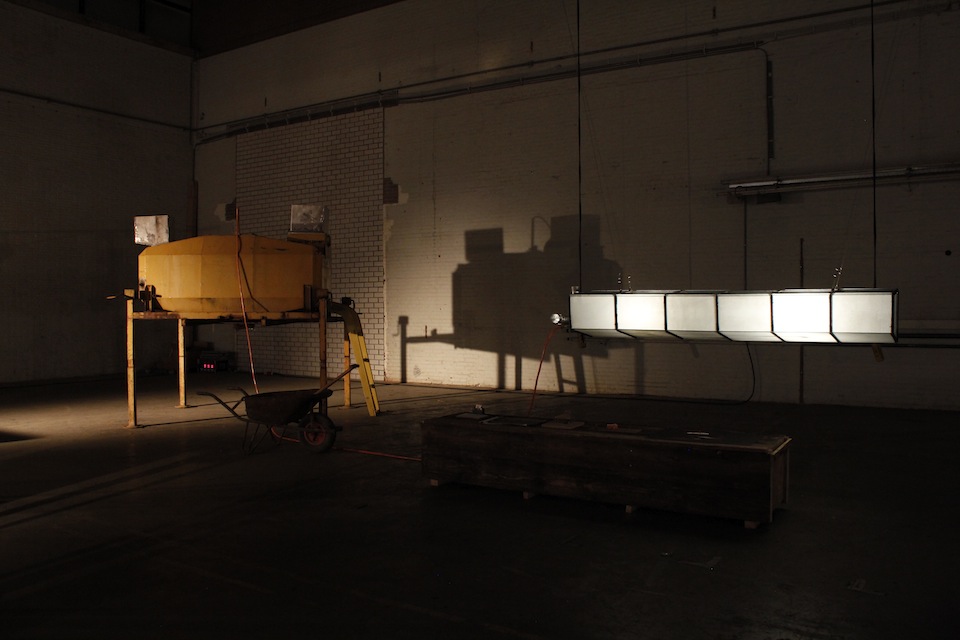
' Illumination by digestion' Willem van Doorn
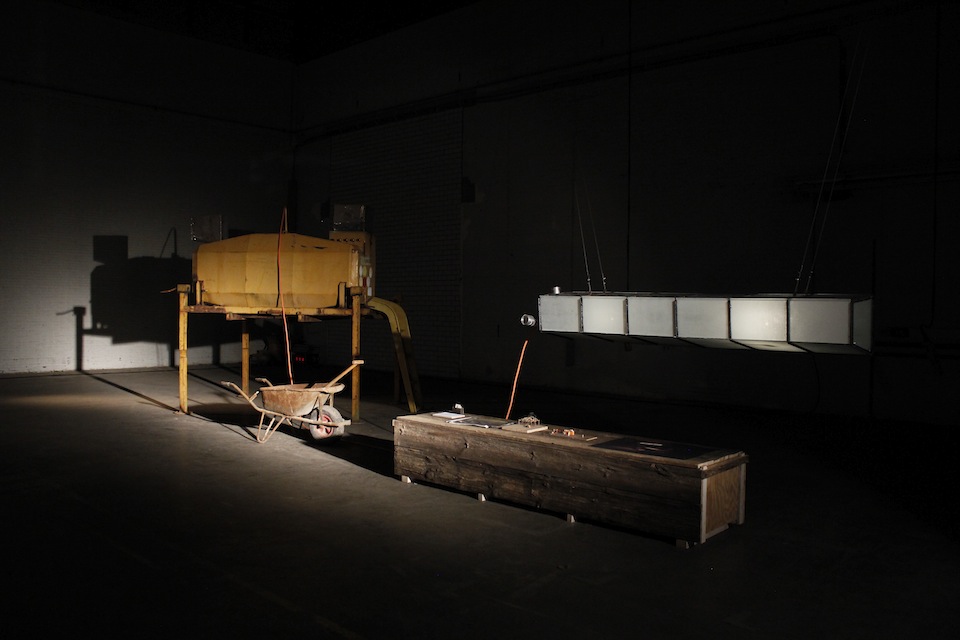
' Illumination by digestion' Willem van Doorn
a tribute to dailyness #DDW2013
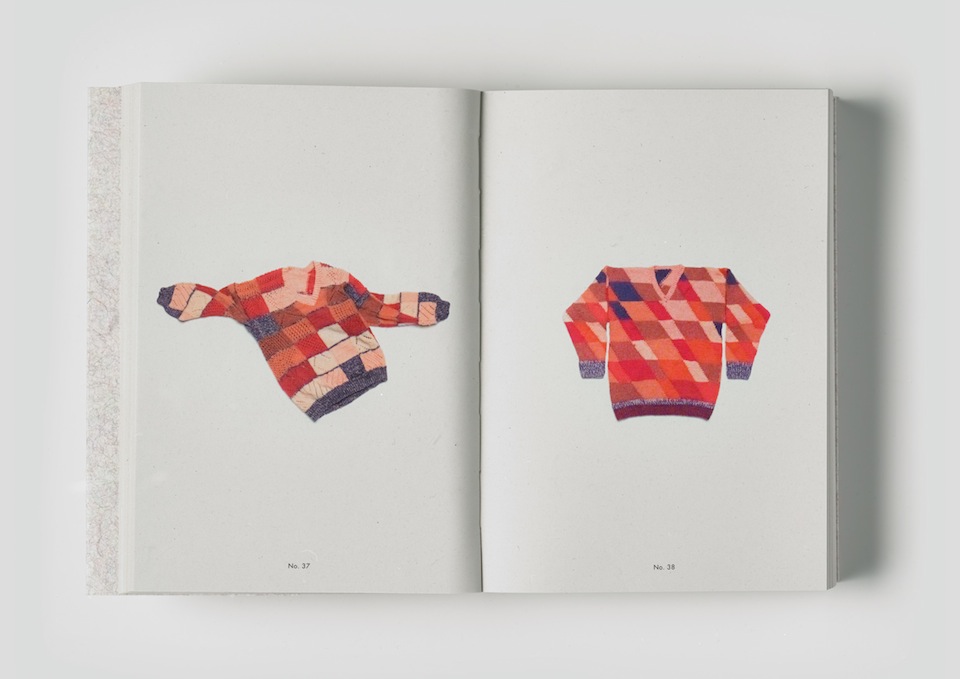
photo Mathijs Labadie, Roel van Tour, Christien Meindertsma
The Dutch Design Awards ceremony marks the start of the Dutch Design Week in Eindhoven, these annual awards reward projects in categories such as Communication, Spatial and Product design and nominated projects should represent highlights of what happened in the Dutch cultural landscape in the past year.
The warm hearted project 'The collected knitting work of Loes Veenstra from the Tweede Carnissestraat' by Christien Meindertsma stood out because of its bold yet purist character. Meindertsma pays a tribute to dailyness by portraying the knitting work of Loes Veenstra from Rotterdam, a lady that has knit five hundred jumpers since 1955, in a small book.
Alongside the book she also organized a parade, proudly exhibiting Loes Veenstra herself and her work, surrounded by a herd of people wearing her jumpers. Like a local hero she was driven through the streets of Rotterdam.
Christien explains: "Loes had been knitting since the 50's and had given much of the knitwork away but knitted so much that 550 sweaters were still in here house. Because Loes did not have much money, most yarns were donated to her over the years and she would always use up all the last bits in different sweaters. In the book I tried to categorise the sweaters so that you can see the same yarn of patern return in different pieces. What is quite special is that almost all pieces were knitted without a premade pattern, she just improvised and used what she had at the time. I personally like the fact that Loes' knitwork also gives a nice view on all the new kinds of yarn materials that were invented since the 1950's.
(like synthetic silver & gold threads and neon pink angora wool from the 80's... )
But besides all the colour splendour, I thought there was also something tragic about the fact that all those sweaters had ever been worn. So I organised a surprise flashmob for Loes in her street with Wandschappen in cooperation with a local dancers, a band, a choir, a marching band, a twirl group, camara men and lots of volunteers who were all wearing the sweaters. I color coordinated who was wearing which sweater as precise as possible so that Loes and the other viewers would get to see all the knitwork at once in the best possible way."
The selection committee of the Dutch Design Awards note: "this project is a good translation of a special story into a carefully designed book. Moreover, the flash mob puts a smile on your face. Once again, Meindertsma succeeds in presenting a project in a surprising context. The committee greatly appreciates the cooperation within the project and its impact in the neighborhood." Remarkable is that Christien was the winner in the category Best Autonomous Design with a project in which she narrates the life and works of someone else. She positioned herself in a humble place and is author of the context that was created.
A similar social spirit is addressed by Moniker, winners in the Best Motion Design category, with their project 'Do Not Touch', and by Arne Hendriks, winner in the Future Concept category, with his project 'The Incredible Shrinking Man'.
Design embedded in daily life.
Jules van den Langenberg
www.theincredibleshrinkingman.net
Jules van den Langenberg recently graduated at Design Academy Eindhoven. He initiates-, curates- and exhibits projects in which applied art and design are used as a medium to cultivate culture. Jules approaches the world as a library full of potential, with an inexhaustible resource: humans and their skills. Within this wonderland of opportunities the young -Willy Wonka like- artistic industrialist travels to meet people and research the social- and cultural impact of all that is man made.
Through associative thinking Jules develops narratives and concepts which form fundaments for publications, exhibitions and self initiated projects as well as commissioned works. During Dutch Design Week 2013, Jules shares with us some of his discoveries and « coup de coeur ».
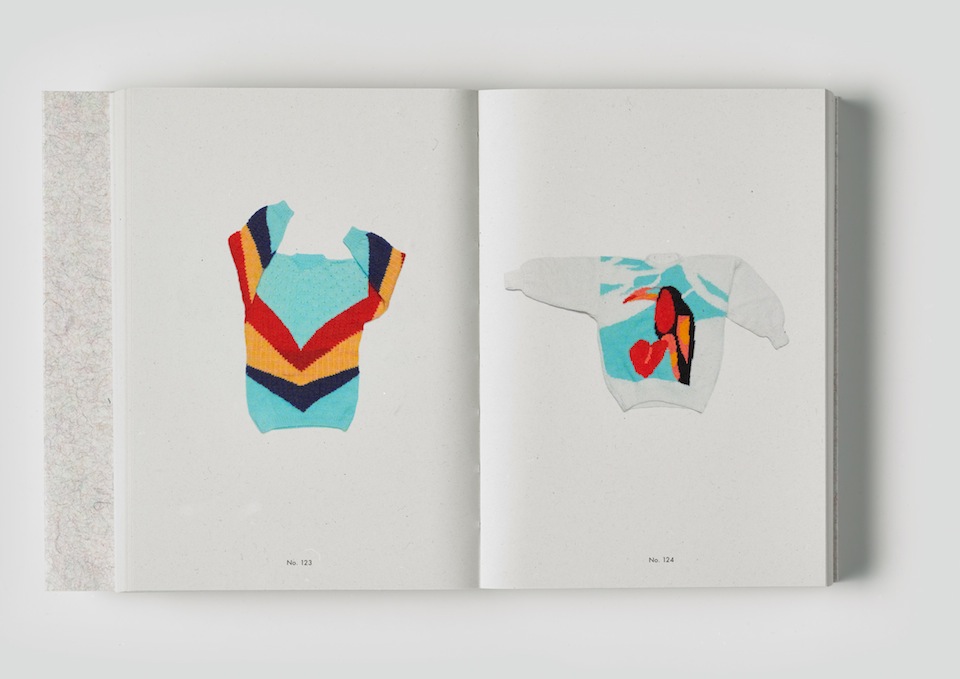
photo Mathijs Labadie, Roel van Tour, Christien Meindertsma
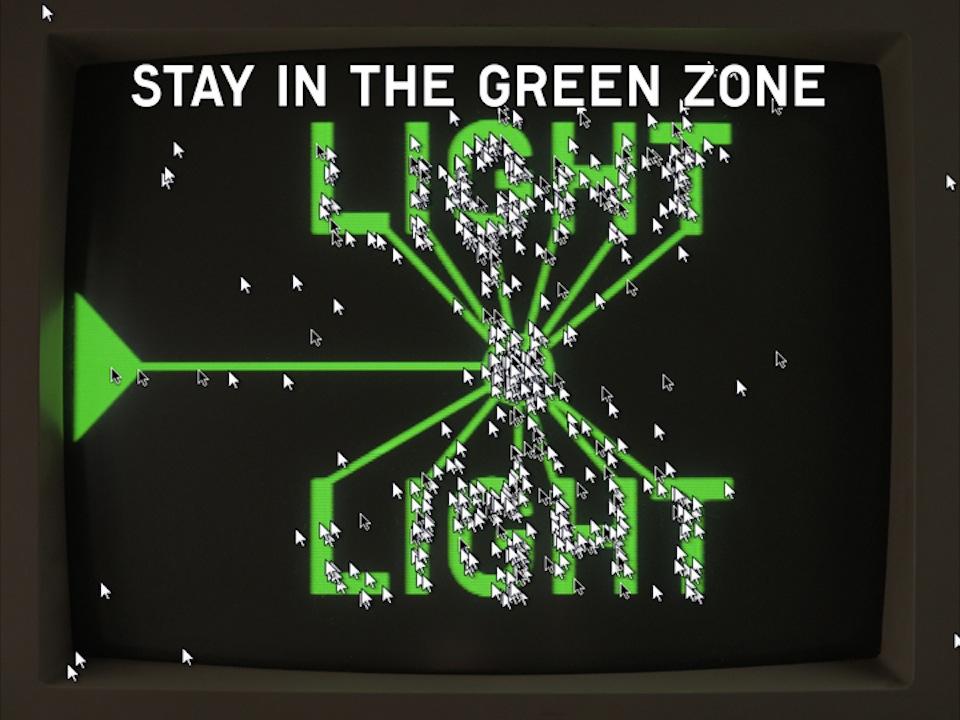
Studio Moniker 'Do Not Touch'
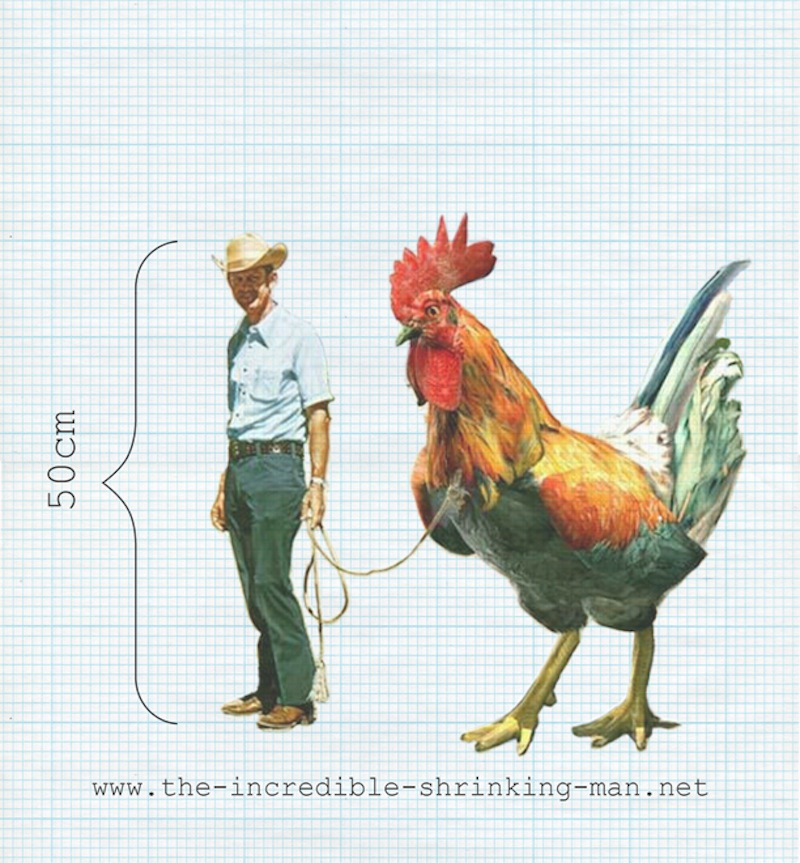
Arne Hendriks The Incredible Shrinking Man
distilling nature’s poetry #DDW2012
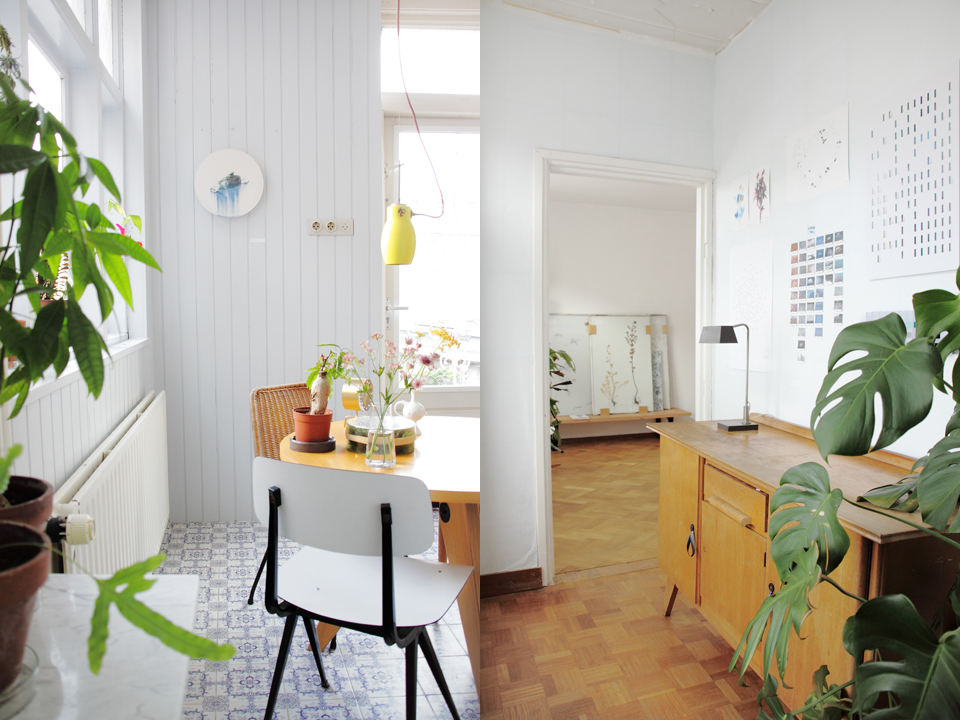
"Collection at Home" by Studio Maarten Kolk & & Guus Kusters
Jules van den Langenberg is currently graduating at Design Academy Eindhoven. His fascination for how design arises has led to establishing a nomadic production house in which he initiates and curates design products and projects. In collaboration with designers, producers, craftsmen and experience experts of all kinds Jules carefully intertwines the potential, qualities and dreams of all individuals involved in co-creation processes.
During Dutch Design Week 2012 - a major event hosted in Eindhoven, The Netherlands, committed to showcasing the country's burgeoning design and technological innovators - Jules will share with us some of his discoveries and "coup de coeur".
Amongst the crowded exhibitions during Dutch Design Week’s last opening days the ‘at home’ exhibition by Studio Maarten Kolk & Guus Kusters is a pleasant stop to catch one’s breath. Visitors of the design week can visit the private show on request and get the chance to see recent projects along with the body of work Kolk & Kusters created in the past years. In the intimacy of their home the designers manage to create a gallery like context. Walking through the apartment it becomes apparent that the focus of the duo has shifted to doing mainly self-initiated projects and autonomous work.
In a series of porcelain plates titled ‘Marine Snow’ the designers translate the behavior of the ocean in a technique, an imprint of cobalt and copper glaze is affected by the rising- and falling of an artificial tide. Beautifully capturing a moment in time on porcelain. In the ‘Waddenzee’ series Kolk & Kusters portrays a unique nature area in The Netherlands, their findings in the landscape amongst others resulted in a ‘Seaweed herbaria’.
While wandering along the Dutch coastline the foamy waves of the Waddenzee intrigued the designers. Specifically what was hidden in the water, seaweeds drifting in a white fog. “They are beautiful drifting and flowing through the water. In a way we wanted to catch this moment and bring it home with us, which of course is impossible. By using polyester and special pigments we tried to capture the beauty of the weeds floating in the sea in an object”. Kolk & Kusters work method involves carefully planned manufacturing however integrating a certain uncontrolled, natural, element.
Their craft is distilling nature’s poetry into objects. In the years to come the duo wants to continue working with their fascination for materializing nature, it’s colors and it’s curious phenomena, and use this to enrich the human habitat.
By now the Dutch Design Week has come to an end and so is this series of reviews concerning Dutch Design. Jules will focus on graduating at Design Academy Eindhoven and will be presenting the very first projects of his nomadic productionhouse during Dutch Design Week 2013.
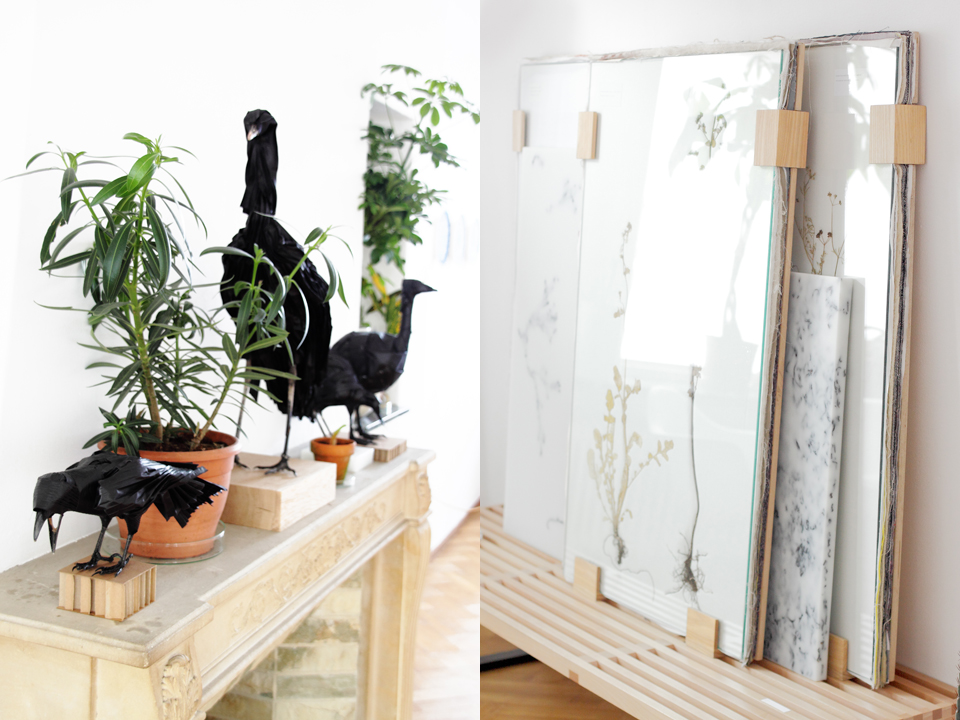
"Collection at Home" by Studio Maarten Kolk & Guus Kusters
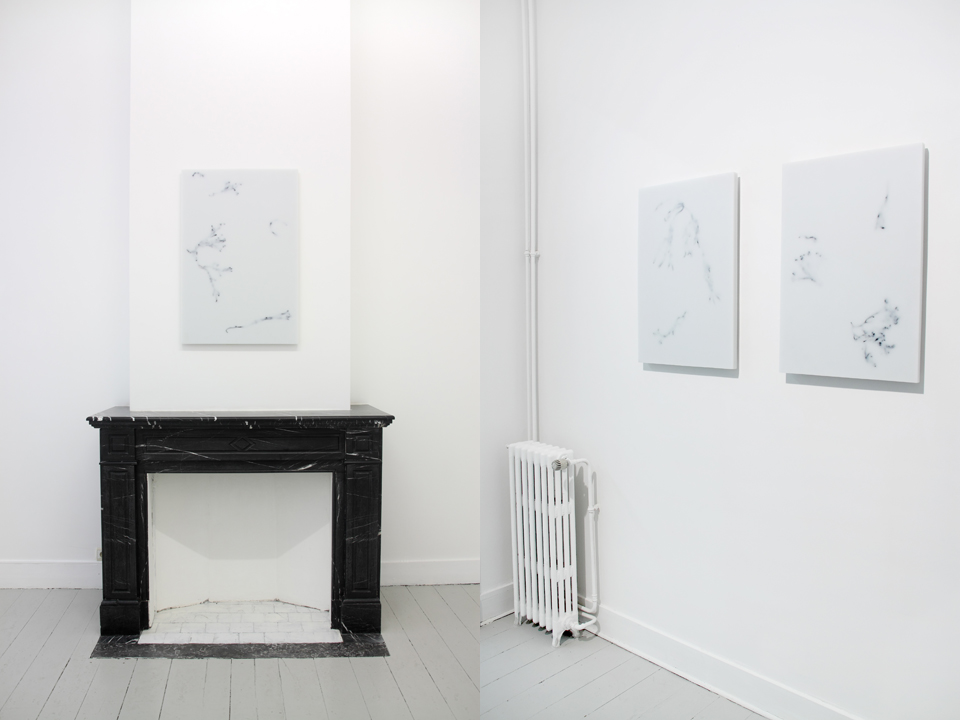
"Waddenzee Herbaria" by Studio Maarten Kolk & Guus Kusters
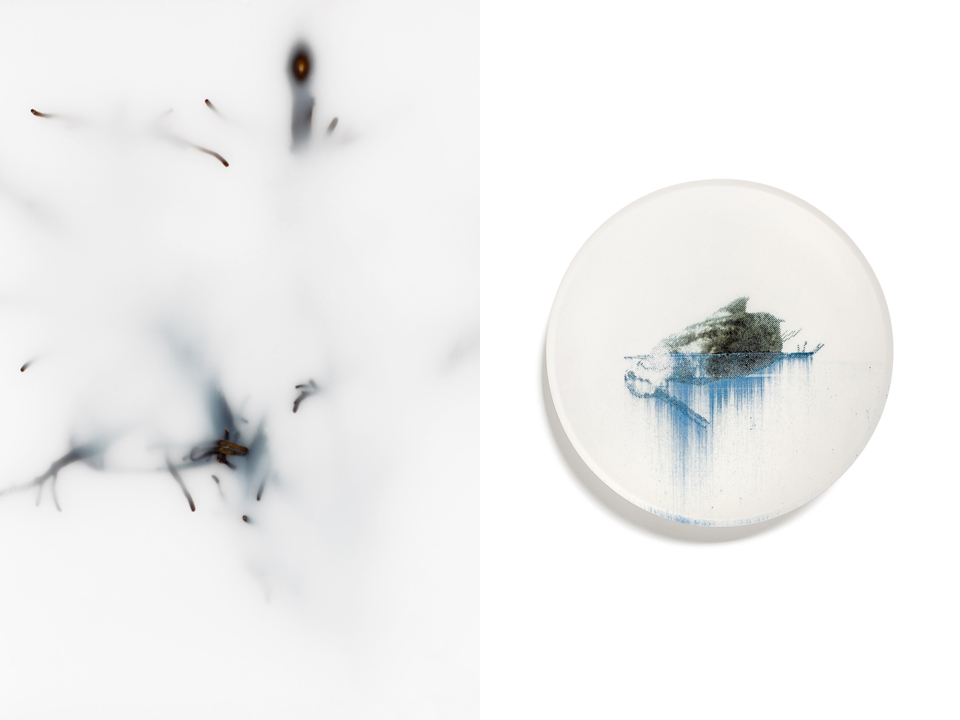
Left :"Waddenzee Herbaria" Right: "Marine Snow" by Studio Maarten Kolk & Guus Kusters
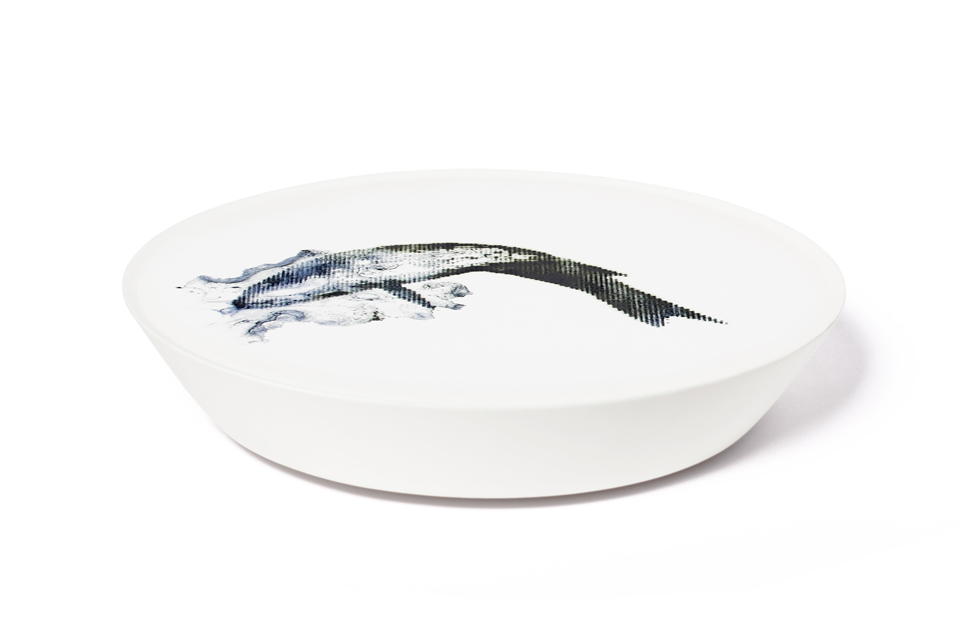
"Marine Snow" by Studio Maarten Kolk & Guus Kusters
shaping bodies, relaxing minds #DDW2012
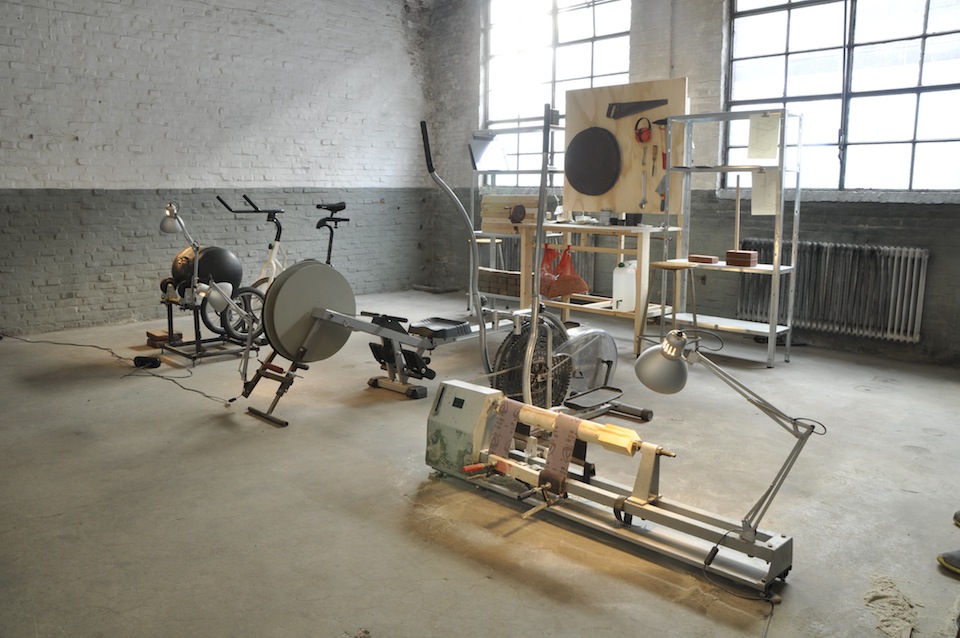
Shaping bodies by Bas Geelen and Erik Hopmans photos by Kim Costantino
Jules van den Langenberg is currently graduating at Design Academy Eindhoven. His fascination for how design arises has led to establishing a nomadic production house in which he initiates and curates design products and projects. In collaboration with designers, producers, craftsmen and experience experts of all kinds Jules carefully intertwines the potential, qualities and dreams of all individuals involved in co-creation processes.
During Dutch Design Week 2012 - a major event hosted in Eindhoven, The Netherlands, committed to showcasing the country's burgeoning design and technological innovators - Jules will share with us some of his discoveries and "coup de coeur".
Fascinating things can happen when the visiting public is able to experience the physical- and mental impact of the work of designers. It enriches the imagination of both user and maker. There were some Dutch Designers that managed to achieve this.
Bas Geelen and Erik Hopmans collaborated and present a production method as part of the ‘C-fabriek’ exhibition. They propose a scenario in which crafting objects equals shaping bodies. “Nowadays we don’t have those hard labor factories anymore in the Western world. And if production is still based in Europe, automatic machinery took away the hard labor. By the disappearance of physical labor, people started exercise somewhere else to get their physical activity. For example in the gym. We want to bring the physical labor back to production as a workout. The gym is used to stimulate and exploit the desire of the individual to keep fit, have fun and improve them self. This desire we wanted to put in the production, the desire to improve.
We use production methods where time and devotion define the level of quality and the appreciation for the end result.” Geelen en Hopmans adjusted three gym machines in which they visualize their theory; besides exercise the machines can, at the same time, also be used for sanding wood, polishing metal and tumbling bricks. Visitors could literally experience the physical labor needed to craft an object. For now the production line of the designers results in a mirror-like product. The outcome needs to get into better shape over time.
In the same building Harm Rensink created a one centimer deep indoor lake with in it’s center an inflatable sauna space. The designer shares his vision on relaxation for people living in cities with high population densities. With his ‘Urban Spa’ he aims to create a sensory activity that relaxes the minds of city inhabitants. In the grey factory Rensink’s warm cloud of steam enables people to gradually disappear from the hectic urban environment. During Dutch Design Week, at the end of every day, visitors can reserve a sauna visit and enjoy the urban spa experience. Rensink provides them with highly tactile bathrobes, towels, slippers and soaps he created. And let's people dream away from daily work.
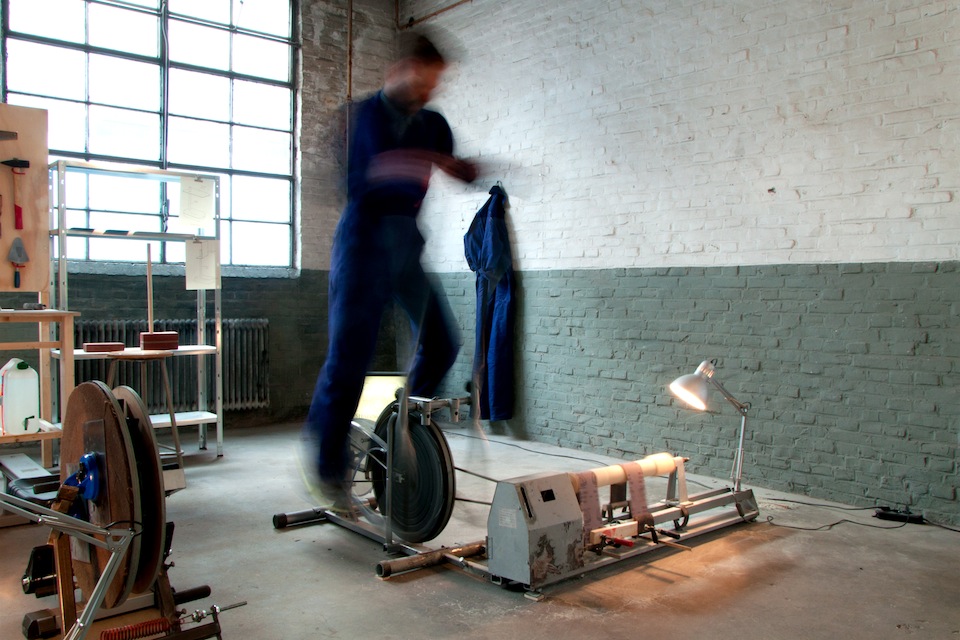
Shaping bodies by Bas Geelen and Erik Hopmans photos by Kim Costantino
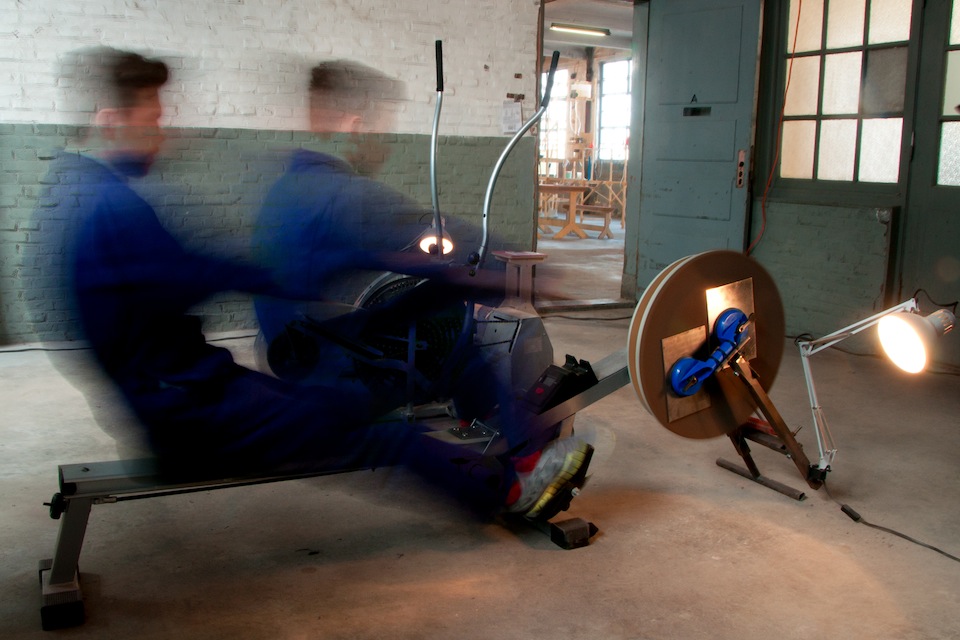
Shaping bodies by Bas Geelen and Erik Hopmans photos by Kim Costantino
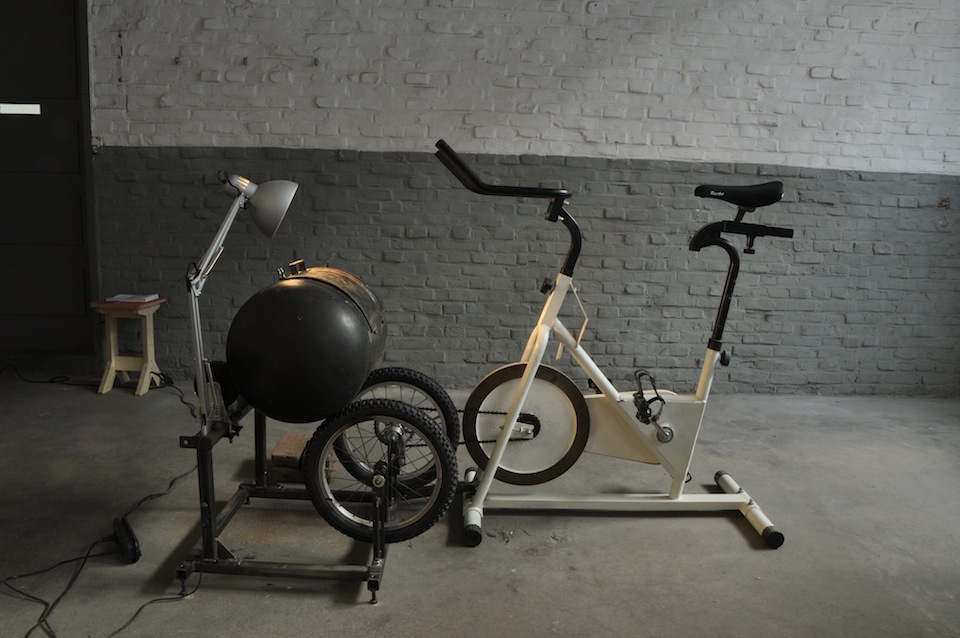
Shaping bodies by Bas Geelen and Erik Hopmans photos by Kim Costantino
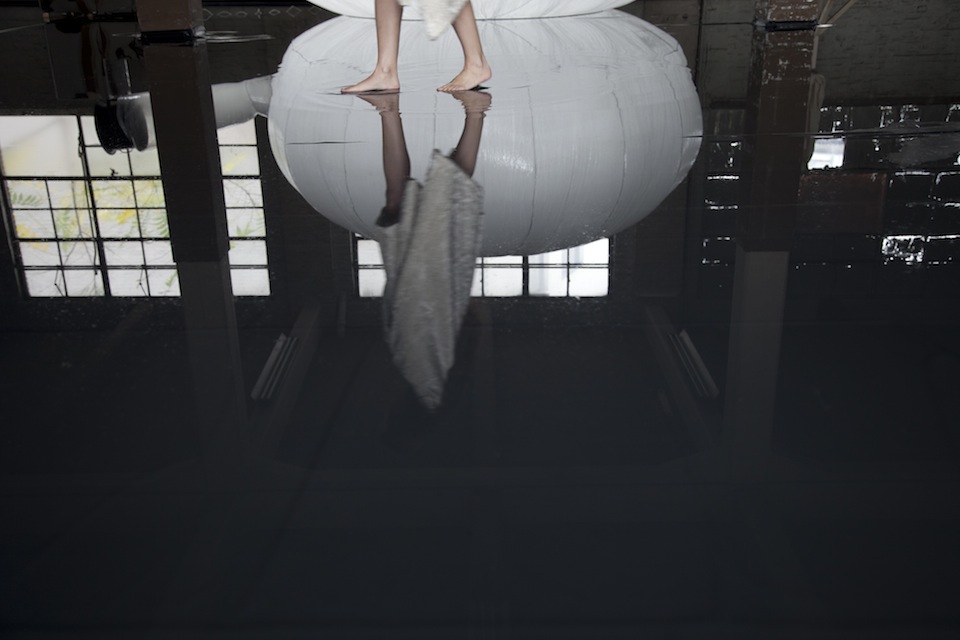
Urban spa – Harm Rensink
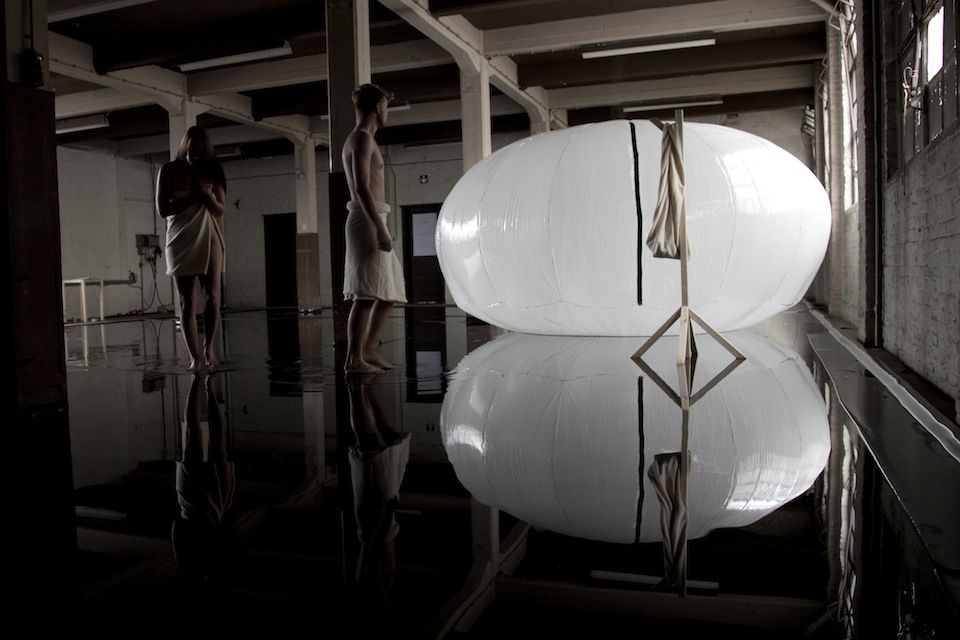
Urban spa – Harm Rensink
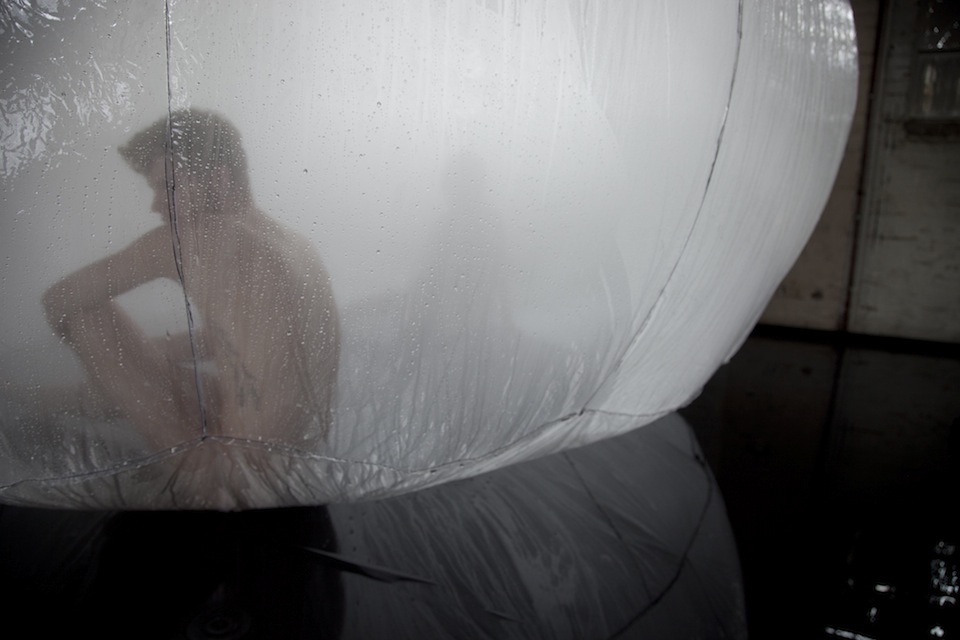
Urban spa – Harm Rensink
highlights #DDW2012
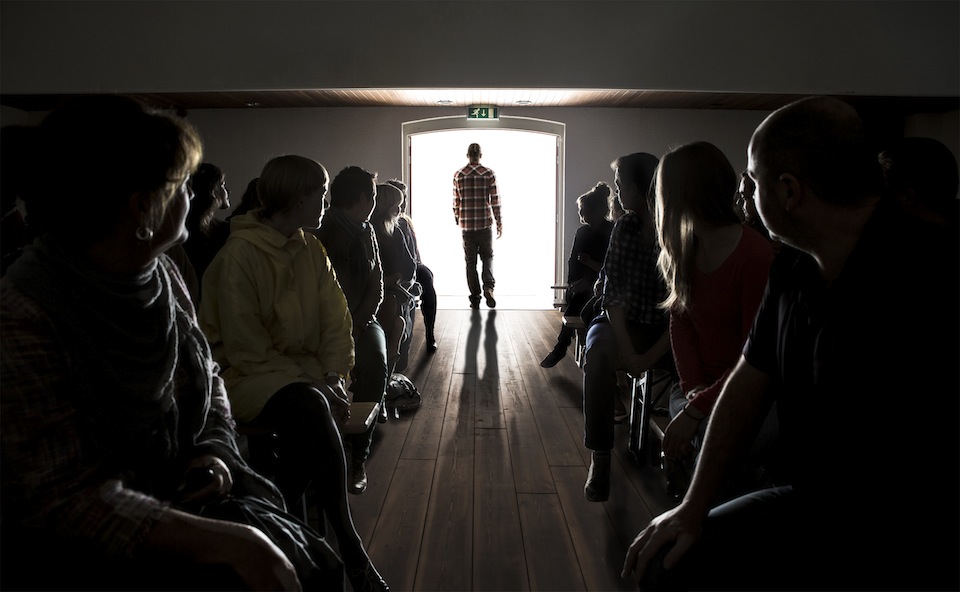
Curious Mind by atelier NL photo by Mike Roelofs
While the Design Academy Eindhoven continues to be DDW's central venue, an array of dynamic design events are taking place all over the city, stretching from Piet Hein Eek's galleries to the Klockgebouw area and the innovative Sectie C.
Lidewij Edelkoort presented the concept for MoBA 13 (next summer's Mode Biennale in Arnhem). She discussed the theme of Fetishism in Fashion in front of a large crowd at the Kolckgebouw on the first Sunday of DDW, outlining the various exhibitions and events she plans as the biennale's curator. The fashion festival will also mark the 60th anniversary of the fashion department at ArtEZ and inspire cultural events all over the city. ArtEZ's product design students showed their work in a creative installation at Schellensfabriek, another favorite DDW venue this year.
At the Design Academy, the graduation show attracted thousands of visitors interested in discovering the school's latest design talent. One highlight was a focus on creative textiles: Anouk Haegens innovated new materials for public spaces, Lio de Bruin processed sheets of leather using old needlework techniques, Barbara Medo was inspired by the iridescence of insects when designing glittering fashion fabrics, and Judith Jans veiled the head in protective new sunwear accessories.
However the most striking Design Academy work was not at the school: Atelier NL delved into the Academy's DNA in 'Curious Minds', mapping the progression of alumni since they have graduated. By tracing the paths of students with a red thread to illustrate how some students become independent designers while others work in the industry or in entirely other fields, Lonny van Ryswyck and Nadine Sterk have opened up a creative dialogue at the crossroads of design education and hybrid living. A series of beautiful films by Mike Roelofs visualized the project's investigation of how creative thinking thrives in different ways after leaving the education system.
Another alumni couple making waves are Maarten Kolk & Guus Kusters: their 'At Home' exhibition invited visitors into the intimacy of their own apartment where they hosted private tours of their recent projects. The design duo have steadily and quietly expanded their powerful body of work, always staying true to their exploration of nature while innovating design processes for textiles and ceramics. A colourcard sampled by the designers from the seascapes in the Zuiderzeemuseum collection will become the institution's new design palette, embedding its interior identity with its own very essence. This fascination with dissecting nature into design statements is intriguing many of their contemporaries, opening up an interesting and poetic chapter in design.
Philip Fimmano

"Leather Needlework" by Lio de Bruin photo Philip Fimmano
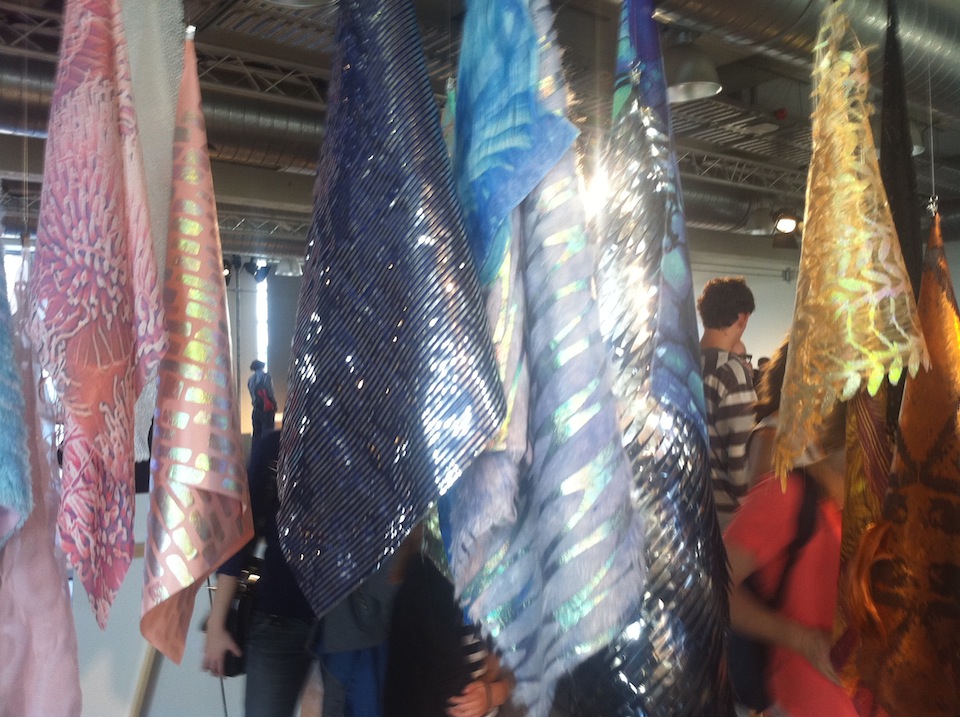
"Insected" by Barbara Medo photo by Philip Fimmano
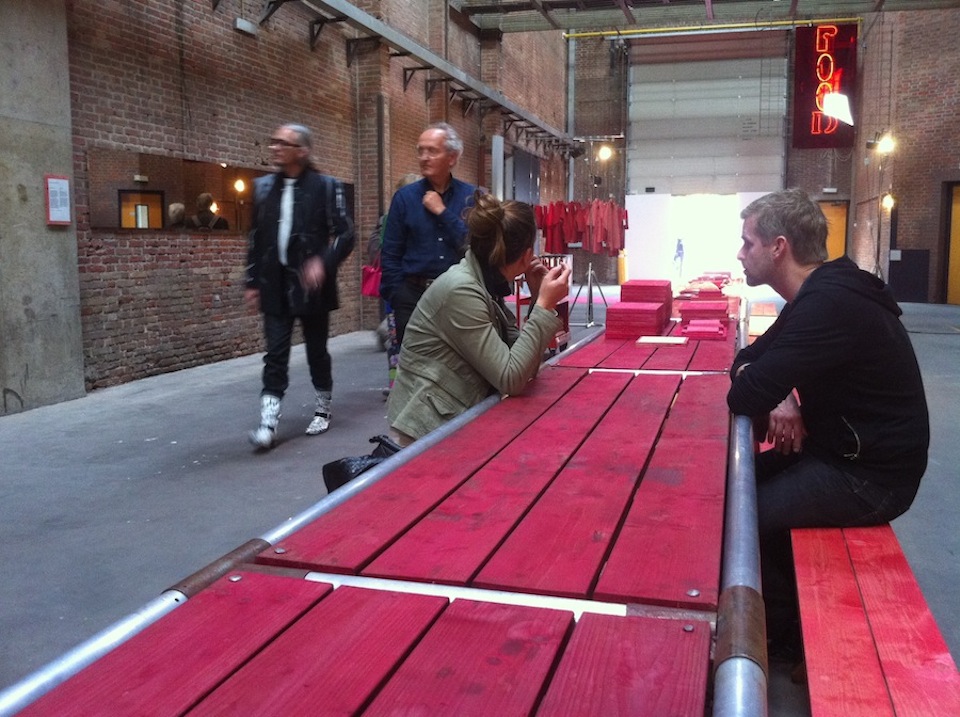
Rood by RENs photo by Philip Fimmano
Rood by RENs continues to explore the power of red, expanding its endeavors to include collaborations with designers such as Piet Hein Eek for this table and benches. During DDW 2012, a collaboration with Piet Bergman led to delicious red food being served to visitors. The designer's exploration of natural dyes is now also innovating industries such as carpeting.
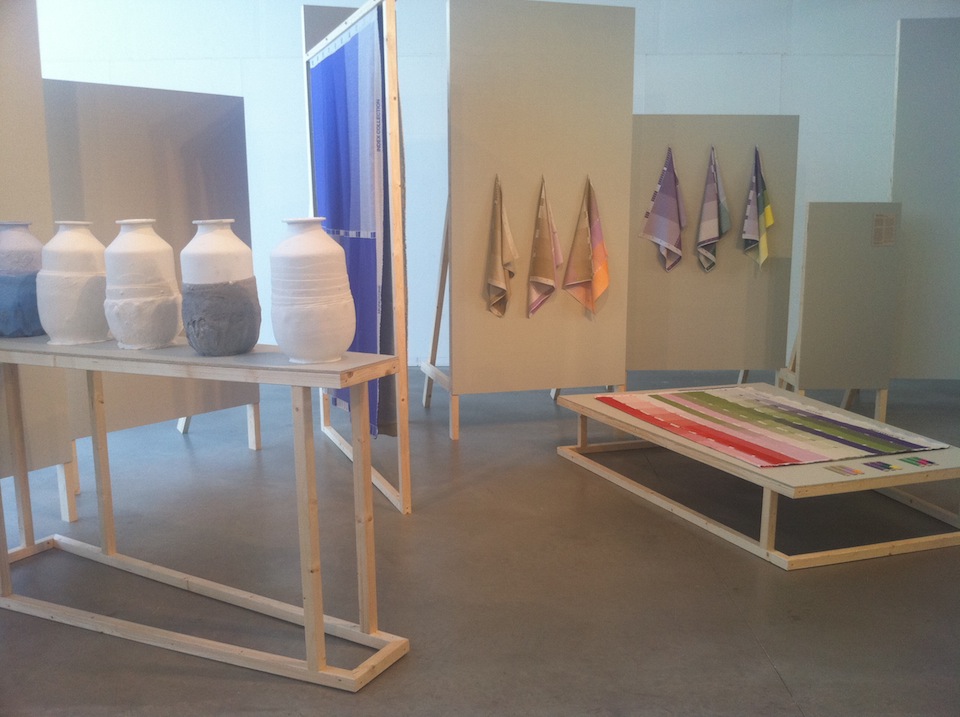
Dutch Invertuals photo by Philip Fimmano
For the third consecutive year, Wendy Plomp has curated one of Dutch Design Week's most elegant highlights.
Dutch Invertuals is a platform for young designers working each year on a particular theme art directed by Plomp. This latest installment sees designers focus on material and process, mapping colour and experimenting with treatments with sophisticated results.
[
International textile star Bart Hess set up a friendly pop-up environment where participants from the public were invited to work with him on his latest creations. Able to learn while also enjoying, visitors came to genuinely appreciate the intricacy of Hess' craft and his studio's time-consuming dedication - just like this young boy discovered while helping to make and model a garment that covers the body in thousands of fur-like pins.
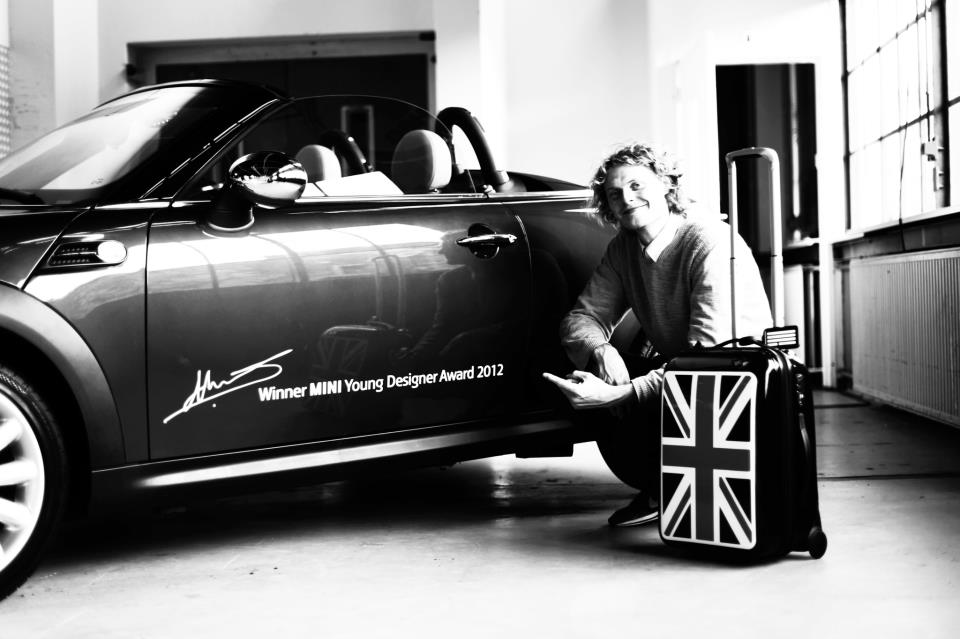
Borre Akkersdijk , winner of the MYDA
Our Studio is very pleased that an international jury guided by Hans Wijers named Borre Akkersdijk as the winner of the MYDA. Other finalists are; graphic design duo Pinar & Viola and Studio Formafantasma. Borres’ work puts several disciplines together, such as graphic design, animation and fashion. In addition, he places existing materials in new contexts and experiments with ancient techniques for new applications.
perfume tools #DDW2012
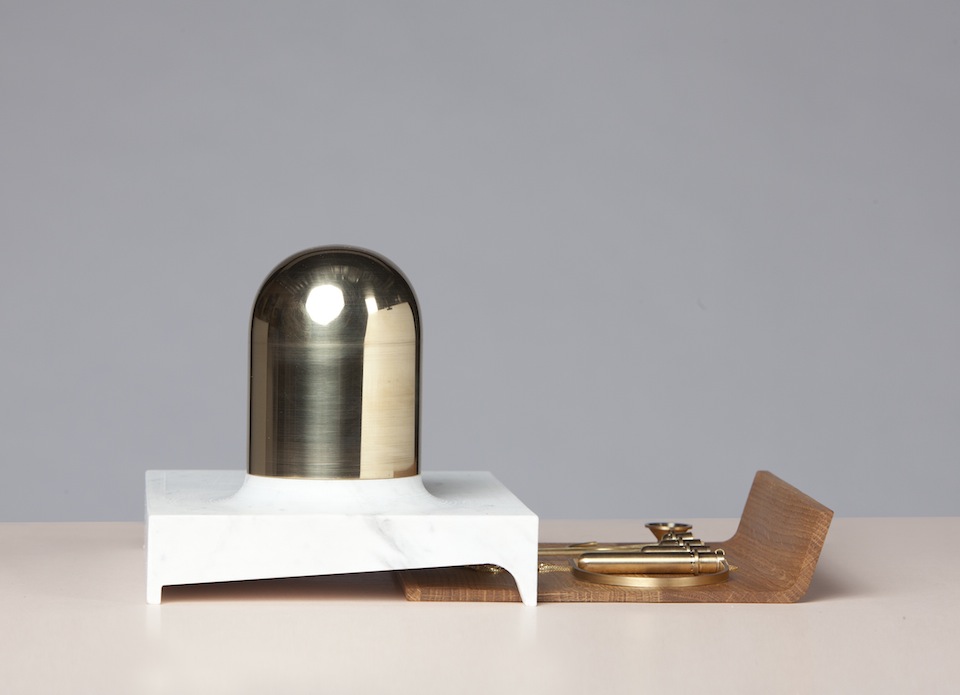
Jody Kocken Perfume Tools
Jules van den Langenberg is currently graduating at Design Academy Eindhoven. His fascination for how design arises has led to establishing a nomadic production house in which he initiates and curates design products and projects. In collaboration with designers, producers, craftsmen and experience experts of all kinds Jules carefully intertwines the potential, qualities and dreams of all individuals involved in co-creation processes.
During Dutch Design Week 2012 - a major event hosted in Eindhoven, The Netherlands, committed to showcasing the country's burgeoning design and technological innovators - Jules will share with us some of his discoveries and "coup de coeur".
Human kind has never managed to archive scent itself. We do however have records about historical scent containers like perfume pendants, crafted at times of romanticism. Mainly worn by the elite.
In contemporary form: Jody Kocken presents her 'Perfume Tools', a series of fragrance jewels that are meant for wearing scent.
Ironically the Design Academy Eindhoven graduate created the perfume tools because she has a perfume allergy, her project was thus born out of the personal wish to find a way to still wear fragrances. The tools she developed are of remarkable utilitarian aesthetics. Refined industrial objects. Jody's expresses her practical nature and describes the function of her works: "all tools can be attached to the opening of a perfume bottle. The tools absorb the scent and work as fragrance diffusers that can be worn. In places where the skin is most vulnerable, the precious metal is warmed up so that the scent can travel. Any skin contact with the perfumed liquid is thus avoided."
Jody hopes to make her work available for the world soon, preferably by further developing the project in collaboration with an established fashion label.
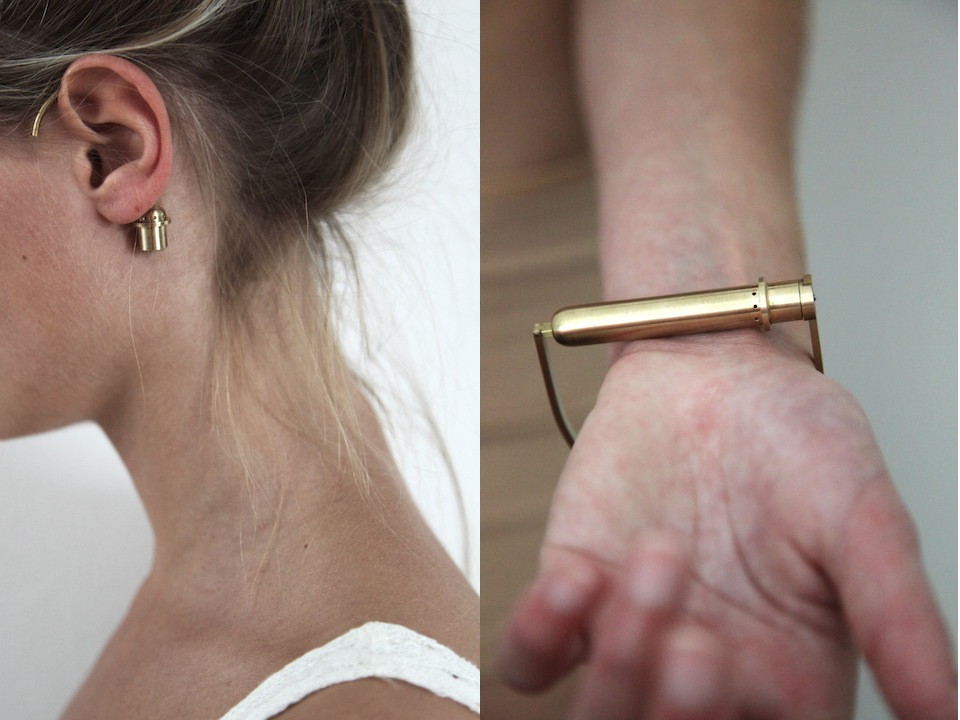
PerfumeTools by Jody Kocken
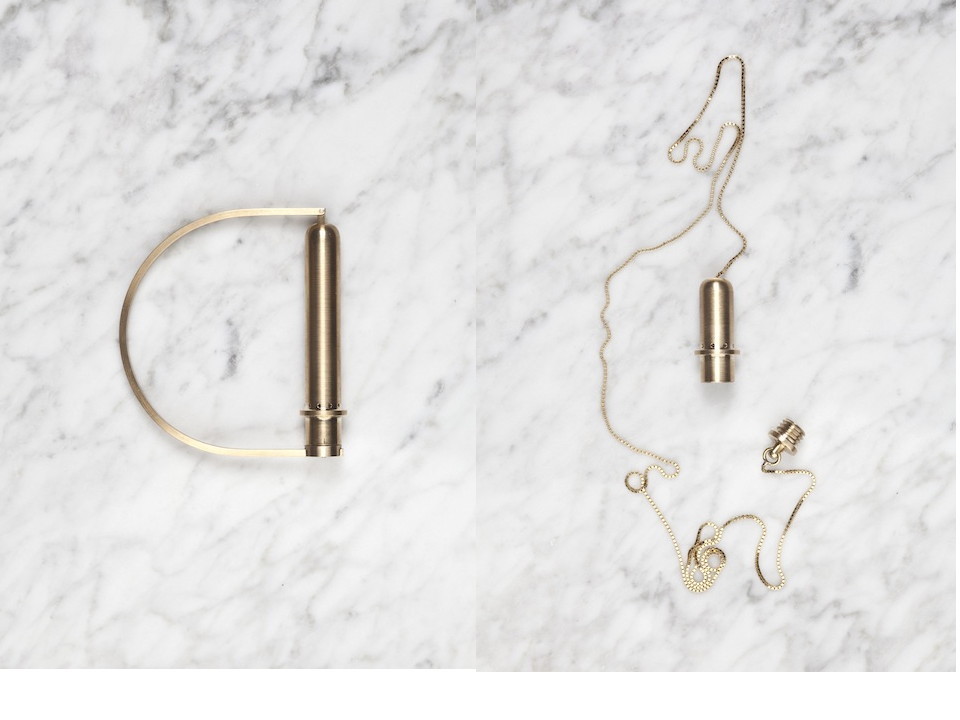
PerfumeTools by Jody Kocken
solar glassware #DDW2012
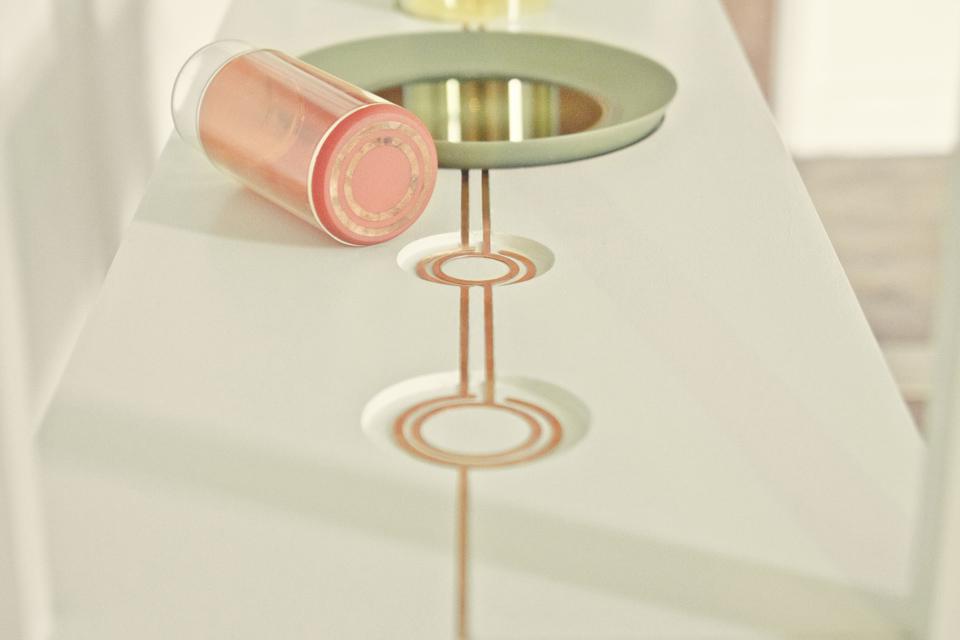
The Energy Collection by Marjan van Aubel
Jules van den Langenberg is currently graduating at Design Academy Eindhoven. His fascination for how design arises has led to establishing a nomadic production house in which he initiates and curates design products and projects. In collaboration with designers, producers, craftsmen and experience experts of all kinds Jules carefully intertwines the potential, qualities and dreams of all individuals involved in co-creation processes.
During Dutch Design Week 2012 - a major event hosted in Eindhoven, The Netherlands, committed to showcasing the country's burgeoning design and technological innovators - Jules will share with us some of his discoveries and "coup de coeur".
Marjan van Aubel is a designer, coming from a family of chemists, who managed to merge functionality with innovation and aesthetics in her project "the energy collection" : a series of glassware that collects light energy from its direct surrounding. With her specific material use she won the ‘Doen Materiaalprijs’ award this week, an award that is created to promote the sustainable design practice.
Van Aubel developed a system that is based on solar cell technology that is integrated in glass objects. Whether you're drinking from one of the glasses, or put it aside, electricity is constantly being generated. Thus, an everyday object becomes a solar cell. The tableware comes with a specially designed cupboard, which is also the battery. At the bottom of each piece of tableware there are copper rings that correspond with the electronic circuit that is visible inside the cupboard. Through this connection, the object releases its collected energy to the cupboard where it's stored or will be used to for example charge your phone or make a light burn.
With her project Van Aubel introduces us to a domestic world in which we would be surrounded by effortless sustainability.
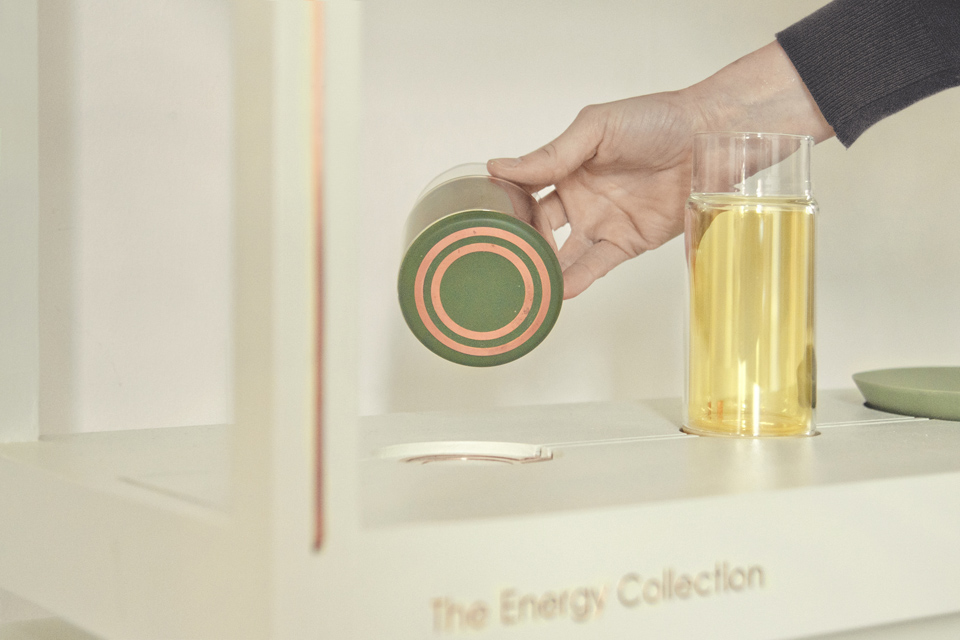
The Energy Collection by Marjan van Aubel
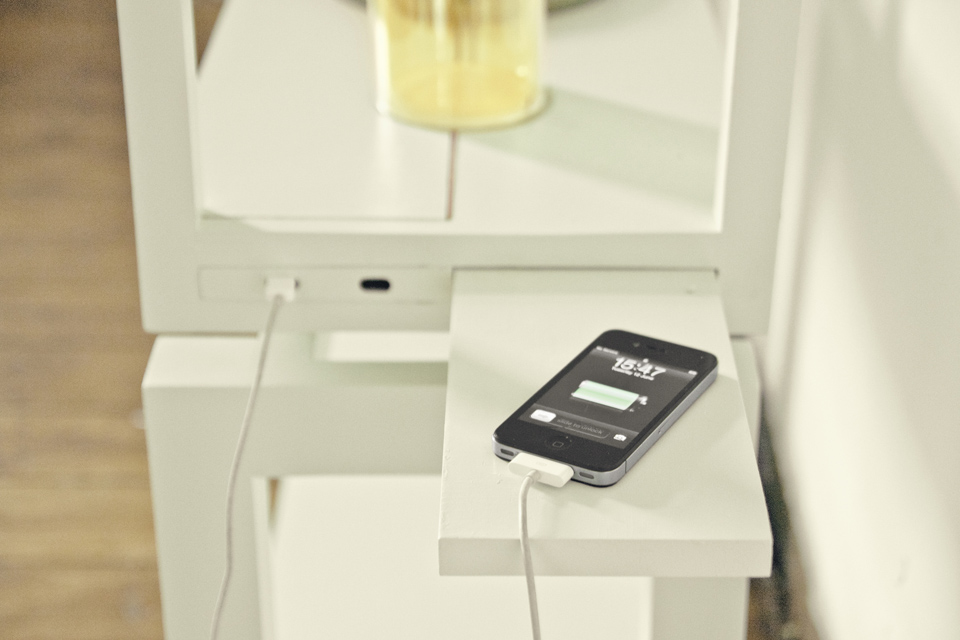
The Energy Collection by Marjan van Aubel
the value of design #DDW2012
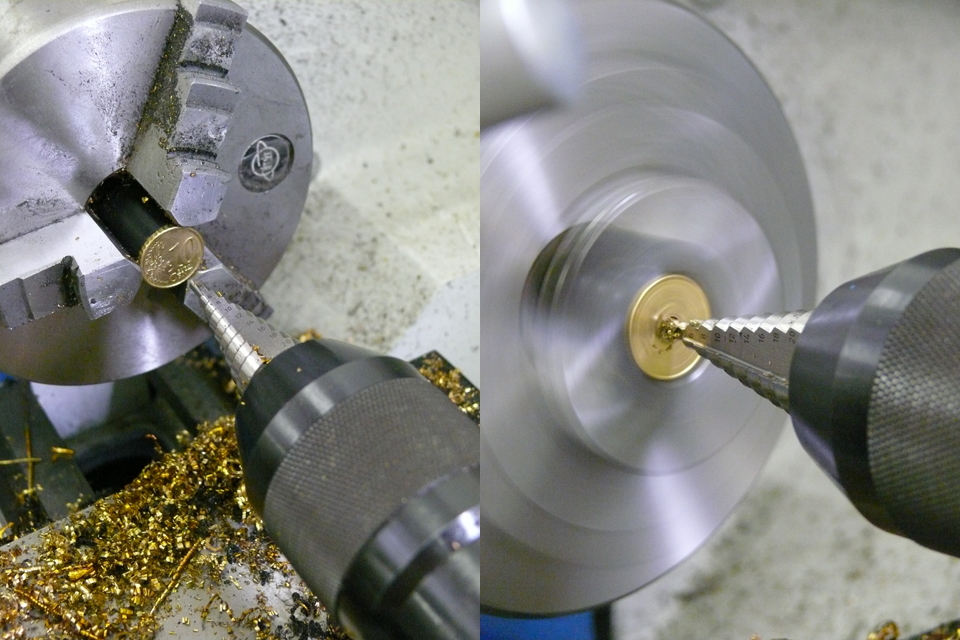
crown jewels by Lex Pott
Jules van den Langenberg is currently graduating at Design Academy Eindhoven. His fascination for how design arises has led to establishing a nomadic production house in which he initiates and curates design products and projects. In collaboration with designers, producers, craftsmen and experience experts of all kinds Jules carefully intertwines the potential, qualities and dreams of all individuals involved in co-creation processes.
During Dutch Design Week 2012 - a major event hosted in Eindhoven, The Netherlands, committed to showcasing the country's burgeoning design and technological innovators - Jules will share with us some of his discoveries and "coup de coeur".
The current economic situation has led to a changing relationship between designer, producer and consumer; the exhibition ‘Objects for sale’ reacts on this phenomenon. The featured works of several Dutch designers are created with three price categories in mind.
The exhibited products are sold for less than 50 euros, 50 to 500 euros or more than 500 euros. ‘Objects for sale’ focuses on the value of things.And what value design has.
One of the participants is Lex Pott who created several rings made out of existing euro coins. An everyday object is reshaped and becomes a fun and critic response to the financial state of Europe.
The project shows the transformation of function and value related to the material. Coins are reduced to an outline showing their new value as being jewelry. This everyday object is reshaped and repurposed to create an entirely different item using a small intervention.
Also participating is the design collective "de Intuïtiefabriek" who present "Sum project": porcelain tableware in which the quantity of raw materials, the amount of labor put into a product and the different finishing techniques define the price of the objects.
The consumer gets insight in why thing cost what they cost and assemble / curate their own tableware.
These two projects from the 'Objects for Sale' exhibition represent an open attitude towards the public by communicating the development of their work as well as their working methods. By doing this the designers define the value of their profession.
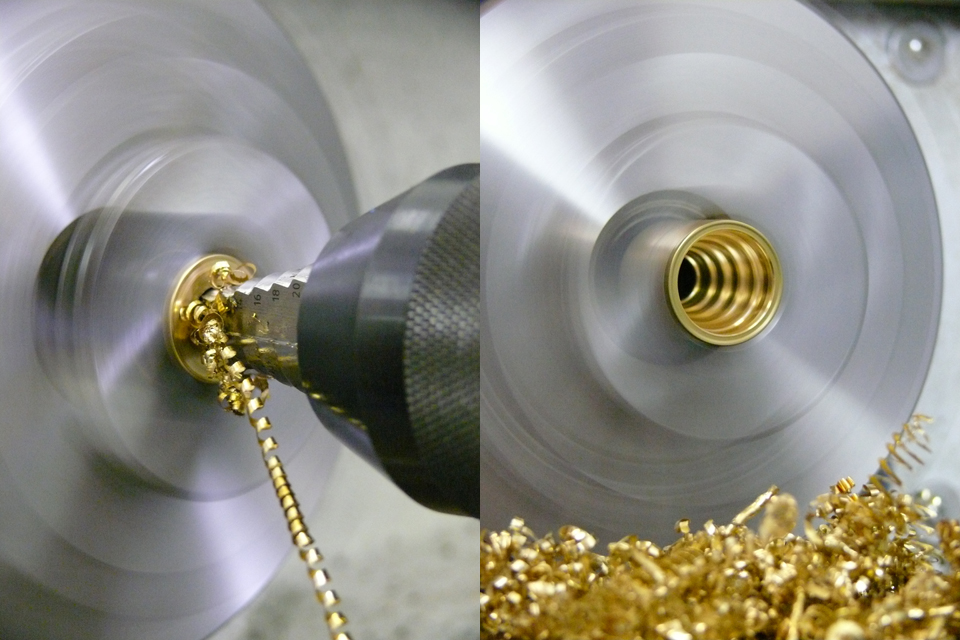
crown jewels by Lex Pott
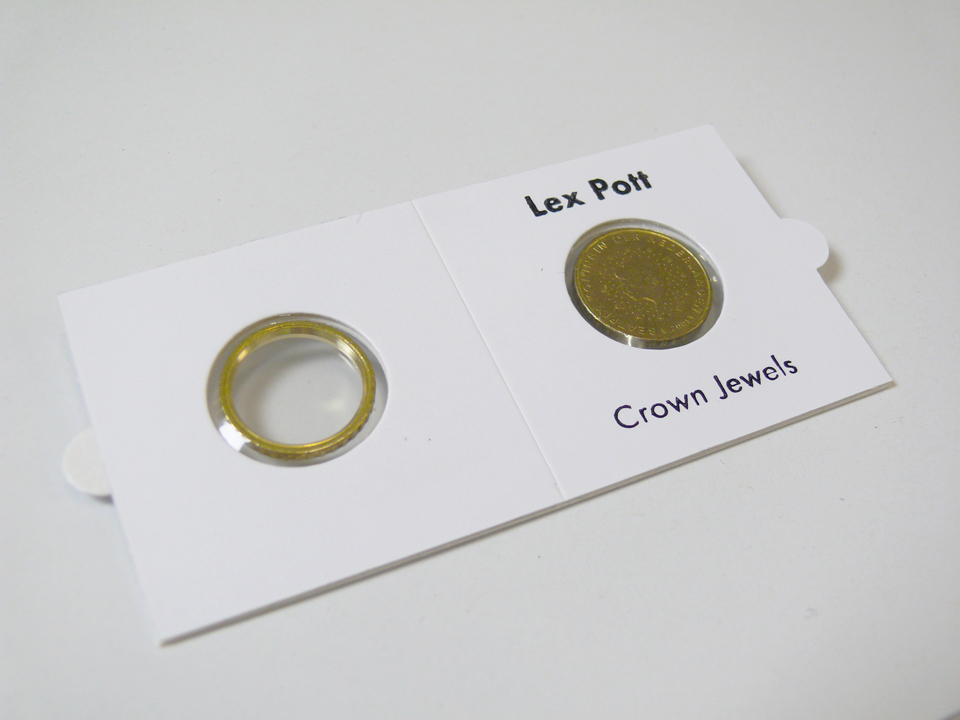
crown jewels by Lex Pott
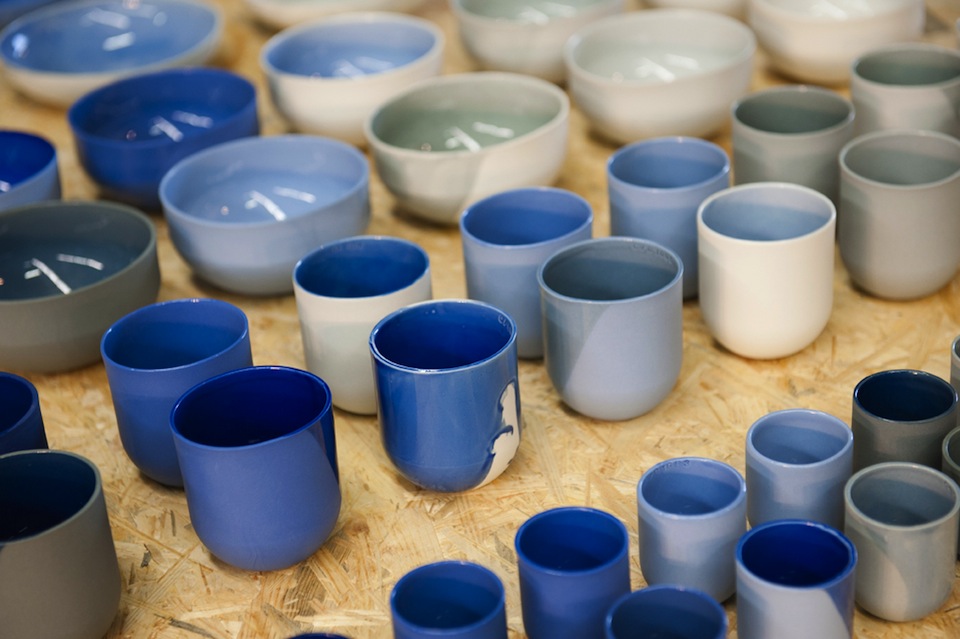
Sum project by de Intuïtiefabriek - photo by Amy Kouwenhoven
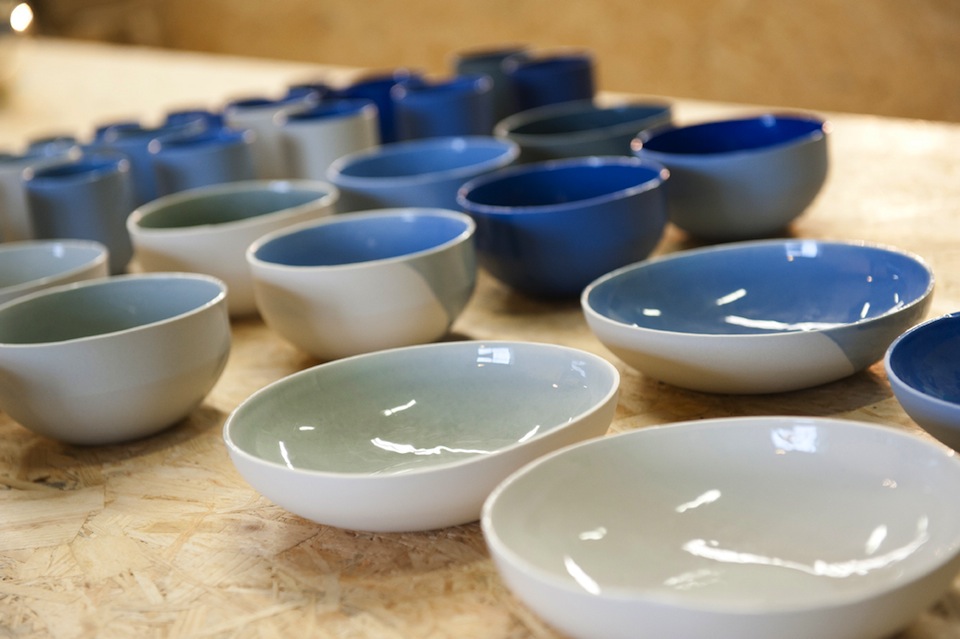
Sum project by de Intuïtiefabriek - photo by Amy Kouwenhoven

